Dr Rajiv Desai
An Educational Blog
FEVER
FEVER:
_
_
Prologue:
“Humanity has but three great enemies: fever, famine, and war. Of these, by far the greatest, by far the most terrible, is fever.” – Sir William Osler. For last 20 years, I have been treating fever and my patients included everybody from poor to wealthy; from honest to corrupt; and from politician to bureaucrat. I fully agree with Sir William Osler. No matter how high or low socioeconomic status and no matter how good or bad the person is, fever make them very helpless, very fearful, very vulnerable and very apprehensive. I have seen patients coming to hospital in ambulance with fever for one day; relatives pleading to save life and next day patients are fine & discharged. Fever is a common complaint leading families to seek medical attention. When I wrote on “Heat illness”, I thought I would follow it up with article on fever but inadvertently I missed it. Both heat illness and fever have elevated body temperature but besides that, there is nothing common between them.
_
Fever has been recognized as one of the hallmarks of clinical disease since ancient times. Accurate recording of body temperature became possible in the eighteenth century when the Dutch inventor Fahrenheit introduced the thermometer. In 1868, the German physician Wunderlich emphasized the clinical usefulness of recording body temperature based on his observations of 25,000 patients. Elevated body temperature accompanies infectious as well as noninfectious diseases and holds a central role in the definition and pathogenesis of heat-related illnesses such as heat stroke. The pathogenesis, pathophysiology, and purpose of fever are becoming well delineated. Most fevers are caused by infection, although many disease states can be responsible (e.g., central nervous system lesions, neoplasms, endocrine abnormalities, connective tissue diseases).
_
It’s very important to understand that a fever is a normal response of the body to foreign invaders like bacteria and viruses. The body recognizes a foreign invader and the brain acts to increase body temperature to make things unsuitable for the foreign invader. Most bacteria can only tolerate a certain temperature range and once outside of it, do not survive. It’s important to understand that fever is not the result of damage to the body by germs; the body creates fever in response to exposure to germs. Fever has been shown to increase levels of antiviral substances the body produces and also minerals like copper and zinc, the combination of these and other changes help the body’s immune response ward off infection.
_
A fever is elevated body temperature. A temperature of up to 102°F (38.9°C) can be helpful because it helps the body fight infection. Most healthy children and adults can tolerate a fever as high as 103°F (39.4°C) to 104°F (40°C) for short periods of time without problems. Children tend to have higher fevers than adults. The degree of fever may not indicate how serious the illness is. With a minor illness, such as a cold, you may have a temperature, while a very serious infection may cause little or no fever. It is important to look for and evaluate other symptoms along with the fever.
_
In some diseases the word ‘fever’ is incorporated into the common names, such as in puerperal, scarlet, typhoid, and yellow fevers, indicating that a rise in temperature is associated with the condition. Before the advent of mass vaccination programs, those with infectious fevers were taken in to isolation hospitals, often called fever hospitals. The word ‘fever’ is sometimes used in other contexts, such as ‘fever pitch’, when an individual, group, or crowd (such as a football crowd) becomes over-excited or agitated.
_
Thermoregulation into organisms runs along a spectrum from endothermy to ectothermy. Endotherms create most of their heat via metabolic processes, and are colloquially referred to as warm-blooded. Ectotherms use external sources of temperature to regulate their body temperatures. They are colloquially referred to as cold-blooded despite the fact that body temperatures often stay within the same temperature ranges as warm-blooded animals. Homeothermy and poikilothermy refer to how stable an organism’s temperature is. Most endothermic organisms are homeothermic, like mammals. However, animals with facultative endothermy are often poikilothermic, meaning their temperature can vary considerably. Similarly, most fish are ectotherms, as all of their heat comes from the surrounding water. However, most are homeotherms because their temperature is very stable. We humans are warm-blooded animals. In fact, with a few exceptions, all mammals and birds are warm-blooded, and all reptiles, insects, arachnids, amphibians and fish are cold-blooded. Warm-blooded creatures try to keep the inside of their bodies at a constant temperature. In other words, warm-blooded species tries to maintain core body temperature independent of environmental temperature. The human body has the remarkable capacity for regulating its core temperature somewhere between 98°F and 100°F when the ambient temperature is between approximately 68°F and 130°F. They do this by generating their own heat when they are in a cooler environment, and by cooling themselves when they are in a hotter environment. Cold-blooded creatures take on the temperature of their surroundings. They are hot when their environment is hot and cold when their environment is cold. In hot environments, cold-blooded animals can have blood that is much warmer than warm-blooded animals.
_
Do cold-blooded animals develop fevers if sick?
Yes, some cold-blooded creatures do develop fevers, in a neat way. They can’t control their body temperatures with internal mechanisms as we do. So, lizards, for example, deliberately move into the sun to raise their body temperature and thus create a fever when they have an infection. They usually get well, then. Moreover, if we stop them from basking, they will likely die. Fevers help the body fight infection. The immune system gets more active when it’s warmer because chemical changes quicken with higher temperatures.
_
Fever in non-human warm blooded animals:
Fever is an important feature for the diagnosis of disease in domestic animals. The body temperature of animals, which is taken rectally, is different from one species to another. For example, a horse is said to have a fever above 101.0 °F (38.3 °C). In species that allow the body to have a wide range of “normal” temperatures, such as camels, it is sometimes difficult to determine a febrile stage.
_
Evolution and History of fever:
_
_
By the time of Hippocrates, several patterns of fever had been recognized: these included the tertian (every 48 hours) and quartan (every 72 hours) fevers caused by malaria. Over the succeeding centuries a general consensus arose regarding constitutes a fever, the distinction between fever as a symptom and fever as a disease, an elaborate classification scheme for multiple types of fever, hypotheses as to the causes of fever and various methods for diagnosing and treating fevers. In the 10th century, the Persian physician Akhawaynī created the concept of a fever curve – fever against time as a diagnostic aid. Concern about childhood fevers is long-standing in our history. Fever superstitions and ancient fever remedies are ribboned throughout all cultures. For example, Romans would trim the fingernails of those affected with fever. Using wax to attach the fingernail clippings to a neighbor’s front door was thought to transmit the fever to that household. The ancient Greeks, who regarded disease as an imbalance of ”humors,” believed fever cured the sick by cooking the bad humors and helping the body get rid of them. The notion of fever as beneficial persisted for more than 2,000 years, and countless patients were actually treated with ”fever therapy” to aid their recovery from such ailments as syphilis, tuberculosis and even mania.
_
The formula to convert temperature recorded on Fahrenheit scale into Celsius scale is as follows:
_
Fahrenheit – Celsius conversion table:
|
Fahrenheit-Celsius conversion table |
|
| Fahrenheit | Celsius |
| 105 | 40.5 |
| 104 | 40.0 |
| 103 | 39.4 |
| 102 | 38.9 |
| 101 | 38.3 |
| 100 | 37.7 |
| 99 | 37.2 |
| 98 | 36.6 |
| 97 | 36.1 |
| 96 | 35.5 |
_
Normal body temperature of humans:
Normal body temperature varies somewhat from one individual to another but displays a general range and pattern around the “normal” temperature of 98.6°F. But that is only an average taken from a normal range that the majority of the population falls into. There are some exceptions. The normal temperature range for most people is 96.0°F – 99.6°F. Measured in the mouth, body temperature is close to 37°C (98.6°F), and does not usually vary by more than 1.5°C, although a rise up to 40°C can occur transiently in strenuous muscular exercise. It is lowest during sleep, is slightly higher in the awake but relaxed state, and rises with activity. Early morning body temperature may be as low as 97°F, and as high as 99.3°F in the afternoon hours, yet still be considered normal. Higher temperatures may be observed in healthy people. The normal range of human body temperature varies due to an individual’s metabolism rate; the higher (faster) it is the higher the normal body temperature or the slower the metabolic rate the lower the normal body temperature. Other factors that influence normal body temperature include age, race, physical activity, strong emotion, postprandial state, pregnancy or ovulation, endocrine disorders, clothing, and ambient temperature and humidity. In the second part of a woman’s menstrual cycle, her temperature may go up by 1 degree or more as during ovulation the temperature peaks; also during pregnancy it is slightly higher than normal. Children’s temperatures are also variable due to their small body size and activity level. A raised temperature is not always a fever. For example, the temperature of a healthy person rises when he or she exercises, but this is not considered a fever, as the set-point is normal. On the other hand, a “normal” temperature may be a fever, if it is unusually high for that person. For example, medically frail elderly people have a decreased ability to generate body heat, so a “normal” temperature of 37.3 °C (99.1 °F) may represent a clinically significant fever.
_
Normal body temperature can be misleading; different areas of the body are different temperatures. For example, the liver is usually in the 105°F or above range, which is essential for certain enzymatic reactions that take place like detoxification of chemicals. Skin temperature is usually much cooler, in the 92°-95°F range. Essentially, it is true that the measured body temperature always depends on where it is measured. Therefore, contrary to popular consensus, there is no simple ‘normal temperature’. Roughly speaking, a distinction is made between a core temperature and a surface, where the surface temperature is measured at the skin surface and is a mixed temperature between the body’s core temperature and the ambient temperature. The core temperature is measured by inserting a thermometer into a body cavity, which yields the temperature of the mucous tissue.
_
In health, body temperature is regulated around a set point of 37 ± 1°C, and a circadian temperature rhythm exists in which the highest temperature of each day occurs around 6 p.m. The variance between the highest and lowest core temperature in a given day is usually no more than 1° to 1.5°C. This circadian rhythm may differ among individuals but should be consistent in each person. Relative to the core (blood) temperature, oral temperature tends to be about 0.4°C lower and axillary temperature up to 1°C lower, while rectal temperature, probably because of fecal bacterial metabolism, averages about 0.2°C higher. However, it is very difficult to measure blood temperature in clinical practice; hence oral and rectal temperatures are regarded as core body temperature.
_
Oral temperatures, which are the most convenient type of temperature measurement, is at 37.0 °C. This is the accepted standard temperature for the normal core body temperature. Axillary temperatures are an external measurement taken in the armpit or between two folds of skin on the body. This is the longest and most inaccurate way of measuring body temperature, the normal temperature falls at 97.6 °F or 36.4 °C. Rectal temperatures are an internal measurement taken in the rectum, which fall at 99.6 °F or 37.6 °C. It is the least time consuming and most accurate type of body temperature measurement, being an internal measurement. But it is definitely, by far, not the most comfortable method to measure the body temperature of an individual.
_
Temperatures can be taken orally with a mercury thermometer, usually taken under the back of the tongue for 3-5 minutes. This is the standard place for temperature taking, you may take the temperature rectally with the same instrument, but rectal temperatures are usually one deg F higher than oral. This represents a temperature closer to body core temperature. Axillary region, or under the arm, is the least accurate area. It is usually 1°F cooler here compared to orally. A good general rule is if taken rectally, subtract one degree F and if taken under the arm add one degree F. Ear canal temperatures can also be taken with an infrared probe. These devices have become very popular. One potential problem is if an existing ear infection/condition (otitis media) is present, it could give false information. The best way to take ear temperatures is to take three readings and average the readings.
_
The first systematic measurements of human body temperature were performed by the German physician Carl Wunderlich. In 1861 he measured the temperatures of one million healthy individuals (a sample size that seems too large to be believed). The average value was reported as 37 degrees Celsius. When converted this value becomes 98.6 degrees Fahrenheit. In 1992 Mackowiak, Wasserman, and Levine measured the body temperatures of 65 men and 65 women and came up with a value of 36.8 °C (98.2 °F). The findings of Sund-Levander, et al. are summarized in the table below.
_
|
men |
women |
overall |
|
|
oral |
35.7–37.7 °C |
33.2–38.1 °C |
33.2–38.2 °C |
|
rectal |
36.7–37.5 °C |
36.8–37.1 °C |
34.4–37.8 °C |
|
tympanic (ear canal) |
35.5–37.5 °C |
35.7–37.5 °C |
35.4–37.8 °C |
|
axillary (armpit) |
35.5–37.0 °C |
_
Definition of fever:
Fever is a regulated elevation of core body temperature in conjunction with an increase in the hypothalamic set point as a consequence of disease or drugs. Fever is a complex physiologic response to disease mediated by pyrogenic cytokines and characterized by a rise in core temperature, generation of acute phase reactants, and activation of immune systems. Infection is the commonest cause of fever. Fever is a symptom of a disease and not disease itself. Fever is one of the most common reasons that parents seek medical attention for their children. Parental concerns arise in part because of the belief that fever is a disease rather than a symptom or sign of illness. Its routine management is the bread and butter of pediatric practice. Experts stress that a fever isn’t an illness; it’s a response, probably an evolutionary adaptation to help fight infection. Setting the body’s thermostat (the hypothalamus in the brain) a few degrees higher slows the reproduction of bacteria and viruses and boosts white blood cells. Hyperthermia is an unchanged setting of the hypothalamic set point in conjunction with an uncontrolled increase in body temperature that exceeds the body’s ability to lose heat. The commonest cause of hyperthermia is heat illness caused by exposure to hot environment. Hyperpyrexia is a fever when core body temperature exceeds 41.5°C (> 106.7°F); it can occur with severe infections, but more commonly occurs with central nervous system (CNS) hemorrhages or trauma. Because fever is a regulated response, unlike hyperthermia, it does not rise inexorably, but appears to be capped at around 42°C, before it is able to cause cellular damage. Brain damage from a fever generally will not occur unless the fever is over 107.6 °F (42 °C). Untreated fevers caused by infection will seldom go over 105 °F unless the child is overdressed or trapped in a hot place.
_
_
_
So in a nutshell, normal body temperature is around 37° C (98.6° F). Body temperature varies during the day. The lowest body temperature occurs in the early morning hours (2 a.m. to 4 a.m.) and the highest temperature occurs in the late afternoon. Body temperature may also increase as a result of overdressing or strenuous exercise, especially in hot weather. A fever is when the oral temperature is 100° F or higher in the evening, and/or 99 deg F or more in the morning.
_
Etymology:
Pyrexia is from the Greek pyr meaning fire. Febrile is from the Latin word febris, meaning fever, and archaically known as ague. Fever means elevated body temperature or pyrexia.
_
Epidemiology:
Incidence of fever is not known precisely, but fever is one of the most common presenting symptoms in clinical practice. About 5% of people who go to an emergency room have a fever. Fevers are the main reason for one-third of calls and visits to pediatricians.
_
How do you check fever without thermometer?
Parents usually put their hand on forehead of child to determine whether child has fever. This is unscientific. Skin temperature is average between core temperature and ambient temperature. In fact in cold weather or air-conditioned room, skin temperature can be quite low and misleading. I must admit that I have been proven wrong many times by touching the skin of a patient. I felt that the patient has no fever but on oral temperature measurement by thermometer, it was 102 deg F. A study has found that mothers who thought that their kids had a fever without using a thermometer, or had a subjective fever, were only right about half the time. Also, do not rely on the “back of the hand test.” Although this is commonly used to distinguish temperature, putting your own hand to your head will not be able to define relative temperature. It is also inaccurate if done by someone else since their own body temperature can differ from your own. Does the patient feel warm or hot? Surprisingly, you may be right about eighty percent of the time if you rely on your patient’s feeling warm to determine if he has a fever. At the end of the day, whenever fever is suspected by patient or doctor or relatives, please check fever by thermometer.
_
Diagnosis of fever:
A fever is usually diagnosed using a thermometer. Medical thermometers are used for measuring human body temperature, with the tip of the thermometer being inserted either into the mouth under the tongue (oral or sub-lingual temperature), under the armpit (axillary temperature), or into the rectum via the anus (rectal temperature). A variety of different thermometers are available. Glass thermometer should not be used since they can break and release mercury, which is toxic. Digital (electronic) thermometers can and should be used in place of glass thermometers rectally, orally, and under the arm in all age groups. Ear thermometers measure the temperature of the eardrum with an infrared sensor. The tip of the thermometer is simply positioned in the ear channel and results are obtained in one second! A basal thermometer is a thermometer used to take the basal (base) body temperature, the temperature upon waking. Basal body temperature is much less affected than daytime temperature by environmental factors such as exercise and food intake. This allows small changes in body temperature to be detected, such as those caused by ovulation or changes in thyroid function.
_
What is the difference between a basal thermometer and a normal thermometer?
1. A normal Thermometer will measure in degrees Fahrenheit (or Celsius), and normally measure in two-tenth increments, while a Basal Thermometer will measure in 10ths of a degree (for Fahrenheit).
2. A Basal Thermometer is more accurate, and more reliable than normal glass thermometers.
3. Digital Basal Thermometers are much easier to read than glass ones.
4. A Basal Thermometer is quicker too, they normally only take 30-60 seconds to take a reading
5. A Digital Basal Thermometer will also remember the temperature for you so you can chart it later.
_
How to take a temperature:
Most thermometers have digital readouts. Some take the temperature quickly from the ear canal and can be especially useful for young children and older adults. Other thermometers can be used rectally, orally or under the arm (axillary). If you use a digital thermometer, be sure to read the instructions so that you know what the beeps mean and when to read the thermometer. Because of the potential for mercury exposure or ingestion, glass mercury thermometers have been phased out and are no longer recommended. However, in developing country like India, the use of glass mercury thermometer is widespread.
_
The glass mercury thermometer:
_
_
Electronic digital thermometer:
_
How do I take a temperature?
•Shake down the mercury in the thermometer, so that it falls below the 35°C line, or press reset on a digital thermometer.
•In older children or adults, the thermometer may be placed under the tongue, but great care must be taken to avoid biting or breaking the bulb. In younger children, take rectal temperature.
•Leave in place for at least 2 minutes for a mercury thermometer or until it beeps for a digital thermometer.
•Read the thermometer by gently rotating it between your thumb and forefinger. The temperature is measured by looking at the level of the silver bar which runs up the middle of the thermometer. If you cannot read this type of thermometer, you can buy a thermometer which has a digital read-out on the side.
•Wipe the thermometer with antiseptic or lukewarm soapy water. Do not use hot water or you will break the thermometer.
•Battery operated tympanic (ear) thermometers are also available. These are placed gently in the ear canal and read the temperature from the ear drum. The advantage of tympanic thermometers is that they are very quick, giving a reading in a few seconds; however, they are not always accurate.
_
Rectally (for infants):
The American Academy of Pediatrics recommends rectal temperature measurements for children under 3 years of age, as this gives the most accurate reading of core temperature. To take your child’s temperature rectally:
•Place a dab of petroleum jelly or other lubricant on the thermometer bulb.
•Lay your child on his or her stomach.
•Carefully insert the bulb one-half inch to one inch into the rectum.
•Hold the thermometer and child still for about one minute, until you hear a beep. To avoid injury, don’t let go of the thermometer while it’s inside your child.
•Remove the thermometer and read the temperature as recommended by the manufacturer.
•Label the rectal thermometer so it’s not accidentally used in the mouth.
_
Taking a rectal temperature is also an option for older adults when taking an oral temperature is not possible. A rectal temperature reading is generally 1 degree Fahrenheit (about 0.5 degree Celsius) higher than an oral reading.
_
Orally:
To take your temperature orally:
•Place the thermometer bulb under your tongue
•Close your mouth for the recommended amount of time or until you hears a beep, usually one minute.
Oral temperature taken after smoking or drinking a hot fluid may give you a false high temperature reading. After drinking or eating cold foods or fluids, an oral temperature may be falsely low. Lower oral readings are probably attributable to mouth breathing, a particularly important factor in patients with respiratory infections and rapid breathing.
_
Under the arm (axillary):
Although it’s not the most accurate way to take a temperature, you can also use an oral thermometer for an armpit reading:
•Place the thermometer under your arm with your arm down.
•Hold your arms across your chest.
•Wait about one minute or until you hear a beep.
•Remove the thermometer and read the temperature.
_
To take your child’s axillary temperature, have the child sit in your lap, facing to the side. Place the thermometer under your child’s near arm, which should be against your chest. An axillary reading is generally 1 degree Fahrenheit (about 0.5 degree Celsius) lower than an oral reading.
_
As axillary temperature measurement is least accurate, avoid it in all age groups.
_
Thermometry data of a typical digital thermometer:
|
Where used: |
Normal range |
Normal range |
Contact thermometer |
|
Rectum |
36.2 |
37.7 |
10-60 |
|
Vagina |
36.0 |
37.5 |
– |
|
Orally (buccally) |
35.5 |
37.1 |
30-60 |
|
Orally (sublingually) |
35.7 |
37.3 |
30-60 |
|
Axillary |
35.2 |
36.7 |
30-60 |
|
Ear |
35.8 |
37.1 |
1 |
_
Normal oral, rectal, tympanic and axillary body temperature in adult men and women: a systematic literature review:
A study was conducted to investigate normal body temperature in adult men and women. A systematic review of data was performed. Searches were carried out in MEDLINE, CINAHL, and manually from identified articles reference lists. Studies from 1935 to 1999 were included. Articles were classified as (1) strong, (2) fairly strong and (3) weak evidence. When summarizing studies with strong or fairly strong evidence the range for oral temperature was 33.2–38.2 °C, rectal: 34.4–37.8 °C, tympanic: 35.4– 37.8 °C and axillary: 35.5–37.0 °C. The range in oral temperature for men and women, respectively, was 35.7–37.7 and 33.2–38.1 °C, in rectal 36.7–37.5 and 36.8–37.1 °C, and in tympanic 35.5–37.5 and 35.7–37.5 °C. The ranges of normal body temperature need to be adjusted, especially for the lower values. When assessing body temperature it is important to take place of measurement and gender into consideration. Studies with random samples are needed to confirm the range of normal body temperature with respect to gender and age.
_
Another study found wide range for normal temperatures. Fever is generally agreed to be present if the elevated temperature is caused by a raised hypothalamic set point and:
Temperature in the anus (rectum/rectal) is at or over 37.5–38.3 °C (99.5–100.9 °F)
Temperature in the mouth (oral) is at or over 37.7 °C (99.9 °F)
Temperature under the arm (axillary) or in the ear (otic) is at or over 37.2 °C (99.0 °F)
_
Harrison’s textbook of internal medicine defines a fever as a morning oral temperature of >37.2°C (>98.9°F) or an evening temperature of >37.7°C (>99.9°F) while the normal daily temperature variation is typically 0.5°C (0.9°F).
_
A child has a fever when the temperature is at or above one of these levels:
100.4 °F (38 °C) measured in the bottom (rectally)
99.5 °F (37.5 °C) measured in the mouth (orally)
99 °F (37.2 °C) measured under the arm (axillary)
_
How normal body temperature is maintained in humans:
_
_
The body has a complex mechanism for controlling temperature that balances heat production against heat loss. Heat is continually produced by metabolism of all body cells, to an extent that varies with the activity of glands and organs, and of the muscles (shivering is an effective way to increase heat production). Heat is lost by radiation and convection, particularly from exposed parts such as the face and hands, and by evaporation of sweat. Body temperature is controlled by the hypothalamus in our brain. Neurons in both the preoptic anterior hypothalamus and the posterior hypothalamus receive two kinds of signals: one from peripheral nerves that reflect warmth/cold receptors and the other from the temperature of the blood bathing the region. These two types of signals are integrated by the thermoregulatory center of the hypothalamus (thermostat) to maintain normal temperature. Input signals from heat- and cold-sensitive receptors in the skin relay information to the hypothalamus (these receptors are extremely sensitive: the heat receptors are able to detect a rapid rise in temperature of 0.007°C, while the cold receptors can detect a rapid fall of 0.012°C) and the ‘thermostat’ also senses the temperature of the blood passing through. While the discomfort of the experience of hot and cold environments resides in the skin, it is the body’s ‘core’ temperature that matters, as many processes within the body are disrupted if the core temperature changes. Thus if the core body (blood) temperature rises, then the output signals from the thermostat lead to vasodilation of blood vessels in the skin and to sweating, thus increasing heat loss. Or, if core body temperature falls, then heat loss is curtailed by vasoconstriction of surface blood vessels, and heat production may be increased by shivering. In a neural environment, the metabolic rates of humans consistently produce more heat than is necessary to maintain the core body temperature of 37 degree C. A normal body temperature is ordinarily maintained, despite environmental variations, because the hypothalamic thermoregulatory center balances the excess heat production derived from metabolic activities from muscles & liver with heat dissipation from skin & lungs. Elevated body temperature occurs due to process of heat conservation (vasoconstriction) and heat production (shivering and increased metabolic activity). Vasoconstriction means blood vessels in the periphery of body are constricted, shunting away blood form periphery (skin) to the internal organs. The person feels cold. This process can increase body temperature by 1-2 degree C. Vasoconstriction can directly prevent heat loss from skin by reducing heat loss via radiation, convection and conduction. Shivering, which increases heat production from muscles, can increases temperature further. Heat productions from liver also contribute. Human behavior of putting on more clothing/bedding can also help raise temperature by reducing heat loss from skin. So when you are exposed to cold environment, body maintains core temperature by vasoconstriction, increased heat production and behavioral changes. Lowering of body temperature occurs by process of heat loss via sweating and vasodilatation. Vasodilatation means blood vessels in periphery of body are dilated drawing away blood from internal organs to periphery (skin) promoting heat loss via skin. Vasodilatation can directly promote heat loss from skin by the processes of radiation, convection and conduction provided skin temperature is higher than ambient temperature. The evaporation of sweat from skin takes away bodily heat promoting heat loss, thereby reducing temperature. Out of range body temperature either high (fever & hyperthermia) or low (hypothermia) all will have deleterious influence on the body functions and if severe can even result in death.
_
_
Pathophysiology of fever:
In fever, the hypothalamic thermostat becomes set at a higher temperature. The normal blood temperature is therefore sensed as being too low, and temperature-raising mechanisms come into action, accounting for initial pallor and shivering. Conversely, when fever is abating the set temperature is lowered, and the warm skin and sweating represent heat loss mechanisms. Fever implies an elevated core body temperature above 38 degree centigrade (above normal daily variation) and occurs in conjunction with an increase in hypothalamic set point—for e.g. from 37 to 39 deg C. This shift of the set point from ‘normothermic’ to febrile levels very much resembles the resetting of the home thermostat to a higher level in order to raise the ambient temperature in a room. Once the hypothalamic set point is raised, neurons in the vasomotor center are activated and vasoconstriction commences. The individual first notices vasoconstriction in hands and feet. Shunting of blood away from periphery to the internal organs essentially decreases heat loss from the skin, and the person feels cold. For most fevers, body temperature increases by 1 to 2 deg C. Shivering, which increases heat production from the muscles, may begin at this time; however, shivering is not required if heat conservation mechanism raise body temperature sufficiently. Heat production from liver also increases. In humans, behavior (e.g. putting on more clothing/ bedding/ blanket) helps raise body temperature. When the temperature of blood bathing hypothalamic neurons matches new thermostat setting, hypothalamus maintains the temperature at febrile level by the same mechanisms of heat balance that are operative in afebrile phase. When the hypothalamic set point is again reset downwards (due to reduction in pyrogens or use of antipyretics), the processes of heat loss through vasodilatation and sweating are initiated. Loss of heat by sweating and vasodilatation continues until the blood temperature at the hypothalamic level matches the lower setting.
_
_
In infants, the autonomic nervous system may also activate brown adipose tissue to produce heat (non-exercise-associated thermogenesis, also known as non-shivering thermogenesis).
_
Pyrogen:
Pyrogen is any substance that causes fever (pyrexia). Exogenous pyrogens are derived from outside the patient; most are microbial products, microbial toxins or whole microorganisms. The classical example of exogenous pyrogen is lipo-polysaccharide (LPS) endotoxin produced by gram negative bacteria. A dose of 2 to 3 ng/kg of endotoxin can produce fever in human volunteers. The toxins of staphylococci and streptococci also cause fever at dose of <1 microgram/kg of body weight when injected intravenously.
_
Cytokines:
Cytokines are small proteins (10,000 to 20,000 Dalton-molecular mass) that regulate immune, inflammatory and hematopoietic processes. Some cytokines cause fever and called pyrogenic cytokines which are endogenous pyrogens. The known pyrogenic cytokines are IL-1, IL-6, TNF (tumor necrosis factor), CNTF (ciliary neurotropic factor), and interferon (IFN). When injected in humans, these cytokines produce fever at low doses (10 to 100 ng/kg). The cellular sources of pyrogenic cytokines are monocytes, neutrophils and lymphocytes although many other types of cells can synthesize pyrogenic cytokines.
_
Synthesis and release of endogenous pyrogenic cytokines are induced by variety of exogenous pyrogens (bacterial, fungal viral sources). However, in the absence of microbial infection; inflammation, tissue trauma, tissue necrosis and antigen-antibody complexes can induce production of endogenous pyrogens.
_
Endogenous Pyrogens:
_
_
Endogenous pyrogen (EP) acts on receptors in the thermoregulatory hypothalamus to cause fever. This fever production may be mediated by an increase in local prostaglandin (PGE2) production, monoamines, cations such as sodium and calcium, or cyclic adenosine monophosphate. Exogenous stimuli of EP release from its source in monocytes, liver, spleen and lung macrophages, keratinocytes, polymorphonuclear cells, vascular endothelial, and smooth muscle cells, and kidney mesangial cells include: lipopolysaccharide (endotoxin) of gram-negative rods, viruses, other bacterial products, fungi, etiocholanolone, antigen-antibody complexes, polynucleotides, and other antigens. Viruses, tumors, and hypersensitivity reactions to drugs and other substances may stimulate EP release from monocytes indirectly via lymphokines secreted after interaction with sensitized lymphocytes.
_
One model for the mechanism of fever caused by exogenous pyrogens includes LPS (endotoxin), which is a cell wall component of gram-negative bacteria. An immunological protein called lipopolysaccharide-binding protein (LBP) binds to LPS. The LBP–LPS complex then binds to the CD14 receptor of a nearby macrophage. This binding results in the synthesis and release of various endogenous cytokine factors, such as interleukin 1 (IL-1), interleukin 6 (IL-6), and the tumor necrosis factor-alpha. In other words, exogenous factors cause release of endogenous factors, which, in turn, activate the arachidonic acid pathway.
_
The discovery that several pro-inflammatory cytokines act as endogenous pyrogens and that other cytokines can act as antipyretic agents provided a link between the immune & the central nervous systems, and stimulated the study of the central actions of cytokines. The pro-inflammatory cytokines interleukin 1 (IL-1), interleukin 6 (IL-6) and the tumor necrosis factor alpha (TNF) as well as the anti-inflammatory cytokines (cryogens) interleukin 1 receptor antagonist (IL-1ra) and interleukin 10 (IL-10) have been most investigated for their pyrogenic (pro-fever) or antipyretic (anti-fever) action. The experimental evidence demonstrating the role of these secreted proteins in modulating the fever response is as follows:
1) Association between cytokine levels in serum and CSF and fever;
2) Finding of the presence of cytokine receptors on various cell types in the brain and demonstration of the effects of pharmacological application of cytokines and of their neutralizing antibodies on the fever response;
3) Fever studies on cytokine- and cytokine receptor- transgenic models. Studies on the peripheral and the central action of cytokines demonstrated that peripheral cytokines can communicate with the brain in several ways including stimulation of afferent neuronal pathways and induction of the synthesis of a non cytokine pyrogen, i.e. PGE2, in endothelial cells in the periphery and in the brain. Cytokines synthesized in the periphery may act by crossing the blood brain barrier and acting directly via neuronal cytokine receptors.
__
Fever is one of the most frequent clinical signs encountered in human pathology, especially during infections. When microorganisms invade a host and enter into its bloodstream, stimulation of leukocytes and of other cell types determine the synthesis and release of a group of molecules that can induce fever. The nature of these mediators, called endogenous pyrogens (EP), has been unknown until recently. The febrile response is thought to be mediated by endogenous mediators, generically called “endogenous pyrogens.” In the classical model of pathogenesis, induction of fever is mediated by the release of pyrogenic cytokines such as tumor necrosis factor (TNF), interleukin (IL)-1, IL-6, and interferons into the bloodstream in response to exogenous pyrogens. These mediators act at the level of the organum vasculosum of the lamina terminalis in the central nervous system (CNS), inducing synthesis of prostaglandins, which are the central mediators of the coordinated responses leading to fever. These pyrogenic cytokines do not enter in hypothalamus itself but interact with endothelium of capillaries of hypothalamus. The hypothalamic capillary endothelial cells synthesize PG (prostaglandin) E-2 which is released to affect the glial cell which synthesizes cyclic AMP and this cyclic AMP resets hypothalamic set point. It is also found that glial cells themselves may synthesize pyrogenic cytokines which account for fever in CNS hemorrhage, infection and trauma.
_
During fever, levels of PG E-2 are elevated in hypothalamic tissue. PGE2 release comes from the arachidonic acid pathway. This pathway (as it relates to fever), is mediated by the enzymes phospholipase A2 (PLA2), cyclooxygenase-2 (COX-2), and prostaglandin E2 synthase. These enzymes ultimately mediate the synthesis and release of PGE2. PGE2 is the ultimate mediator of the febrile response. The set point temperature of the body will remain elevated until PGE2 is no longer present. PGE2 acts on neurons in the preoptic area (POA) through the prostaglandin E receptor 3 (EP3). EP3-expressing neurons in the POA innervate the dorsomedial hypothalamus (DMH), the rostral raphe pallidus nucleus in the medulla oblongata (rRPa), and the paraventricular nucleus (PVN) of the hypothalamus. Fever signals sent to the DMH and rRPa lead to stimulation of the sympathetic output system, which evokes non-shivering thermogenesis to produce body heat and skin vasoconstriction to decrease heat loss from the body surface. It is presumed that the innervation from the POA to the PVN mediates the neuroendocrine effects of fever through the pathway involving pituitary gland and various endocrine organs. The systemic release of pyrogenic cytokines also stimulates PG E-2 in peripheral tissue which causes myalgia and arthalgia.
_
_
Fever pathogenesis:
Figure below illustrates the pathways leading to fever. Following infection, inflammation or trauma, immune cells activate the release of pyrogenic cytokines as well as cryogens (antipyretic cytokines). Fever signals are transmitted via neural and humoral pathways to the brain to reset the thermal balance point. Vagal afferents may not necessarily be involved in fever generation. Cryogens prevent excessive elevation of the balance point. Heat gain mechanisms and acute phase responses are activated whereas heat loss is minimized. Ultimately, body temperature rises to new thermal balance point producing fever.
_
_
Mechanism for antipyretic (anti-fever) agents:
The synthesis of PG E-2 depends on enzyme cyclooxygenase (COX 2) which acts on arachidonic acid released from cell membrane. Inhibitors of cyclooxygenase are antipyretics. Paracetamol (acetaminophen) is poor cyclooxygenase inhibitor in peripheral tissue and has little anti-inflammatory effect. In CNS, the p450 cytochrome system oxidizes paracetamol and this oxidized form inhibits cyclooxygense. All NSAIDs are good antipyretics. However, chronic use of NSAIDs in arthritis does not reduce normal body temperature because PG E-2 plays no role in normal thermoregulation. Glucocorticoids are excellent antipyretics because of two effects. First, glucocorticoids inhibit enzyme phospholipase A2 which reduced PG E-2. Second, steroids block transcription of mRNA for pyrogenic cytokines.
_
__
Recent research:
However, analysis of recent data suggests that multiple pathways may be involved in the induction of fever by cytokines, such as local cytokine production leading to signaling through vagal fibers, release of cytokine-induced circulating mediators at the tissue level, the use of membrane-bound cytokines as mediators, or the local release of cytokines in the hypothalamus by circulating activated monocytes. In addition, certain bacterial products can stimulate cytokine production directly at the level of hypothalamus, probably by activation of Toll-like receptors.
_
Toll-like receptor (TLR):
In vivo and in vitro, lipopolysaccharides (LPSs) and other microbial products induced EP, subsequently shown to be interleukin-1 (IL-1). The concept of the ‘endogenous pyrogen’ as cause of fever gained considerable support when pure, recombinant IL-1 produced fever in humans and in animals at subnanomolar concentrations. Subsequently, recombinant tumor necrosis factor-alpha (TNF-alpha), IL-6 and other cytokines were also shown to cause fever and EPs are now termed pyrogenic cytokines. However, the concept was challenged when specific blockade of either IL-1 or TNF activity did not diminish the febrile response to LPS, to other microbial products or to natural infections in animals and in humans. During infection, fever could occur independently of IL-1 or TNF activity. The cytokine-like property of Toll-like receptor (TLR) signal transduction provides an explanation by which any microbial product can cause fever by engaging its specific TLR on the vascular network supplying the thermoregulatory center in the anterior hypothalamus. Since fever induced by IL-1, TNF-alpha, IL-6 or TLR ligands requires cyclooxygenase-2; production of prostaglandin E2 (PGE2) and activation of hypothalamic PGE2 receptors provides a unifying mechanism for fever by endogenous and exogenous pyrogens. Thus, fever is the result of either cytokine receptor or TLR triggering; in autoimmune diseases, fever is mostly cytokine mediated whereas both cytokine and TLR account for fever during infection.
_
A multipathway mechanism for the induction of fever is therefore suggested. Both pyrogenic (IL-1, IL-6, TNF, CNTF etc) and antipyretic (IL-1ra, IL-10 etc) cytokines are induced by most stimuli that cause fever response; therefore cytokine action on fever can thus be and is, negatively regulated endogenously, explaining the multiphasic nature of the fever responses. Also, both peripheral and central cytokines can modulate the fever response. The proinflammatory cytokines reach the CNS where, through induction of central mediators such as prostaglandins (PGs), they are able to increase the temperature set point and cause fever. The increase in body temperature has several advantages during infections: it results in inhibition of bacterial growth, increased bactericidal activities of neutrophils and macrophages, stimulation of acute-phase protein synthesis, iron sequestration, anorexia, and somnolence. Through these physiological changes, fever has an important adaptive role in the host’s survival during infectious episodes.
__
Exposure to febrile temperature upregulates expression of pyrogenic cytokines in endotoxin-challenged mice:
Fever is a phylogenetically ancient response that is associated with improved survival in acute infections. In endothermic animals, fever is induced by a set of pyrogenic cytokines that are also essential for survival in acute infections. Researchers studied the influence of core temperature on cytokine expression using an anesthetized mouse model in which core temperature was adjusted by immersion in water baths. They showed that raising core temperature from basal (36.5–37.5°C) to febrile (39.5–40°C) levels increased peak plasma TNF-α and IL-6 levels by 4.1- and 2.7-fold, respectively, and changed the kinetics of IL-1β expression in response to lipopolysaccharide challenge. TNF-α levels were increased predominantly in liver, IL-1β levels were higher in lung, and IL-6 levels were widely increased in multiple organs in the warmer mice. This demonstrates that the thermal component of fever may directly contribute to shaping the host response by regulating the timing, magnitude, and tissue distribution of cytokine generation during the acute-phase response. The corollary is that although pyrogenic cytokines cause fever but fever itself stimulates and regulates pyrogenic cytokines.
_
Cytokine-induced sickness behavior:
The behavioral repertoire of humans and animals changes dramatically following infection. Sick individuals have little motivation to eat, are listless, complain of fatigue and malaise, loose interest in social activities and have significant changes in sleep patterns. They display an inability to experience pleasure, have exaggerated responses to pain and fail to concentrate. Neurons do not have receptors to detect bacteria or viruses, yet the presence of these microorganisms can cause a sickness behavior syndrome that includes, e.g., fever, anorexia, and lethargy. Because the immune system has receptors capable of detecting these non-cognitive stimuli, how the immune system transmits a message to the brain has been studied to understand why behavior is altered in sick animals. The focus has been on several cytokines secreted by leukocytes; these include interleukin (IL)-1β, IL-6, and tumor necrosis factor-α (TNF-α). These cytokines are secreted by activated mononuclear phagocytic cells, and numerous studies show that both peripheral and central injection of IL-1β, IL-6, and TNF-α induce sickness behavior. Moreover, these cytokines and their receptors are present in the brain and inhibiting the secretion of cytokines or blocking their receptors in the brain blocks or abrogate the behavioral responses induced by inflammatory stimuli. Because the sickness behavior syndrome modulates the immune system and enhances recovery, the interplay between the immune system and central nervous system is an essential part of the overall host defense against pathogenic microorganisms. Proinflammatory cytokines acting in the brain cause sickness behaviors. These nearly universal behavioral changes are a manifestation of a central motivational state that is designed to promote recovery. Although basic studies in psychoneuroimmunology have defined proinflammatory cytokines as the central mediators of sickness behavior, a much better understanding of how cytokine and neurotransmitter receptors communicate with each other is needed. The most commonly recognized behavioral patterns of animals and people at the onset of febrile infectious diseases are lethargy, depression, anorexia, and reduction in grooming. Findings from recent lines of research formulate the perspective that the behavior of sick animals and people is not a maladaptive response or the effect of debilitation, but rather an organized, evolved behavioral strategy to facilitate the role of fever in combating viral and bacterial infections. The sick individual is viewed as being at a life or death juncture and its behavior is an all-out effort to overcome the disease.
__
Acute phase response:
It is important to consider the acute phase response (and inflammation) as a dynamic homeostatic process that involves all of the major systems of the body, in addition to the immune, cardiovascular and central nervous system. Normally, the acute phase response lasts only a few days; however, in cases of chronic or recurring inflammation, an aberrant continuation of some aspects of the acute phase response may contribute to the underlying tissue damage that accompanies the disease, and may also lead to further complications, for example cardiovascular diseases or protein deposition diseases such as reactive amyloidosis.
_
Fever as part of acute phase response:
Within the spectrum of systemic reaction to inflammation, two physiological responses in particular are regarded as being associated with acute inflammation. The first involves the alteration of the temperature set-point in the hypothalamus and the generation of the febrile response. The second involves alterations in metabolism and gene regulation in the liver. Three cytokines that are released from the site of tissue injury – IL-1, TNF-α and IL-6 are considered to regulate the febrile response, possibly as a protective mechanism. These cytokines mediate fever through the induction of PGE2. At the same time, IL-1 and IL-6 can act on the adrenal pituitary axis to generate adrenocorticotropic hormone (ACTH) and, subsequently, induce the production of cortisol. This provides a negative feedback loop, since corticosteroids inhibit cytokine gene-expression.
_
The second important aspect of the acute phase response is the radically altered biosynthetic profile of the liver. Under normal circumstances, the liver synthesizes a characteristic range of plasma proteins at steady state concentrations. Many of these proteins have important functions and higher plasma levels of these acute phase reactants (APRs) or acute phase proteins (APPs) are required during the acute phase response following an inflammatory stimulus. These provide enhanced protection against invading micro-organisms, limit tissue damage and promote a rapid return to homeostasis. Although most APRs are synthesized by hepatocytes, some are produced by other cell types, including monocytes, endothelial cells, fibroblasts and adipocytes. Most APRs are induced between 50% and several-fold over normal levels. Some of the major APRs can increase to 1000-fold over normal levels. This group includes serum amyloid A (SAA) and either C-reactive protein (CRP) in humans or its homologue in mice, serum amyloid P component (SAP). So-called negative APRs are decreased in plasma concentration during the acute phase response to allow an increase in the capacity of the liver to synthesize the induced APRs. Despite its name, APR accompany both acute and chronic inflammatory states. They can occur in association with a wide variety of disorders, including infection, trauma, infarction, inflammatory arthritides, and various neoplasms. When an inflammatory process is present, the high proportion of fibrinogen (APR) in the blood causes red blood cells to stick to each other. The red cells form stacks called ‘rouleaux,’ which settle faster. That is why ESR is raised in acute phase reaction (inflammation).
_
The figure below shows generation of fever and generation of acute phase proteins as a part of acute phase response:
_
The table below shows list of positive and negative APRs:
_
Increase in concentration of acute phase reactants (APR) comprises a major pathophysiologic phenomenon that accompanies inflammation and tissue injury. With the acute phase response, normal homeostatic mechanisms are replaced by new set points that presumably contribute to defensive or adaptive capabilities. Positive acute-phase proteins serve different physiological functions for the immune system. Some act to destroy or inhibit growth of microbes, e.g., C-reactive protein, mannose-binding protein, complement factors, ferritin, ceruloplasmin, Serum amyloid A and haptoglobin. Others give negative feedback on the inflammatory response, e.g. serpins. Alpha 2-macroglobulin and coagulation factors affect coagulation, mainly stimulating it. This pro-coagulant effect may limit infection by trapping pathogens in local blood clots. Also, some products of the coagulation system can contribute to the innate immune system by their ability to increase vascular permeability and act as chemotactic agents for phagocytic cells. “Negative” acute-phase proteins decrease in inflammation. Examples include albumin, transferrin, transthyretin, retinol-binding protein, antithrombin, transcortin. The decrease of such proteins may be used as markers of inflammation. The physiological role of decreased synthesis of such proteins is generally to save amino acids for producing “positive” acute-phase proteins more efficiently.
_
Can fever per se induce APRs without tissue injury?
Many clinicians believe that induction of acute phase proteins (APR) is mainly due to infection and/or sepsis. As fever is an essential feature of these processes, interleukin-I (IL-I), or related proteins, are thought to be important triggers for both phenomena. However, many non-infectious conditions exist, e.g. myocardial infarction, in which high plasma APR levels also develop, related to the mass of infarcted tissue. In all these acute lesions, high levels of so called stress hormones are found, especially of corticosteroids and catecholamines. Researchers have reported previously that in rats, corticosteroids and catecholamines, in the absence of tissue injury can provoke a strong APR elevation in which corticosteroids play a permissive role (Van Gool et al. I984). In view of these observations, it has to be asked whether fever alone can induce an APR response. In rats synthesis of some acute phase reactants can be induced by a combination of corticosteroids and adrenaline. During fever both hormones show high plasma levels. Researchers studied the effect of fever induced by intra-cerebroventricular (i.c.v.) injection of PGE2 on the acute phase response. Fever was continuously recorded and 24 h after induction acute phase reactant (APR) response was measured as indicated by the rise of alpha-macrofetoprotein (alpha M FP, alpha 2 macroglobulin of the rat). Controls received 0.9% saline i.c.v. Controls did not develop fever (dTmax less than or equal to 1 degree C) nor did they show significant APR response. The maximal rise in body temperature after PGE2 (2.6 +/- 0.7 degrees C) correlated significantly with the rise in alpha M FP concentration 24 h later. Adrenalectomy prevented the APR response completely but the magnitude of the fever reaction remained the same (2.1 +/- 0.3 degrees C). Alpha-Blockade gave a smaller fever response but had no effect on the APR response. In alpha- and beta-blockade, fever response was normal but no APR response was obtained. Destroying the sympathetic nerve supply to the liver with 6-OH dopamine retarded the fever response but again APR response was not impeded. In order to differentiate between the role of fever as such and the effect of PGE2 on APR synthesis, researchers used heat exposure to induce hyperthermia in normal rats who showed an APR response comparable with that after i.c.v. PGE2. Pretreatment with sodium salicylate before inducing hyperthermia led to a variable rise in alpha M FP. The finding of the study suggests that fever as such, without tissue injury, induces an APR response. The pathway to this effect probably involves circulating corticosterone and adrenaline, possibly via a beta-receptor mediated stimulation.
___
Stress-induced fever in rats:
Several forms of psychological stress result in a rise in body temperature in rats. In a study, researchers report that rats housed at a low ambient temperature (11.1°C) develop stress-induced rises in body temperature that do not differ from the responses seen when the animals are kept at a temperature within their thermoneutral zone (24.7°C). These data support the hypothesis that stress-induced “hyperthermia” is a regulated rise in temperature (i.e., a rise in thermoregulatory “set-point,” or fever), and is not simply the result of metabolic changes associated with the stress response itself. Normally stress would release stress hormones corticosteroids & catecholamines, and glucocorticoids reduces pro-inflammatory cytokines and thereby reduce fever. So if stress itself has to cause fever, then some other mechanism like local cytokine production in hypothalamic region must be operative. It has been observed even in humans that severe stress causes a low grade fever. On the other hand, febrile response itself causes stress.
_
Fever as evolutionary adaptation:
The acute inflammatory response that is observed after infection is characterized by vasodilation, increased vascular permeability, neutrophil recruitment and activation, and fever. Although there is obvious benefit to vasodilation, increases in vascular permeability, and neutrophil recruitment in controlling an infection, the benefit of fever is poorly understood. The fever response to infection is evolutionarily conserved, as even ectotherms exhibit behavioral fevers that dramatically improve survival after infections, and it occurs at high metabolic cost in higher vertebrates. These facts support the notion that there is a beneficial role for fever-range hyperthermia, because it is unlikely that the need for this large energy expenditure would have been retained if it has no survival value. Fever appears to have evolved in vertebrate hosts as an adaptive mechanism for controlling infection. This phenomenon is produced by certain exogenous (largely microbial) stimuli that activated bone-marrow-derived phagocytes to release a fever-inducing cytokines (endogenous pyrogen). Endogenous pyrogen, in turn, circulates to the thermoregulatory center of the brain (preoptic area of the anterior hypothalamus) where it causes an elevation in the “set-point” for normal body temperature. Warm blooded animals produced fever by increasing heat production (through shivering) or reducing heat loss (by peripheral vasoconstriction), whereas cold blooded animals do so only by behavioral mechanisms (seeking a warmer environment). Current evidence indicates fever is a primitive immunologic response with long phylogenetic history. Studies show that fever & its direct consequences are adaptations and natural selection:
1. Specifically to fight infections both by increasing the phagocytic activity of neutrophils and monocytes.
2. Optimizing cytotoxic activity of Lymphocytes
_
Experiments with infected animals, such as fish, lizards, rabbits and dogs, show that those that are allowed to raise their body temperatures are more likely to survive. In one of the latest studies, people who exercised vigorously were shown to experience some of fever’s effects, which may account for claims of physical fitness buffs that they are less susceptible to ordinary viral and bacterial infections. Fever has a high energy cost to the individual. For each 1-degree rise in Centigrade temperature, the body’s metabolic rate increases about 14 percent – heart rate, respiration, all the metabolic functions are speeded up. For this costly response to infection to have been retained throughout the evolution of vertebrates, it must have a net survival value. In other words, infected animals that developed fever would, on average, have a better chance of living and passing their genes on to the next generation. The corollary to this logic is that; are we humans justified in attempting to reduce fever during invasion by foreign microorganisms? Are we harming ourselves by reducing fever in routine infections?
_
What happens when body temperature starts rising too high?
Too high a temperature speeds up the metabolism of different tissues to such a rate that their metabolic capital is soon exhausted. Blood that is too warm produces dyspnea by exhausting the metabolic capital of the respiratory center; heart rate is increased; the beats then become arrhythmic and eventually cease. The central nervous system is also profoundly affected by hyperthermia and delirium and convulsions may set in. Consciousness may also be lost, propelling the person into a comatose condition. These changes can sometimes also be observed in patients suffering from an acute fever. The lower limit of temperature that humans can endure depends on many factors, but no one can survive a temperature of 45 °C (113 °F) or above for very long.
_
Human temperature variation effects
- 37 °C (99 °F) – Normal body temperature [which varies between about 36.12–37.5 °C (97–100 °F)]
- 38 °C (100 °F) – Sweating, feeling very uncomfortable, slightly hungry.
- 39 °C (102 °F) – Severe sweating, flushed and very red. Fast heart rate and breathlessness. There may be exhaustion accompanying this. Children and people with epilepsy may be very likely to get convulsions at this point.
- 40 °C (104 °F) – Fainting, dehydration, weakness, vomiting, headache and dizziness may occur as well as profuse sweating. Starts to be life- threatening.
- 41 °C (106 °F) – (Medical emergency) – Fainting, vomiting, severe headache, dizziness, confusion, hallucinations, delirium and drowsiness can occur. There may also be palpitations and breathlessness.
- 42 °C (108 °F) – Subject may turn pale or remain flushed and red. They may become comatose, be in severe delirium, vomiting, and convulsions can occur. Blood pressure may be high or low and heart rate will be very fast.
- 43 °C (109 °F) – Normally death, or there may be serious brain damage, continuous convulsions and shock. Cardio-respiratory collapse will likely occur
- 44 °C (111 °F) or more – Almost certainly death will occur; however, patients have been known to survive up to 46.5 °C (115.7 °F).
_
Denaturation of enzymes due to high temperature:
The temperature of a system is to some extent a measure of the kinetic energy of the molecules in the system. Thus the lower the kinetic energy, the lower the temperature of the system and; likewise, the higher the kinetic energy, the greater the temperature of the system. As the temperature increases, so does the rate of reaction. But very high temperatures denature enzymes. As the temperature of the system is increased, the internal energy of the molecules in the system will increase. The internal energy of the molecules may include the translational energy, vibrational energy and rotational energy of the molecules, the energy involved in chemical bonding of the molecules as well as the energy involved in nonbonding interactions. Some of this heat may be converted into chemical potential energy. If this chemical potential energy increase is great enough, some of the weak bonds that determine the three dimensional shape of the active proteins is broken. This could lead to a thermal denaturation of the protein and thus inactivate the protein. Thus too much heat can cause the rate of an enzyme catalyzed reaction to decrease because the enzyme or substrate becomes denatured and inactive. Remember, all enzymes in our body are proteins.
_
_
The graph above shows the typical change in an enzyme’s activity with increasing temperature. The enzyme activity gradually increases with temperature until around 37ºC, or body temperature. Then, as the temperature continues to rise, the rate of reaction falls rapidly, as heat energy denatures the enzyme.
_
Hyperpyrexia:
Hyperpyrexia is a fever with an extreme elevation of body temperature greater than or equal to 41.5 °C (106.7 °F). It is a medical emergency because it approaches the upper limit compatible with human life and also it may indicate a serious underlying condition or lead to significant side effect. This extraordinary high fever can develop with severe infections but usually occurs in patients with CNS hemorrhages. The most common cause is an intracranial hemorrhage. Other possible causes include sepsis, Kawasaki syndrome and thyroid storm. Infections are the most common cause of fevers, however as the temperature rises other causes become more common. Infections commonly associated with hyperpyrexia include: roseola, rubeola and enteroviral infections. Immediate aggressive cooling to less than 38.9 °C (102.0 °F) has been found to improve survival. Hyperpyrexia differs from hyperthermia in that in hyperpyrexia, the body’s temperature regulation mechanism sets the body temperature above the normal temperature, then generates heat to achieve this temperature; while in hyperthermia the body temperature rises above its set point.
Hyperthermia:
Hyperthermia is an example of a high temperature that is not a fever. It occurs from a number of causes including heatstroke, neuroleptic malignant syndrome, malignant hyperthermia, stimulants such as amphetamines and cocaine, idiosyncratic drug reactions, and serotonin syndrome.
Signs of hyperthermia:
Hallucinations
Delirium
Dry skin
Pupil dilation
Muscle rigidity
__
_
What is the difference between Fever and Hyperthermia in diagnosis?
Fever is “an elevation of body temperature that exceeds the normal daily variation and occurs in conjunction with an increase in the hypothalamic set point.” In other words, in a fever, the body is trying to raise the temperature above normal, as a response to pyrogens (like bacterial antigens). On the other hand, hyperthermia is characterized by “an unchanged (normothermic) setting of the thermoregulatory center in conjunction with an uncontrolled increase in body temperature that exceeds the body’s ability to lose heat. Causative examples of hyperthermia include heat stroke (e.g. exercise in very hot conditions), drug-induced hyperthermia (e.g. from monoamine oxidase inhibitors), and malignant hyperthermia. Fever is when body is heating itself by resetting thermostat in hypothalamus (to get rid of microorganisms) while hyperthermia is when the hot environment, vigorous exercise and/or drugs is heating up the body and body is trying to dissipate extra heat but failing. Fascinatingly, the response to antipyretic medications (e.g. paracetamol/acetaminophen) is completely different in hyperthermia, as compared with fever. In the latter case, the drugs successfully lower the hypothalamic set point back towards normal, by interfering with prostaglandin production. In hyperthermia, however, lowering the hypothalamic set point makes no difference, as it isn’t what is causing the elevated temperatures. In fact, it is already likely to be at rock bottom, temperature-wise, in response to the high body temperature. In hyperthermia, whole-body cooling is the only effective treatment.
_
It is important to distinguish between fever and hyperthermia:
Hyperthermia can be rapidly fatal and characteristically does not respond to antipyretics. There is no rapid way to make this distinction. Hyperthermia is often diagnosed on the basis of events immediately preceding elevation of core temperature. E.g. Heat exposure, treatment with drugs that interfere with thermoregulation etc. In addition to clinical history, physical aspects of some forms of hyperthermia may alert the clinician. Skin is hot but dry in heat-stroke syndromes and in setting of drugs that block sweating.
__
Infection:
It is defines as an inflammatory response to one or more micro-organisms, or the invasion of normally sterile sites by those organisms.
_
The diagram above is showing overlap of infection, sepsis and systemic inflammatory response syndrome (SIRS). You can have infection without sepsis and SIRS without infection/sepsis.
_
Systemic inflammatory response syndrome (SIRS):
The body may develop this inflammatory response by the immune system to microbes in the blood, urine, lungs, skin, or other tissues. SIRS is a serious condition related to systemic inflammation, organ dysfunction, and organ failure. It is a subset of cytokine storm, in which there is abnormal regulation of various cytokines. SIRS is a consequence of the host inflammatory response that can follow infection or other injury, defined as the clinical cluster of two or more of:
1. Temperature >38ºC or <36ºC
2. Heart rate >90 beats/minute
3. Respiratory rate >20 breaths/minute or paCO2 <4.3 kPa (32 mmHg)
4. White cell count >12 000 cells/mm3, <4 000 cells/mm3, or >10% immature white blood cells (band forms).
_
SIRS can be diagnosed when two or more of these criteria are present. Fever and leukocytosis are features of the acute phase reaction, while tachycardia is often the initial sign of hemodynamic compromise. Tachypnea may be related to the increased metabolic stress due to infection and inflammation, but may also be an ominous sign of inadequate perfusion resulting in the onset of anaerobic cellular metabolism.
_
The causes of SIRS are broadly classified as infectious or noninfectious. When SIRS is due to an infection, it is considered sepsis. Noninfectious causes of SIRS include trauma, burns, pancreatitis, ischemia, and hemorrhage. Other causes include: complications of surgery, adrenal insufficiency, pulmonary embolism, complicated aortic aneurysm, cardiac tamponade, anaphylaxis and drug overdose.
_
Sepsis:
Sepsis is SIRS resulting from documented infection or suspected infection. For example, SIRS and a positive blood culture for a pathogen indicate the presence of sepsis. Infection can be suspected or proven [by culture, stain, or polymerase chain reaction (PCR)], or a clinical syndrome pathognomonic for infection. Specific evidence for infection includes WBCs in normally sterile fluid [such as urine or cerebrospinal fluid (CSF)]; evidence of a perforated viscus (free air on abdominal X-ray or CT scan; signs of acute peritonitis); abnormal chest x-ray (CXR) consistent with pneumonia (with focal opacification); or petechiae, purpura, or purpura fulminans. However, in many cases of sepsis no specific pathogen is identified.
_
Severe sepsis:
Sever sepsis is documented sepsis associated with organ dysfunction, hypoperfusion or hypotension. Perfusion abnormalities may manifest as, but are not limited to:
• Lactic acidosis
• Oliguria
• Acute alteration in mental state
• Areas of mottled skin
• Capillary refilling requiring >3 seconds
• Disseminated intravascular coagulation
• Acute lung injury or acute respiratory distress syndrome (ARDS)
• Cardiac dysfunction, as defined by echocardiography or direct measurement of the cardiac index.
_
Septic shock:
Septic shock means presence of severe sepsis plus one or both of the following:
• Systemic mean blood pressure <60 mmHg (or <80 mmHg if the patient has baseline hypertension) despite adequate fluid resuscitation
• Maintaining systemic mean blood pressure >60 mmHg (or >80 mmHg if the patient has baseline hypertension) requires support with inotropic/vasoactive agents.
_
Causes of fever:
The commonest cause of fever is infection by viruses, bacteria, yeasts, or parasites. However, other conditions can induce a fever, including allergic reactions; autoimmune diseases; trauma, such as breaking a bone; cancer; hormonal imbalances; certain drugs; and damage to the hypothalamus. When an infection occurs, fever-inducing agents called endogenous pyrogens are released by the body’s immune system in response to the invading cells that trigger the resetting of the thermostat. In other circumstances, the immune system may overreact (allergic reactions) or become damaged (autoimmune diseases), causing the uncontrolled release of pyrogens. A stroke or tumor can damage the hypothalamus, causing the body’s thermostat to malfunction. How long a fever lasts and how high it may go depends on several factors, including its cause, the age of the person, and his or her overall health. Most fevers caused by infections are acute, appearing suddenly and then dissipating as the immune system defeats the infectious agent. An infectious fever may also rise and fall throughout the day, reaching its peak in the late afternoon or early evening. A low-grade fever that lasts for several weeks is associated with autoimmune diseases such as lupus or with some cancers, particularly leukemia and lymphoma.
_
_
_
_
Causes of fever include:
1. Infection: bacterial, viral or fungal. The origin of infection may be obvious or may require careful assessment for diagnosis, e.g. infective endocarditis, tuberculosis or other occult long-term infection.
2. Inflammatory: phlebitis, thyroiditis, ulcerative colitis, Crohn’s disease, pancreatitis, familial Mediterranean fever, sarcoidosis, pemphigus, severe or exfoliative dermatitis, bullous pemphigoid.
3. Connective tissue disorders: rheumatoid arthritis, systemic lupus erythematosus, polyarteritis nodosa, polymyositis, dermatomyositis, giant cell arteritis.
4. Malignancy: carcinoma (especially lung cancer, renal cancer), sarcomas, lymphoma.
5. Endocrine and metabolic disorders: thyroid disease, gout, porphyria.
6. Tissue destruction, e.g. surgery, infarction, haemolysis, crush syndrome, rhabdomyolysis.
7. Thromboembolic causes, including pulmonary embolism, deep vein thrombosis.
8. Blood disorders: aplastic anaemia, agranulocytosis, leukaemias.
9. Allergic conditions: allergic reactions, transfusion reactions, Henoch-Schönlein purpura,
10. Other conditions causing pyrexia: these include cirrhosis, cerebral hemorrhage, and Kawasaki’s disease.
11. Drug reactions: sulphonamides, other antibiotics, barbiturates.
12. Factitious pyrexia.
_
Some vaccines given in childhood can cause a low-grade fever within a day or two of getting the injection. This fever is usually self-limited and short-lived.
_
Fever causes may be delineated as per temperature recorded on thermometer as seen in figure below:
_
Etiologies of Fever in Cancer Patients:
The major causes of fever in cancer patients include infection, tumor (paraneoplastic fever), allergic or hypersensitivity reaction to drugs, blood transfusions, graft-versus-host disease, and thrombosis. Other less common causes include malignant bowel syndrome, tumor embolization, CNS hemorrhage, and coexisting connective tissue disorders.
_
Drug fever:
Patients with drug fever may appear well or quite ill and may or may not have a relative bradycardia. Rapid resolution of fever is seen with discontinuation of the medication in the vast majority of cases.
_
Can vitamin deficiency cause fever?
Vitamin B12 deficiency is an uncommon cause of pyrexia. There is a report from India regarding the case of a patient who presented with pyrexia and anemia; which after exclusion of infective, inflammatory or endocrine causes was attributed to megaloblastic anemia secondary to vitamin B12 deficiency. The patient’s fever responded to treatment of vitamin B12 deficiency.
_
Miscellaneous causes of fever include:
_
High grade fever and low grade fever:
A fever is any temperature between 99.6° – 105°F. Fever that results in brain damage is a fear that many parents have, but this concern is not warranted. The body won’t let a fever get too high from an infection unless there has been damage to the temperature regulator or “thermostat” of the brain, the hypothalamus. Damage to the hypothalamus can occur from a brain infection (meningitis or encephalitis), brain trauma or hemorrhage. It is very rare for a fever to go above 105°F unless there has been damage to the brain; or febrile patient is over clothed or in hot environment. Various grades of fever are depicted in table below:
__
|
Grade |
°C |
°F |
|
low grade |
38–39 |
100.4–102.2 |
|
moderate |
39–40 |
102.2–104.0 |
|
high-grade |
40–41.4 |
104.0–106.6 |
|
hyperpyrexia |
>41.5 |
>106.7 |
_
It cannot be overemphasized that besides hyperpyrexia, the grade of fever has no correlation with severity of illness.
_
Fever patterns:
The clinical usefulness of fever patterns is dubious, although there are some notable exceptions. There are five patterns: intermittent, remittent, continuous or sustained, hectic, and relapsing. Most fevers follow the usual diurnal pattern. Disseminated tuberculosis, typhoid fever, and polyarteritis nodosa are important exceptions in which reversal of the usual diurnal pattern (“typhus inversus” pattern) can be observed. A reversed pattern is also seen with old age and with salicylate ingestion.
_
_
Pattern of temperature changes may occasionally hint at the diagnosis:
1. Continuous fever: Temperature remains above normal throughout the day and does not fluctuate more than 1 °C in 24 hours, e.g. lobar pneumonia, typhoid, urinary tract infection, brucellosis, or typhus. Typhoid fever may show a specific fever pattern (Wunderlich curve of typhoid fever), with a slow stepwise increase and a high plateau. (Drops due to fever-reducing drugs are excluded.) Continuous or sustained fever is usually not associated with true chills or rigors. It is characteristic of typhoid fever or typhus, although commonly seen in bacterial endocarditis, tuberculosis, fungal disease, and bacterial pneumonia. Noninfectious etiologies include neoplasms, connective tissue disease, and drug fever.
_
Figure above shows continuous step ladder pattern of fever classical of typhoid fever. Continuous fevers do not fluctuate more than about 1 deg C during 24 h, but at no time touches normal. Following effective therapy of typhoid fever, fever defervescence occurs gradually.
_
2. Intermittent fever: The temperature elevation is present only for a certain period, later cycling back to normal, e.g. malaria, kala-azar, pyaemia, or septicemia. Following are its types in malaria:
Quotidian fever, with a periodicity of 24 hours, typical of Plasmodium falciparum or Plasmodium knowlesi malaria
Tertian fever (48 hour periodicity), typical of Plasmodium vivax or Plasmodium ovale malaria
Quartan fever (72 hour periodicity), typical of Plasmodium malariae malaria.
_
3. Remittent fever: Temperature remains above normal throughout the day and fluctuates more than 1 °C in 24 hours, e.g., infective endocarditis.
_
Figure above shows intermittent and remittent fevers. Intermittent fevers, for instance due to malaria, are present only for several hours during the day. Effective anti-malarial therapy leads to a rapid fever defervescence. Remittent fever is characterized by daily fluctuations of fever exceeding 1 deg C, but fever at no time touches normal.
_
4. Hectic fevers, because of wide swings in temperature [when the difference between peak and trough temperature is great (1.4°C or more)], are often associated with chills and sweats. This pattern is thought to be very suggestive of an abscess or pyogenic infection such as pyelonephritis and ascending cholangitis, but may also be seen with tuberculosis, hypernephromas, lymphomas, and drug reactions.
_
5. Relapsing fever (periodic fever):
Relapsing fever calls for another kind illness that reappears at times, in fact a number of times, during which it takes almost quite a few days for the body temperature to return back to normal. Relapsing fevers may be seen in rat-bite fever, malaria, cholangitis, infections with Borrelia recurrentis, Hodgkin’s disease (Pel-Ebstein fever), and other neoplasms.
_
Pel-Ebstein fever: A particular kind of fever associated with Hodgkin`s lymphoma; represented by high temperatures for one week and low for the next week and so forth. However, there exist a few debatable issues as to whether this pattern truly exists at all and whether such fever is seen in other malignancies.
_
Hereditary periodic fever syndromes (HPFSs) are rare and distinct heritable disorders characterized by short and recurrent attacks of fever and severe localized inflammation that occur periodically or irregularly and that are not explained by usual childhood infections. These attacks undergo spontaneous remission without antibiotic, anti-inflammatory, or immunosuppressive treatment. Between attacks, patients feel well and regain their normal daily functions until the next episode occurs. The episodes are usually associated with elevated serum levels of acute-phase reactants (e.g., fibrinogen, serum amyloid A [SAA]), an elevated erythrocyte sedimentation rate (ESR), and leukocytosis. Six periodic fever diseases have been well characterized over the last few years, and considerable recent progress has been made in identifying causative genes and developing treatment options.
1. Familial Mediterranean fever (FMF)
2. Hyperimmunoglobulinemia D with periodic fever syndrome (HIDS)
3. Tumor necrosis factor (TNF) receptor–associated periodic syndrome (TRAPS)
4. Muckle-Wells syndrome (MWS)
5. Familial cold autoinflammatory syndrome (FCAS)
6. Chronic infantile neurologic cutaneous articular syndrome (CINCA), also known as neonatal-onset multisystem inflammatory disease (NOMID)
_
MWS, FCAS, and CINCA are also known as cryopyrin-associated periodic syndromes (CAPS). The differential diagnosis for periodic fever spectrum of diseases is wide and includes infectious, malignant, and autoimmune disorders, as well as factitious and iatrogenic fever. If these attacks persist for longer than 1 year and, especially if they are associated with a family history of periodic fever, the possibility of HPFS should be raised.
_
Undulant fever:
This is an intermittent type of fever and persists for about a month followed by an interval of ‘no’ fever and again followed by intermittent fever for about a month or so. The fever is called undulant because it has repeated waves like temperature lasting for a period of 6-9 months. This type of fever is found in Malta fever and is due to drinking goat’s milk which contains brucella melitensis.
__
Aseptic fever: fever associated with aseptic wounds, presumably due to the disintegration of leukocytes or to the absorption of avascular or traumatized tissue.
_
Central fever: sustained fever resulting from damage to the thermoregulatory centers of the hypothalamus.
_
Chemical fever: fever caused by the intake of a sterile substance, e.g. the injection of a foreign protein, the administration of dinitrophenols.
_
Febricula is an old term for a low-grade fever, especially if the cause is unknown, no other symptoms are present, and the patient recovers fully in less than a week.
_
Factitious fever:
Factitious fever is an elevation in body temperature that is deliberately feigned or faked. A retrospective study identified 2.2 per cent (11 of 506) of all patients whose fever on their charts was coded as fever of undetermined origin as having factitious fever. These patients either created factitious fever by manipulation of the thermometer or fraudulent fever by self-induced means. A review of the literature yielded an additional 70 cases in which fever was either the sole factitious sign or part of a larger, more complex factitious illness. Patients were typically young, female and often associated with the medical profession. Patients with factitious fever differ from those with the stereotyped Munchausen’s syndrome and may be difficult to recognize.
_
Notable Clues to the diagnosis of factitious fever:
1. A patient who looks well.
2. Bizarre temperature chart with absence of diurnal variation and/or temperature-related changes in pulse rates
3. Temperature > 41deg.C
4. Absence of sweating during defervescence
5. Normal ESR and CRP despite high fever
6. Evidence of self-injection or self-harm
7. Normal temperature during supervised (observed) measurement and of freshly voided urine.
_
Various clues to factitious fever are depicted in a table below:
_
Munchausen-by-proxy syndrome: A rare condition where a person (usually a mother) deliberately makes another person (child) sick or convinces other people that the individual is sick (having fever). The fabricated medical condition usually leads to unnecessary medical tests being done or medications being taken.
__
Clinical Phases of Fever:
Fever consists of three clinical phases: chill, fever, and flush. In the first phase, also known as the cold or chill phase, core temperature rises to reach the new thermal set point. Cutaneous vasoconstriction and increased muscle activity boost heat production, as manifested by chills and shivering. In the second, or fever phase, a balance occurs between production and loss of heat at the elevated set point. The skin is warm, flushed, and dry. When the set point returns to normal, the body perceives itself to be too warm. Heat-dissipating mechanisms are then initiated, resulting in cutaneous vasodilation and diaphoresis, clinical manifestations of the third or flush phase.
_
Associated symptoms of fever:
_
A fever is usually accompanied by sickness behavior, which consists of lethargy, depression, anorexia, sleepiness, hyperalgesia, and the inability to concentrate. Fever may cause the patient to experience fatigue, chills, sweats, nausea, and—in some cases—life-threatening conditions. When fevers occur in the elderly or the very young, the effects can be more harmful than in individuals who fall between those two age groups. The elderly may experience poor blood circulation, heart failure, an irregular heartbeat, or mental episodes. Children may lapse into fever-induced seizures.
_
Chills:
Chills or rigor is a shaking occurring during a high fever. It occurs because cytokines and prostaglandins are released as part of an immune response and increase the set point for body temperature in the hypothalamus. Rigor occurs because the patient’s body is effectively shivering in a physiological attempt to increase body temperature to the new set point. Chills result from involuntary muscle contractions to generate heat to raise body temperature as prevailing body temperature is perceived as low.
_
Night sweats:
Night sweats are subjective reports of nocturnal sweating that result from an exaggeration of the normal circadian temperature rhythm. Night sweats are usually defined as episodes of significant nighttime sweating that soak the bedclothes or bedding. This is a fairly common symptom. Although uncomfortable, nighttime sweating typically isn’t a sign of a serious underlying medical condition. It may be triggered by something as simple as too warm a room or too many blankets on the bed.
Medical causes of night sweats include:
Any cause of fever.
Menopause.
Anxiety.
Hyperthyroidism.
Diabetes insipidus.
Nocturnal hypoglycemia (in diabetics).
Medications, e.g. over-the-counter antipyretics, antihypertensives, antipsychotics (can cause rebound temperature symptoms).
Drug or alcohol abuse.
Obstructive sleep apnoea.
Gastro-esophageal reflux disease.
Endometriosis.
Night terrors.
_
Febrile seizures:
Another major concern for parents is febrile seizures (convulsions). Seizures occur in 2-5% of children with high fevers. It is thought that these seizures are the body’s protective mechanism against rising fevers, like a circuit breaker. Although they can be quite traumatic to parents, they are not the result of, nor do they cause damage to the nervous system.
_
In 1980, a consensus conference held by the National Institutes of Health described a febrile seizure as, “An event in infancy or childhood usually occurring between three months and five years of age, associated with fever, but without evidence of intracranial infection or defined cause.” It does not exclude children with prior neurological impairment and neither provides specific temperature criteria nor defines a “seizure.” Another definition from the International League Against Epilepsy (ILAE) is “A seizure occurring in childhood after 1 month of age associated with a febrile illness not caused by an infection of the central nervous system (CNS), without previous neonatal seizures or a previous unprovoked seizure, and not meeting the criteria for other acute symptomatic seizures”.
_
A febrile seizure, also known as a fever fit or febrile convulsion, is a convulsion associated with a significant rise in body temperature. They most commonly occur in children between the ages of 3 months to 5 years and are twice as common in boys as in girls. Between 2% and 5% of children have febrile seizures by their fifth birthday. Febrile seizures tend to run in families. If a baby has a febrile seizure before he turns 1, he has about a 50 percent chance of experiencing another such episode. A child who has a febrile seizure after age 1 has about a 30 percent chance of having another. Of those who have had a febrile seizure, 30-40% will experience more seizures. Still, almost all kids outgrow febrile seizures by age 6. Febrile seizures occurring in children between the ages of 3 months and about 5 years can be due to a hypersensitive hypothalamus in the brain. The hypothalamus is responsible for homeostatic core temperature regulation, (amongst other factors) and in younger children it is still a developing portion of the brain, meaning it is susceptible to hypersensitive reactions to slight raises in body temperature. Febrile seizures represent the meeting point between a low seizure threshold (genetically and age-determined; some children have a greater tendency to have seizures under certain circumstances) and a trigger, which is fever. The genetic causes of febrile seizures are still being researched. Some mutations that cause a neuronal hyperexcitability (and could be responsible for febrile seizures) have already been discovered.
_
Febrile seizures (FS) represent the most common form of childhood seizures, occurring in 2 to 5% of infants in Europe and North America and in 6 to 9% in Japan. It has been recognized that there is a significant genetic component for susceptibility to this type of seizure. Six susceptibility FS loci have been identified on chromosomes 8q13 – q21 (FEB1), 19p (FEB2), 2q2 – q24 (FEB3), 5q14 – q15 (FEB4), 6q22 – q24 (FEB5), and 18p11 (FEB6). Furthermore, mutations in the voltage-gated sodium channel subunit genes (SCN1A, SCN2A and SCN1B) and the GABA receptor subunit gene (GABRG2) have been identified in families with a clinical subset of seizures termed generalized epilepsy with febrile seizure plus (GEFS+). However, the causative genes have not been identified in most patients with FSs or GEFS+. Common forms of FSs are genetically complex disorders believed to be influenced by variations in several susceptibility genes.
_
Febrile seizures often occur during the first day of a fever, which is defined as a high temperature of 38ºC (100.4ºF) or above. There appears to be no direct connection between the extent of your child’s fever and the start of a seizure. Seizures can develop even after a mild temperature, and may not develop at all with an extremely high temperature. Simple febrile seizures can sometimes occur at the time of a rapid rise in temperature. In these cases, it is common to only realize that your child is ill when they have the seizure. Alternatively, seizures can occur as your child’s temperature drops from a previously high level. During simple febrile seizures, your child’s body will become stiff and their arms and legs will begin to twitch. They will lose consciousness and they may wet or soil themselves. Your child may also vomit and foam at the mouth. The seizure usually lasts for less than five minutes. Following a febrile seizure, your child may be sleepy for up to an hour afterwards.
_
There are two types of febrile seizures. A simple febrile seizure is one in which the seizure lasts less than 15 minutes (usually much less than this), does not recur in 24 hours, and involves the entire body (classically a generalized tonic-clonic seizure). A complex febrile seizure is characterized by longer duration, recurrence, or focus on only part of the body. The simple seizure represents the majority of cases and is considered to be less of a cause for concern than the complex.
_
Even without anticonvulsant medication, 60-70% of children will never have a recurrence. Febrile seizures themselves cause no lasting ill effects such as brain damage or epilepsy. Certain anticonvulsant medications, such as phenobarbital, valproic acid, and diazepam, can lower the recurrence rate to about 10%. Each of these medications has drawbacks. Doctors have concluded that the drawbacks of anticonvulsant treatment generally outweigh the benefits and do not routinely prescribe these medications. A physician may prescribe such medication for children with special circumstances, such as developmental problems or very strong family history of such seizures.
_
Is febrile seizure a type of epilepsy?
No. Febrile seizures and epilepsy are two different conditions.
1. The cause of a febrile seizure is related to the feverish illness and is not due to epilepsy or any brain abnormality.
2. Epilepsy causes seizures without a fever.
Some parents wonder whether a febrile seizure in a child will lead on to the child developing epilepsy. About 2 in 100 children who have a febrile seizure develop epilepsy in later childhood. This is very slightly higher than the chance of epilepsy developing in children who have not had a febrile seizure. But this is probably because a small number of children are prone to develop both epilepsy and febrile seizures. So, having a febrile seizure does not cause epilepsy to develop.
_
Risk factors for later epilepsy include:
1. Abnormal development before the febrile seizure.
2. Complex febrile seizures.
3. Seizures without fever in a parent or a brother or sister.
If the child has none of these risk factors, the chances of later epilepsy are just about the same as for any other child. Children with one of these risk factors have a 2.5% (1 in 40) chance of later epilepsy. Those with two or three risk factors have a risk of later epilepsy that ranges from 5% (1 in 20) to over 10%.
_
Meta-analysis of febrile seizures:
Simple febrile seizures that occur in children ages 3 months to 5 years are common events with few adverse outcomes. Those who advocate therapy for this disorder have been concerned that such seizures lead to additional febrile seizures, to epilepsy, and perhaps even to brain injury. Moreover, they note the potential for such seizures to cause parental anxiety. Researchers examined the literature to determine whether there was demonstrable benefit to the treatment of simple febrile seizures and whether such benefits exceeded the potential side effects and risks of therapy. The therapeutic approaches considered included continuous anticonvulsant therapies, intermittent therapy, or no anticonvulsant therapy. Epidemiologic studies demonstrate a high risk of recurrent febrile seizures but a low, though increased, risk of epilepsy. Other adverse outcomes either don’t occur or occur so infrequently that their presence is not convincingly demonstrated by the available studies. Although daily anticonvulsant therapy with phenobarbital or valproic acid is effective in decreasing recurrent febrile seizures, the risks and potential side effects of these medications outweigh this benefit. No medication has been shown to prevent the future onset of recurrent afebrile seizures (epilepsy). The use of intermittent diazepam with fever after an initial febrile seizure is likely to decrease the risk of another febrile seizure, but the rate of side effects is high although most families find the perceived benefits to be low. Although antipyretic therapy has other benefits, it does not prevent additional simple febrile seizures.
_
Death in children with febrile seizures: a population-based cohort study:
Researchers studied mortality after febrile seizures in a large population-based cohort of children in Denmark with up to 28 years of follow-up. The study found that long-term mortality is not increased in children with febrile seizures, but there seems to be a small excess mortality during the 2 years after complex febrile seizures. Parents should be reassured that death after febrile seizures is very rare, even in high-risk children.
_
What should I do if my child has a febrile convulsion / seizure?
• Stay calm and do not panic.
• Do not force or put anything into the child’s mouth, including your fingers.
• Ensure your child is safe by placing them on the floor and removing any objects that could injure them.
• Note the time the fit started and stopped, to tell the doctor.
• Once the fit has stopped place your child on their side and make them comfortable.
• Do not shake or slap your child to wake them.
• Do not restrain your child.
• Take your child to your local doctor, health care professional or emergency department (as soon as possible) for a check-up to see if they require treatment for the infection causing the fever.
Remember: Using paracetamol (acetaminophen) to ‘control’ the fever will not prevent a seizure and may not lower the temperature.
_
Diagnostic approach to fever includes:
History taking
Complete physical examination
Investigations
Management
_
A doctor will ask many questions in an effort to find the source of the fever:
•When the fever started
•What other symptoms occurred
•The person’s immunization status
•Any recent travel
•Any exposures to sick people at work or at home
•Any medications taken or illicit drug use
•Exposure to animals
•Sexual history
•Recent surgeries
•Any underlying medical illnesses
•Allergies
_
Complete physical examination:
Do not overlook:
- Rash or skin nodules
- Eyes
- Optic fundi
- Upper airways
- Rectal examination
_
Fever and pulse:
As a rule, the pulse rate rises about 15 beats/min for each degree centigrade of fever. When this expected rise is not seen, a relative bradycardia exists and, in the absence of beta-adrenergic blockers, suggests one of the diseases listed as seen in table below:
__
Can fever cause high blood pressure?
Yes but only transiently.
Fever raises your temperature, speeds up your heart rate which in turn cause systolic hypertension. Vasoconstriction to prevent heat loss from skin during fever increases peripheral resistance and increases diastolic pressure. Pneumonia or bronchitis may cause hypoxia which raises blood pressure due to sympathetic stimulation. Also, CMV (cytomegalovirus) infection is wide spread in the human population, affecting some 60 to 99 percent of adults worldwide. This infection increases the activities of renin and angiotensin system raising blood pressure. In addition to the effects of fever, your blood pressure can also be affected by medications. Over-the-counter cold remedies, ones that contain decongestants including pseudoephedrine, ephedrine, phenylephrine, naphazoline and oxymetazoline; are some of the main culprits. Decongestants work to narrow blood vessels in your nose but they also narrow other blood vessels, raising blood pressure.
_
Can fever cause low blood pressure?
Yes, especially in fever with dehydration due to vomiting and diarrhea. Also, fever and sepsis may cause shock syndrome.
_
Fever with rigors:
Rigor is the shaking or excessive shivering that accompanies fever. Fever accompanied with rigors is seen in conditions like malaria, kala azar, filariasis, urinary tract infections, inflammation of gall bladder, septicemia, infective endocarditis, abscesses and pneumonia.
_
Fever with cough, cold, breathlessness:
URTI, bronchitis, pneumonia, empyema, sinusitis, lung abscess, otitis media, pharyngitis.
_
Fever with vomiting, pain in abdomen:
Hepatitis, appendicitis, enteric fever, amoebas.
_
Fever with headache:
Sinusitis, otitis media, meningitis.
_
Fever with conjunctivitis –
Bulbar conjunctivitis: – Kawasaki’s disease, leptospirosis
Palpebral conjunctivitis: – measles, infectious mononucleosis.
_
Fever with herpes labialis:
Fever sometimes results in activation of herpes simplex virus. This results in small fluid-filled boils at the angles of the mouth. Fever with herpes labialis is seen in pneumonia, malaria, meningitis and severe infection with streptococci.
_
Fever with skin rash:
The differential diagnosis for febrile patients with a rash is extensive. Fever with rash is often seen in viral infections like chicken pox, small pox, measles and rubella or German measles. Other conditions like typhus and allergy also result in fever with rash. Diseases that present with fever and rash are usually classified according to the morphology of the primary lesion. Rashes can be categorized as maculopapular (centrally and peripherally distributed), petechial, diffusely erythematous with desquamation, vesiculobullouspustular and nodular. Potential causes include viruses, bacteria, spirochetes, rickettsiae, medications and rheumatologic diseases. A thorough history and a careful physical examination are essential to making a correct diagnosis. Although laboratory studies can be useful in confirming the diagnosis, test results often are not available immediately. Because the severity of these illnesses can vary from minor (roseola) to life-threatening (meningococcemia), the family physician must make prompt management decisions regarding empiric therapy. Hospitalization, isolation and antimicrobial therapy often must be considered when a patient presents with fever and a rash.
_
Fever with membrane in throat:
Febrile conditions that could result in the formation of a membrane in the throat include diphtheria, infectious mononucleosis, agranulocytosis (a condition where white blood cell count is low), fungal infection and Vincent’s angina or trench mouth.
_
Fever with delirium or altered consciousness:
Delirium with fever could occur in conditions like encephalitis or infection of the brain, typhoid, meningitis, pneumonia or severe liver disease.
_
How to differentiate different types of fever:
A leading Indian physician Dr. K. K. Aggrawal suggested following tips:
1. If a patient comes with fever with chills and rigors, think of Malaria in north and filarial in Vidarbha region in India.
2. In Malaria Chills are in the afternoon and in Filaria chills are in the evening.
3. Fever with joint pains on extension often is due to Chikungunya (flexion improves the pain)
4. Think of dengue if there is fever with itching, rash and periorbital pain.
5. In presence of fever with single chills think of pneumonia.
6. Fever with sore throat, no cough, no nasal discharge: Think of streptococcal sore throat, especially in the children.
7. Fever with red angry looking throat: Think of streptopcoccal sore throat
8. Fever with red epiglottis: Think of Hemophilus infection
9. Fever with cough and or nasal discharge: Think of common flu
10. Fever with cough, nasal discharge, nausea and vomiting: Think of H1N1 flu
11. Fever with toxic look, persistent fever: Look for typhoid
12. Fever with no or low rise in pulse: Look for typhoid
13. Fever with urinary symptoms (burning, frequency): Rule out urinary infection.
14. Fever with high TLC (White count) and liver pain: Rule out liver abscess
15. Fever with loose motions, watery, no blood, no mucous: Rule out acute gastroenteritis
16. After the fever is over, jaundice appears: Its viral hepatitis
17. After the fever is over one feels very weak: Rule our dengue hemorrhagic fever.
_
_
_
_
Reasons behind evening rise of temperature & night sweats in Tuberculosis infection:
It seems likely that the night sweats associated with active tuberculosis are a response in part to signaling molecules released by cells of the immune system as they react to the infectious organism. The bacteria themselves may also be releasing fever-causing signals. In response to these circulating chemical signals the hypothalamus resets body temperature to a higher level for a while. Later, body temperature is returned to normal, and the extra heat is lost by sweating. In TB cytokines specifically IL-1 level is markedly increase that leads to fever, but as cortisol level is also higher than normal it counteract the action of IL-1 & as a result fever remains low grade. Due to exaggerated diurnal variation, cortisol effect is very high in late night while very less in evening onwards that leads to evening rise of temperature & night sweating. Normal diurnal variation of body temperature also plays a role to make this change more prominent. Point to be noted is that there are many other causes of night sweating and cortisol, IL-1 may not play role in all of these. Tumour necrosis factor alpha (TNF-α) is one of the peptide signaling molecules implicated in triggering night sweats. Monocytes (a type of white blood cell) are a significant source of TNF-α. Monocytes leave the blood stream and become migratory macrophages, homing in on the tuberculosis-causing mycobacteria. Although the macrophages may be unable to eradicate the bacteria completely, in an immunocompetent person the macrophages and other cells are able to surround and contain the clusters of bacteria and prevent their further spread through the tissues. The excess TNF-α released during this immune response appears to be linked with the fevers, weakness, night sweats, necrosis, and progressive weight loss that are characteristic of tuberculosis (Tramontana et al, 1995).It is possible to reduce TNF-α level. For example, thalidomide suppresses TNF-α production and helps to moderate the characteristic symptoms and signs of tuberculosis. It is well tolerated by patients receiving anti-tuberculosis therapy, and is associated with accelerated weight gain (Tramontana et al, 1995). However, care has to be taken when manipulating TNF-α level to avoid reducing the person’s natural immunity to tuberculosis. For example, it has been shown that when an antibody against TNF-α (Infliximab) is given in the treatment of Crohn’s disease and rheumatoid arthritis, the patients have an increased risk of developing previously latent tuberculosis (Keane et al, 2001). It was observed in the case of night sweats associated with Hodgkin’s disease that the preceding fever may not be perceived by a sleeping patient, who is more likely to be awakened by the discomfort of the subsequent sweating (Gobbi et al, 1990). This may be the situation also with tuberculosis-linked night sweats. Other information is that TB can alter normal diurnal variation of cortisol & this is the reason why evening rise of temperature & night sweating may not manifest in all patients… these symptoms are suggestive not confirmatory.
__
What causes chills and fever in malaria?
The cyclical pattern of malaria symptoms (fever, chills, fever, chills) is due to the time-regulated bursting of merozoites from red blood cells. The merozoites (a stage in the malaria parasite’s development) burst from red blood cells in a cyclical pattern at a time which is specific to the species of malaria parasite. The fever is the body’s immune response to the sudden high concentration of merozoites in the bloodstream.
_
Investigations of fever:
- CBC with ESR, C-reactive protein
- Chest radiograph
- Malaria films, Urinalysis
- Blood culture, urine culture, faeces culture
- Sputum RE & Culture
- Ultrasound exam of abdomen
- Serological tests for viruses, bacteria, fungus and parasites
- LFTs, RFTs
- Blood sugar, CPK, Bone biochemistry
- ECG/Echocardiogram
- Biopsies- Liver, bone marrow
- Immunological tests- auto-antibodies, PCR, TB serology
_
C-reactive protein level and erythrocyte sedimentation rate may be helpful in identifying disease, particularly in patients with small elevations in body temperature. Extremely high erythrocyte sedimentation rates (> 100 mm/h) may suggest a primary rheumatologic disorder, vasculitis, or malignancy.
_
A study found that in a febrile child, the combination of three acute phase reactants; WBC count ≥ 15,000/cu mm (high WBC count), Wintrobe ESR ≥ 30 mm/hr (high ESR), and positive slide tests for C-reactive protein (CRP) at a serum dilution of 1:50; predicted acute bacterial illness. So the pediatrician can give antibiotics to such a febrile child rather than treating as viral fever.
_
Sepsis, significance of blood culture and collecting blood sample at the time of fever:
Some 1.8 million cases of sepsis occur worldwide each year; however, owing to variable definitions and reporting, this is probably an underestimate. A more accurate estimate may be as high as 18 million, an incidence of 3/1 000 population. Sepsis is the most common cause of death in non-coronary intensive care units worldwide. The mortality rate from sepsis is generally between 30% and 70%, and is higher in persons with a pre-existing disease. Elderly, critically ill and immunocompromised persons are particularly vulnerable. There are several reviews of the pathophysiology of sepsis. The direct effects of invading micro-organisms, their toxic products, or both, may contribute to pathogenesis of sepsis. Important factors include endotoxin, bacterial cell wall components (peptidoglycan, muramyl dipeptide, and lipoteichoic acid), and bacterial products such as staphylococcal enterotoxin B, toxic shock syndrome toxin-1, pseudomonas exotoxin A, and M protein of haemolytic group A streptococci. Cellular injury and organ dysfunction occur as a consequence of ischaemia, cytopathic injury and increased rate of apoptosis. Panendothelial activation in sepsis also leads to widespread tissue oedema, endothelial dysfunction, hypotension, upregulation of adhesion molecules, and impaired anticoagulant properties leading to MODS. Blood culture plays an integral role in the evaluation of sepsis. As bacteraemia is often associated with fever, clinicians are encouraged to obtain blood samples for culture from febrile patients. The indication for blood culture is broad and ill-defined. Other than pyrexia, clinical parameters alone are unhelpful in predicting bacteraemia and cannot be used in isolation to determine the timing of blood sampling for culture. Although only 5 -15% of blood cultures drawn in febrile patients are positive, approximately half of all patients with severe sepsis demonstrate bacteraemia at the time of diagnosis. The presence or absence of a positive blood culture does not appear to influence outcome of sepsis, suggesting that prognosis is more related to severity of sepsis. Hospital-acquired infections (HAI) diagnosed from blood culture have a higher mortality than those acquired in the community.
_
Clinical features of sepsis:
__
Sepsis can be frightening because it can lead to serious complications that affect the kidneys, lungs, brain, and heart, and can even cause death. Sepsis can affect people of any age, but is more common in:
•infants under 3 months, whose immune systems haven’t developed enough to fight off overwhelming infections
•the elderly
•people with chronic medical conditions
•those whose immune systems are compromised from conditions such as HIV
__
The Cost of Fever:
1. Increase in Oxygen consumption by 13 % for 1 degree Celsius rise in temperature
2. Respiratory rate increased overall by 2.2 breaths/min per 1°C
3. For every increase of 0.5 degree C in internal temperature of the body, the BMR increases by about 7 percent
4. Heart rate rises by15 beats/min for 1 degree Celsius elevation in body temperature
_
_
Cost benefit of fever:
Cost benefit trade-off actuary issues apply to the antibacterial and antiviral effects of fever (increased body temperature). Fever has the future benefit of clearing infections since it reduces the replication of bacteria and viruses. But it also has great present metabolic (BMR) cost, and the risk of hyperpyrexia. Where it is achieved internally, each degree raise in blood temperature raises BMR by 10–15%. 90% of the total cost of fighting pneumonia, goes, for example, on energy devoted to raising body temperature. During sepsis, the resulting fever can raise BMR by 55%—and cause a 15% to 30% loss of body mass. Circumstances in which fever deployment is not selected or is reduced include:
•Aged individuals—the burden of tolerating infection will exist for a short time which reduces the actuarial future benefits of clearing an infection compared to the costs of its removal. This change favors reduced or no deployment of fever.
•When internal resources are limited (such as in winter), and the ability to afford high expenditure on increased metabolism is reduced. This increases the risks of activating fever relative to its potential benefit, and animals are less likely to use fever to fight infections.
•Late Pregnancy
_
Fever and respiratory alkalosis:
Respiratory alkalosis is an alkali imbalance in the body caused by a lower-than-normal level of carbon dioxide in the blood. In the lungs, oxygen from inhaled air is exchanged for carbon dioxide from the blood. This process takes place between the alveoli (tiny air pockets in the lungs) and the blood vessels that connect to them. When a person hyperventilates, this exchange of oxygen for carbon dioxide is speeded up, and the person exhales too much carbon dioxide. This lowered level of carbon dioxide causes the pH of the blood to increase, leading to alkalosis. The primary cause of respiratory alkalosis is hyperventilation. Fever per se can cause hyperventilation and respiratory alkalosis. Other causes of respiratory alkalosis include pneumonia, asthma, anxiety, drug overdose, sepsis, pregnancy and brain tumors. Hyperventilation, the primary cause of respiratory alkalosis, is also the primary symptom. This symptom is accompanied by dizziness, light headedness, agitation, and tingling or numbing around the mouth and in the fingers and hands. Muscle twitching, spasms, and weakness may be noted. Seizures, irregular heartbeats, and tetany (muscle spasms so severe that the muscle locks in a rigid position) can result from severe respiratory alkalosis. If fever is the cause of hyperventilation, then it must be brought down by antipyretics.
_
Complications of a fever may include:
__
People who have fevers may experience complications. However, complications are usually the result of the underlying cause of the fever, such as an infection.
1. Dehydration: Although dehydration is not a direct complication of a fever, it may occur if a person has an infection and experiences diarrhea and vomiting. In such cases, the body loses fluids and electrolytes. Therefore, people who are vomiting or have diarrhea are encouraged to drink plenty of water. Patients may also benefit from drinks that contain electrolytes including ORS. Individuals should avoid diuretics, such as caffeine, because they worsen symptoms of dehydration.
2. Febrile seizure: discussed vide supra.
3. Sepsis and Shock: untreated, poorly treated or infection by highly virulent microorganism may lead to sepsis and shock (vide supra).
__
Fever harms:
Disadvantages of fever are well-known that it may cause hypercatabolism leading to nitrogen wastage and weight loss and weakness. Due to sweating it may lead to electrolyte imbalance. They may be convulsion and brain damage in case of high fever. Circulatory overload, arrythmia can occur in fever leading to untoward effects. The enzymes’ activity will be changed or affected because they cannot function well at higher temperatures, and that is why people die of high fevers (hyperpyrexia) because the enzymes will be denatured and their bodily functions are impaired.
_
Effects of post-stroke pyrexia on stroke outcome: a meta-analysis of studies in patients:
The effect of pyrexia on cerebral ischemia has been extensively studied in animals. In humans, however, such studies are small and the results conflicting. Researchers undertook a meta-analysis using all such published studies on the effect of hyperthermia on stroke outcome. The results from this meta-analysis suggest that pyrexia after stroke onset is associated with a marked increase in morbidity and mortality. Measures should be taken to combat fever in the clinical setting to prevent stroke progression. The possible benefit of therapeutic hypothermia in the management of acute stroke should be further investigated.
_
Why fever?
What is the function of fever in disease? When researcher Matthew Kluger infected a group of desert lizards with bacteria, he found that raising their body temperature to achieve a fever improved their chances of survival. Because reptiles are cold-blooded, Kluger used sunlamps to raise the lizards’ body heat, speeding up their bodies’ defenses. Did fever evolve in part to help organisms survive infection? Because these lizards are cold-blooded, they could only warm their bodies by seeking outside heat — in this case, sunlamps. All except one of 13 iguanas sought the warmth to raise their temperatures, and those 12 survived; the other one died. After that, Kluger injected 12 other iguanas with live bacteria, and also gave them a fever-fighting drug. Five of them failed to develop a fever, and died as a result. The other seven, which somehow became feverish despite the drug, survived. Despite experiments like this, scientists haven’t yet answered all their questions about this common and ancient body symptom.
_
Fever is often considered to be an important host-defense mechanism; thus, a lack of fever may contribute to lower resistance to infection, delayed recovery, and suboptimal outcome. Lower febrile responses to infection are associated with a higher mortality rate and poorer prognosis. So even though fever could have harmful effects as discussed earlier, the benefits to fever outweigh the harms and that is why fever is evolutionarily retained trait to help survival. Now the billion dollar question is who should survive, you or bacteria? Because if bacteria survive then you die and if you survive then invading bacteria ought to die. For our survival, we have fever and for bacterial survival, they mutate to fight our immune system.
__
Fever benefits:
There are arguments for and against the usefulness of fever, and the issue is controversial. There are studies using warm-blooded vertebrates and humans in vivo, with some suggesting that they recover more rapidly from infections or critical illness due to fever. A Finnish study suggested reduced mortality in bacterial infections when fever was present. In theory, fever can aid in host defense. There are certainly some important immunological reactions that are sped up by temperature, and some pathogens with strict temperature preferences could be hindered.
_
Fever is an important part of the body’s defense against infection. Most bacteria and viruses that cause infections in people thrive best at 98.6 °F. Many infants and children develop high fevers with minor viral illnesses. Although a fever signals that a battle might be going on in the body, the fever is fighting for the person, not against. Brain damage from a fever generally will not occur unless the fever is over 107.6 °F (42 °C). Untreated fevers caused by infection will seldom go over 105 °F unless the child is overdressed or trapped in a hot place.
_
Fevers as the general view is, are not always harmful. In some diseases it is beneficial like in neurosyphilis, chronic arthritis and some widespread cancers. In fact fever is induced in these cases by injection of milk protein and BCG vaccine. Fever is associated with release of endogenous pyrogens, which activates the T- cells and thus enhances the host defense mechanism.
_
Developing a fever gives the immune system a boost, according to a study in the December 2006 issue of Nature Immunology. Evans’ group reports that fever acts on cells called ‘high endothelial venule cells’ (HEVs), which function as gatekeepers between blood-borne cells and lymph nodes. Fever triggers HEVs to produce more CCL21, a molecule that recruits lymphocytes to the lymph node from the blood. Fever also increases the number of adhesion molecules on the surface of HEVs, resulting in more efficient lymphocyte entry into the nodes. Indeed, lymph nodes swollen by increased numbers of immune cells, as seen with mumps disease, are commonly recognized as a sign of infection.
_
Phylogenetic Conservation of Febrile Response:
_
_
Allowance of a febrile response in ectotherms has also been shown to increase survival after infection with live bacteria, as shown above by the different survival curves corresponding to the temperatures at which the animals were kept in the figure above. On the other hand, animals treated with antipyretics to prevent fever died within several days after exposure.
_
A study published in the February 2004 Journal of Allergy and Clinical Immunology found that children who ran a fever during their first year were less likely to develop allergies later in childhood than children who did not have fever. More importantly, according to the AAP, a fever can help your child’s body fight off infection. Many illness-causing microbes do best at the body’s normal temperature. A fever raises the temperature beyond which certain microbes need to reproduce. A fever also kicks your child’s immune system into high gear, spurring the rapid production of bug-clobbering white blood cells. A small but growing body of research shows that letting a fever run its course may reduce the length and severity of such illnesses as colds and flu.
_
The benefits of a fever:
1.Directly kills invading organisms through heat.
2. Stimulates antibody production more specific to the infection than any antibiotic.
3. More interferon is produced to block the spread of viruses to healthy cells.
4. Stimulates production white blood cells which mobilize and attack invaders.
5. Fever itself can stimulate pro-inflammatory cytokines to fight infection.
6. Fever itself can stimulate acute phase proteins to clear invading microorganisms.
7. Febrile response result in iron sequestration and less iron available to multiplying microorganism.
__
Research has demonstrated that fever assists the healing process in several important ways:
1. Increased mobility of leukocytes
2. Enhanced leukocytes phagocytosis
3. Endotoxin effects decreased
4. Increased proliferation of T cells
_
Hippocrates (ca. 400 BC) had said, “Give me a fever, and I can cure any illness.” Thus it has been often debated and researches have demonstrated that fever has several important functions in the healing process.
_
Physiological Rationale for Suppression of Fever:
Two critical assumptions are made when prescribing antipyretic therapy. One is that fever is, at least in part, noxious, and the other is that suppression of fever will reduce, if not eliminate, fever’s noxious effects. Neither assumption has been validated experimentally. In fact, there is considerable evidence that fever is an important defense mechanism that contributes to the host’s ability to resist infection.
_
Evidence of fever’s role as a defense mechanism comes from several sources. Studies of the phylogeny of fever have shown the response to be widespread within the animal kingdom. Mammals, reptiles, amphibians, and fish, as well as several invertebrate species, have been shown to manifest fever in response to challenge with microorganisms or other known pyrogens. Moreover, numerous investigations have demonstrated that such animals have enhanced resistance to infection when increases in body temperature occur within their physiological range. Clinical data supporting an adaptive role for fever, although sparse, include evidence of both the beneficial effects of fever and the adverse effects of antipyretics on the outcome of infection. In a retrospective analysis of 218 patients with gram-negative bacteremia, Bryant et al. reported a positive correlation between maximum temperature on the day of diagnosis of bacteremia and survival. Children with chicken pox who are treated with acetaminophen have been reported to have a longer time to total crusting of lesions than that observed for placebo-treated control subjects. Stanley et al. have reported that adults infected with rhinovirus exhibit more nasal viral shedding when given aspirin than when given placebo. Furthermore, Graham et al. have reported a trend toward longer duration of rhinovirus shedding in association with antipyretic therapy, and they have shown that use of aspirin or acetaminophen is associated with suppression of the serum-neutralizing antibody response and with increased nasal symptoms and signs. Such data are subject to several interpretations. They do not prove a causal relationship between fever and improved prognosis during infection. Nevertheless, they are consistent with such a relationship, and when considered in concert with the phylogeny of the febrile response and the animal data summarized above, they constitute strong circumstantial evidence that fever is an adaptive response in most situations. In such studies, all 4 of the major pyrogenic cytokines have been shown to have immune-potentiating capabilities, which might theoretically enhance resistance to infection. In vitro and in vivo investigations of these cytokines have provided evidence of a protective effect of interferon (IFN), TNF-α, and/or IL-1 against Plasmodia species, Toxoplasma gondii, Leishmania major, Trypanosoma cruzi, and Cryptosporidium species.
_
Several recent reports have also shown pyrogenic cytokines to have enhanced resistance to viral and bacterial infections. Treatment of normal and granulocytopenic animals with IL-1 has been shown to prevent the death of some animals with gram-positive and gram-negative bacterial infections. These data raise the possibility that suppression of fever, at least during infections, might be counterproductive. However, recent reports demonstrating a role for IL-1, TNF-α, IL-6, and IFN in mediating the physiological abnormalities of at least some infections suggest that fever’s mediators may, at times, exert a detrimental effect. The most persuasive evidence in this regard derives from studies of gram-negative bacterial sepsis. It has long been suspected that bacterial lipopolysaccharide (LPS) plays a pivotal role in the syndrome. Purified LPS induces a spectrum of physiological abnormalities that are similar to those that occur in patients with gram-negative bacterial sepsis. In experimental animals, challenge with LPS causes TNF-α and IL-1 to be released into the bloodstream coincident with the appearance of signs of sepsis. Furthermore, patients with the septic syndrome have detectable levels of circulatory TNF-α, IL-1, and IL-6, independent of culture-documented infection; such levels correlate inversely with survival. Taken together, these observations have led to a growing conviction that pyrogenic cytokines are central mediators of the clinical and humoral manifestations of gram-negative bacterial sepsis. It has also been suggested that patients with underlying cardiovascular or pulmonary disorders might be especially susceptible to the adverse effects of fever because of the increased metabolic demands imposed by the elevated temperature. Such demands, which peak during the chill phase (largely as a result of shivering), include increases in sympathetic tone, oxygen consumption, respiratory minute volume, and respiratory quotient. Although these have been proffered as prima facie justification for the use of antipyretic therapy for patients with underlying cardiopulmonary disorders, the risk/benefit ratio of such therapy has yet to be determined.
__
_
_
Fever phobia:
_
_
Fever is certainly one of the most common reasons that parents seek medical attention for their children. In 1980, a paper published by Barton Schmitt, MD contained the results of a survey in which 81 parents were asked their understanding of fever. All parents were inappropriately worried about low-grade fever, with temperatures of 102 deg F or less. Most parents (52 percent) believed that fever with a temperature of 104 deg F or less could cause serious neurological side-effects. As a result, almost all parents in the study treated fever aggressively: 85 percent gave anti-fever medications and 68 percent sponged the child with cool water temperatures far below 102 deg F. Their over concern was designated by Schmitt as “fever phobia.”
_
In addition to the beneficial effect of fever on the immune system, it is important to note that the body has a way to protect itself from excessively high temperatures. Many parents are unaware of this process and believe that temperatures will continue to rise to potentially lethal levels if left untreated. In the absence of overwhelming factors, such as extreme dehydration and unsafe circumstances, such as being locked in a closed automobile, a normal children’s temperature will not rise out of control to potentially lethal levels. Therefore, it is exceedingly rare for a child’s temperature to exceed 107 deg F (41.7 deg C) in the event of a routine infection.
_
Fever phobia is the name given by medical experts to parents’ misconceptions about fever in their children. Among them, many parents incorrectly believe that fever is a disease rather than a medical sign, that even low fevers are harmful, and that any temperature even briefly or slightly above the oversimplified “normal” number marked on a thermometer is a clinically significant fever. They are also afraid of harmless side effects like febrile seizures and dramatically overestimate the likelihood of permanent damage from typical fevers. The underlying problem, according to professor of pediatrics Barton D. Schmitt, is “as parents we tend to suspect that our children’s brains may melt”. As a result of these misconceptions parents are anxious, give the child fever-reducing medicine when the temperature is technically normal or only slightly elevated, and interfere with the child’s sleep to give the child more medicine. Fever phobia implies that someone is worried that fever itself can harm their child. Febrile seizures are the scariest complication that can occur with fever. Most seizures only last a few minutes, but it feels much longer to the person watching the episode. The most important thing to know about febrile seizures is that they cannot be prevented with fever-reducing medication. The reason this is important is because parents may blame themselves, a loved one or a babysitter for not preventing the seizure by aggressively treating the fever.
_
When a child or parent becomes feverish with shivers, chills, and sweats, our first thought is to get the temperature down. Pharmacies sell billions of fever-reducing pills like aspirin and acetaminophen every year, and schools often insist that students stay home until their fever is gone. But is this “fever phobia” backed up by science? Increasingly, medical researchers are discovering that fever has endured in mammals and other creatures for good reasons, though the reasons why are not clear. Often, a fever in response to an infection is actually a reflection of the body’s defenses going into high gear. Some parts of the immune system work better at a higher temperature, which strengthens resistance to infection and increases the odds of survival. The new thinking is that mild fever can be a positive adaptation and shouldn’t necessarily be treated. Most of the time, fever isn’t dangerous in itself, but a patient will feel more comfortable at a lower temperature.
_
AAP report:
Now, the American Academy of Pediatrics is telling parents that the number the thermometer displays is just a number—and that making a feverish child comfortable is far more important than bringing his temperature to 98.6 on the dot. The signs and symptoms provide much more information than just the fever itself. There’s some evidence that illnesses may resolve faster when fevers are left untreated, the report notes. At the same time, elevated temperatures themselves can cause discomfort in children by interfering with sleep, appetite and activities. If your child looks uncomfortable, then treat the discomfort with acetaminophen or ibuprofen. A fever alone with no other symptoms doesn’t need treating. The fever itself doesn’t tell us how ill the child.
_
Can a high fever damage preschooler’s brain?
Parents often worry about this, but brain damage from a fever is extremely unlikely. It’s not unusual for a sick child to run a temperature of 104 or even 105 degrees F. Although fevers over 106 degrees are very unusual, unless a child is trapped in a hot place or overdressed, most children can tolerate a temperature of slightly higher than 107 degrees F without long-term effects from the fever itself. Keep in mind that a fever is not an illness — it’s a way for the body to fight disease. A higher temperature enables the body to attack harmful bacteria or viruses, which prefer an environment around 98.6 degrees F. A fever also tells the body to make more infection-fighting substances like white blood cells and antibodies. Of course, when your preschooler starts to get a high fever (103 degrees F or higher), you’ll want to take steps to bring it down. It is only when hyperthermia, or heat stroke, occurs when damage to the brain and other organs will occur. Hyperthermia happens in the rare instances when an individual’s brain cannot regulate temperature well (as in a rare case of brain injury) or when an individual is not able to cool oneself (as in a closed car on a summer day.) Fever due to illness in a normal child will not cause brain damage. Of course, fever due to meningitis, encephalitis or brain abscess will affect brain but such patients will have many other symptoms bedsides fever.
__
The illness is probably not serious if your child:
Is still interested in playing
Is eating and drinking well
Is alert and smiling at you
Has a normal skin color
Looks well when their temperature comes down
Take steps to lower a fever if you or your child is uncomfortable, vomiting, dried out (dehydrated), or not sleeping well. Remember, the goal is to lower, not eliminate, the fever.
_
Fever and crying child:
•Fever on its own should not cause much crying
•Frequent crying in a child with fever is caused by pain until proven otherwise
•Possible hidden causes are ear infections, urinary tract infections, sore throats and meningitis.
_
When to seek medical help by merely detecting fever on thermometer:
Doctors always say that high grade fever does not necessarily mean severe illness but in children, you may consult doctor by merely detecting fever on thermometer if your child is:
1.Younger than 3 months of age, call your doctor right away if your baby’s rectal temperature is 100.4°F (38°C) or higher. Call your doctor even if your child doesn’t seem sick. Babies this young can get very sick quickly. Young babies have a limited ability to fight illness because their immune system isn’t fully developed. Young babies can’t tell you if they are really sick and there are some serious bacterial infections that they are more prone to, like kidney infections, blood stream, and pneumonia. Fever in an infant less than 3 month of age should be considered as bacterial until proved otherwise.
2.Three months of age to 6 months of age, call your doctor if your baby has a temperature of 101°F (38.3°C) or higher, even if your baby doesn’t seem sick.
3.Six months of age and older and has a fever of 102°F (38.8°C) to 102.9°F (39.4°C), watch how he or she acts. Call your doctor if the fever rises or lasts for more than 2 days.
4. Six months of age and older and has a fever of 103°F (39.4°C) or higher, call your doctor even if your child seems to feel fine.
5. A fever in any age child measuring between 104ºF (40.0ºC) and 105ºF (40.6ºC)
_
Any adult who has a temperature of more than 103 deg F (39.4 C) or has had a fever for more than three days should consult doctor.
_
When to rush to doctor:
Call your doctor immediately if your child has a fever after being left in a hot car or if a child or adult has any of these signs or symptoms with a fever:
1. A severe headache
2. Alerted sensorium
3. Fever with convulsions
4. Unusual skin rash
5. Unusual eye sensitivity to bright light
6. A stiff neck and pain when the head is bent forward
7. Mental confusion
8. Persistent vomiting
9. Difficulty breathing or chest pain
10. Extreme listlessness or irritability
11. Abdominal pain or pain when urinating
12. Other unexplained symptoms
13. Has other symptoms that suggest an illness may need to be treated, such as a sore throat, earache, or cough.
14. Has a serious medical illness, such as a heart problem, kidney failure, sickle cell anemia, diabetes, COPD or cystic fibrosis.
15. Has trouble with the immune system (chronic steroid therapy, after a bone marrow or organ transplant, spleen was removed, is HIV-positive, or is being treated for cancer)
16. Has recently traveled to a third world country
17. Has hyperpyrexia or hyperthermia due to any cause
18. Has fever with blood or mucus in stools
_
Management of fever:
_
Drinking with a fever:
Everyone, especially children, should drink plenty of fluids. Water, popsicles, soup, and gelatin are all good choices. Do not give too much fruit or apple juice and avoid sports drinks in younger children. Plenty of fluids is recommended in fever to prevent dehydration to compensate for fluid loss in sweating and insensible fluid loss through skin and respiratory tract.
_
Supportive care measures help relieve the discomfort of fever:
Along with treatment of the cause of fever, comfort measures may also help relieve the discomfort that goes along with fever, chills, and sweats.
The following may help relieve fever:
- Give plenty of liquids.
- Remove extra clothing and covers.
- Bathe or sponge the patient with lukewarm water.
The following may help relieve chills related to fever:
- Replace wet blankets with warm, dry blankets.
- Keep the patient away from drafts.
- Keep the patient’s room warm.
The following may help relieve sweats related to fever:
- Wear loose-fitting clothes made of cotton.
- Use fans and open windows to keep air moving.
_
Remember, chills mean body is trying to raise temperature and sweat means body is trying to reduce temperature. So supportive measures to relieve chills would be diametrically opposite to supportive measures to relieve sweat.
__
Physical methods of cooling in fever:
Today, the two lingering questions regarding physical methods of antipyresis are whether the discomfort of physical cooling in young children is justified by a concomitant reduction in complications of high fever, such as febrile seizures, and whether external cooling of seriously ill, febrile patients is associated with lower morbidity than is treatment with antipyretic drugs alone. The latter question arises because of the unwanted side effects of physical methods of cooling, including induction of shivering, hypermetabolism, sympathetic activation, and, possibly, pneumonia, pressure sores, and other complications that arise when sedating and paralyzing drugs are used for the suppression of shivering.
_
In febrile patients, the capacity of external cooling to lower core temperature may be limited because it induces both cutaneous vasoconstriction and shivering. The former effect has been documented in a study of 19 healthy volunteers exhibiting significant reductions in cutaneous fingertip blood flow in response to cooling blankets. A study of anesthetized volunteers also confirmed that when cutaneous vasoconstriction is induced by external cooling, core body heat is conserved because of diminution in normal cutaneous heat loss. Numerous studies have shown that shivering in response to external cooling raises core temperature by increasing generation of heat. External cooling lowers skin temperature to a much greater extent than it lowers core temperature, and it appears to initiate vasoconstriction and shivering through its effect on skin temperature. Shivering not only impedes cooling during fever, it imposes an additional metabolic burden. Studies in volunteers have shown that shivering doubles oxygen consumption and respiratory minute volume, increases the percentage of carbon dioxide in expired air during exposure to cold, and increases the respiratory quotient. It also increases sympathetic nervous system activity.
_
External cooling in the form of liquids applied to the skin is frequently used to treat fever in young children. The goal of such treatment is to prevent febrile seizures and to relieve discomfort associated with the fever. Before the 1950s, sponging was often performed with isopropyl alcohol or ethyl alcohol. This practice was discouraged after it became apparent that young children could inhale enough alcohol vapors during treatment to develop hypoglycemia, become comatose, and die. Despite recommendations to the contrary, however, the practice is still used in certain communities in the United States, and attendant morbidity continues. Alcohol poisoning has also been documented in an elderly adult who was treated with an isopropyl alcohol sponge bath.
_
Two large, randomized trials comparing the use of tepid-water sponge baths with administration of antipyretics alone for the treatment of young children with temperatures >38.9°C have recently been reported. Both trials demonstrated the unequivocal superiority of antipyretic drugs for the reduction of temperature within 2–3 h of initiation of treatment. However, antipyretic drugs appeared to work more slowly than did tepid-water sponging. In one study, sponging reduced temperatures more rapidly during the first 30 min; in the other study, the two treatments produced equivalent reductions in temperature during the first 30 min. Although the use of sponge baths alone is clearly inferior to administration of antipyretic drugs for the reduction of fever over periods longer than 30 min after initiation of treatment, they might still be of value if they potentiated the activity of antipyretic drugs. During fever, tepid water (lukewarm water) sponging is done to cause vasodilatation of skin blood vessels so that heat is lost from skin through convection & radiation. I would add that some heat will also be lost by evaporation of water. Results of randomized trials comparing the combination of antipyretic drugs and sponge bathing with the use of antipyretic drugs alone have provided mixed results. In 4 of 7 such studies reported to date, the combination treatment has been superior to the use of antipyretic drugs alone for the reduction of temperature in febrile patients overall, as well as for the reduction of temperature during the first 30 min after initiation of therapy. In the remaining 3 studies, the treatments were equally effective in lowering temperature.
_
Patient discomfort was assessed in 5 of the studies, with patients in the group receiving combined therapy showing greater discomfort in all 5 studies. In the one study in which ice water and isopropyl alcohol in water were used, both therapies produced extreme discomfort in 60% of patients, compared with 24%–33% of patients treated with tepid-water sponging and 9% of patients treated with acetaminophen alone.
_
Summary of physical cooling methods:
Physical cooling methods are clearly indicated for the treatment of hyperthermia, but their use for the treatment of fever remains controversial because of their propensity to induce cutaneous vasoconstriction, shivering, sympathetic activation, and, perhaps most importantly, discomfort. Febrile children treated with tepid-water sponging plus antipyretic drugs are more uncomfortable that those treated with antipyretic drugs alone, although they exhibit slightly more rapid reductions in temperature. When febrile, seriously ill patients are externally cooled and are sedated or paralyzed with drugs that suppress shivering, they may have a more rapid reduction of fever and reduced energy expenditure than if treated with antipyretic drugs alone. A risk/benefit assessment of the consequences of such treatment is not yet possible. One should completely avoid alcohol in sponge bath to reduce fever.
_
I recommend use of tepid water sponging along with antipyretics in the cases of high grade toxic fever or hyperpyrexia. Please do not make a mistake of applying cold water sponging to a febrile child. It will cause shivering, increase fever and worsen discomfort.
_
Treatment of fever:
_
Any treatment with a main objective of lowering a fever is generally a mistake if the fever is not very high (over 105°F.) Most moderate to high fevers (up to 105°F) rarely last more than 3-5 days and can usually be allowed to “run their course.” A doctor or parent who worries about bringing down a fever is like a fireman who tries to turn off the fire alarm rather than fight the fire. Fever is a symptom of illness, and suppression of a fever does not make an illness go away. The child should be checked for dehydration and be allowed to rest. Vomiting and diarrhea can cause dehydration, which makes it harder for a body to maintain a stable temperature at high levels. Fluid and electrolyte replacement should be used if this is the case. Excessive bundling, or wrapping of a child should not be done as this could interfere with normal body temperature regulation and could lead to heat exhaustion and even heat stroke. Suppression of fever with aspirin in children is not recommended due to risk of developing Reye’s syndrome.
__
Fever should not necessarily be treated. Most people recover without specific medical attention. Although it is unpleasant, fever rarely rises to a dangerous level even if untreated. Damage to the brain generally does not occur until temperatures reach 42 °C (107.6 °F), and it is rare for an untreated fever to exceed 41 °C (105 °F). Some limited evidence supports sponging or bathing feverish children with tepid water. The use of a fan or air conditioning may somewhat reduce the temperature and increase comfort. If the temperature reaches the extremely high level of hyperpyrexia, aggressive cooling is required. In general, people are advised to keep adequately hydrated. Whether increased fluid intake improves symptoms or shortens respiratory illnesses such as the common cold is not known.
_
Physicians agree that the most effective treatment for a fever is to address its underlying cause, such as through the administration of antibiotics. Also, because a fever helps the immune system fight infection, it usually should be allowed to run its course. Drugs to lower fever (antipyretics) can be given if a person (particularly a child) is uncomfortable. These include acetaminophen and ibuprofen. Aspirin, however, should not be given to a child or adolescent with a fever since this drug has been linked to an increased risk of Reye’s syndrome.
_
The possible risks and benefits of lowering fever with antipyretics have prompted much discussion in the medical literature. Most evidence supporting the useful effects of fever comes from animal models. A few human studies in special populations (patients with brain trauma) suggest that antipyretics may worsen certain aspects of disease processes. However, many studies show that antipyretics do clinically benefit, and don’t harm, the typical child with an upper respiratory illness.
_
Fever–useful or noxious symptom that should be treated?
Fever is a phylogenetically ancient host reaction to invading microorganisms and other noxious stimuli. Poikylothermic organisms can reach febrile temperatures by seeking a hot environment in response to a higher set point in their thermoregulatory center. Endothermic organisms produce febrile temperatures through endogenous heat production at the expenditure of a higher metabolic rate. Nevertheless, fever has been conserved during evolution through millennia, obviously because of its advantage for host defense. Despite of these arguments; most doctors, nurses and patients treat fever with antipyretics (anti-fever drugs). The role of fever for the recovery from low risk infections is marginal at best. A large study of ibuprofen in patients with severe sepsis could not establish a positive or negative role on the course or final outcome of the infection in an intensive care setting. These clinical observations seemingly contradict findings in severe experimental bacterial infections in rodents but it has to be taken into consideration that these animals, in contrast to patients, received no antibiotic treatment. In patients with influenza-like illnesses non-steroidal anti-inflammatory drugs (NSAIDs) improve fever and wellbeing with little or no evidence for undesired side-effects. It therefore appears appropriate to treat patients with these and similar infections with NSAIDs. Antipyretic therapy in special patient groups such as brain injury victims, patients with cardiac or respiratory failure or dementia has not been established to be indicated to overcome a worsening of these organs to fail during infections. In children with a history of febrile convulsions, prevention or lowering of fever does not reduce recurrence. In patients with strokes it appears advisable however to use antipyretics in case of fever. In conclusion symptomatic antipyretic therapy should be considered for low risk infections if patient suffering from fever. For more severe infections antipyretic therapy can be applied on an individual basis without too much hope to improve outcome or cause a severe worsening of prognosis.
_
There is scientific evidence that fever is a normal response of the body’s immune system to fight infection. However, while some doctors recommend not treating fever, most do. The reason for this is because children are more likely to eat, drink and sleep if their body temperature is controlled. Not only does reducing fever make them feel better, but getting sick children to drink helps prevent dehydration. Fevers are treated to make children more comfortable and prevent complications like dehydration because they refuse to drink. However avoid the problems that can come from over treating fever.
_
Antipyretics, in addition to clouding the issue, make the patient uncomfortable because of periods of sweating when the antipyretic is given and chills when the effect of the agent is wearing off. If antipyretics are used, they should be given around the clock (e.g., every 3 to 4 hr) rather than as needed in response to symptoms, to avoid this rollercoaster effect.
_
_
An objective of fever treatment is to reduce the elevated hypothalamic set point and facilitate heat loss.
_
Treatment to reduce fever is recommended for:
1. Patients with cardiac, cerebrovascular, or pulmonary insufficiency
2. Patients with organic brain disease
3. Children with a history of febrile or nonfebrile seizures. There is no correlation between absolute temperature elevation and onset of a febrile seizure in susceptible children.
4. In pregnancy and in elderly.
_
Antipyretics (anti-fever drugs):
_
Antipyretic treatment:
A) Aspirin, NSAIDs, and acetaminophen are effective antipyretics.
B) Acetaminophen (paracetamol) is preferred because it:
Does not mask signs of inflammation
Does not impair platelet function
Does not adversely affect the GI tract
Is not associated with Reye’s syndrome
C) Treating fever and its symptoms does no harm and does not slow resolution of common viral and bacterial infections.
D) Reducing fever with antipyretics also reduces systemic symptoms of headache, myalgias, and arthralgias.
_
Acetaminophen (paracetamol) improves some symptoms, but doesn’t shorten fever:
A double-blind, randomized, placebo-controlled trial of 210 children with upper respiratory illness showed that giving acetaminophen significantly increased short-term temperature reduction compared with placebo (0.36°F vs. 0.09°F/hr; P<.001). Acetaminophen also improved subjective symptoms at 6 hours over placebo: activity (60% vs. 16%; P<.001), alertness (58% vs. 21%; P<.001), comfort (37% vs. 7%; P<.001), mood (36% vs. 12%; P<.001), appetite (20% vs. 1%; P<0.001), and fluid intake (22% vs. 2%; P<.001). Total time until complete resolution of fever (defined as no fever with or without medication) didn’t differ between treatment and placebo groups (32 hr for acetaminophen vs. 36 hr for placebo; P=.23). A similar study failed to show a statistically significant difference between acetaminophen and placebo in fever clearance time (34.7 vs. 36.1 hr), mood, comfort, or appetite. However, the study did find significant improvement in activity (38% vs. 11%; P=.005) and alertness (33% vs. 12%; P=.036) based on parents’ reports.
_
Ibuprofen is a better antipyretic than acetaminophen:
A meta-analysis comparing acetaminophen with ibuprofen found both drugs to be equally efficacious analgesics; ibuprofen was a more effective antipyretic. Both drugs had the same level of adverse outcomes when compared with each other and placebo. In the context of single doses of ibuprofen, 5 to 10 mg/kg, vs. acetaminophen, 10 to 15 mg/kg; ibuprofen was the superior antipyretic. This relative superiority was more pronounced at 4 and 6 hours after treatment (cf 2 hours), with effect sizes in the order of 0.30 (cf 0.20). There was no evidence that the drugs differ from each other or placebo in safety. Until such evidence is accrued, and all other things being equal, the logical implication for practice of the present meta-analyses is that when pediatric antipyresis is appropriate, 5 to 10 mg/kg of ibuprofen should be generally preferred over 10 to 15 mg/kg of acetaminophen for short-term use.
__
Problems from aspirin and paracetamol:
Children who get a viral infection and are given aspirin can lead to Reye’s syndrome, a serious neurological condition that can cause death. Aspirin is also known impair platelets functions and increase the chances of various bleeding disorders. Its use more or less doubles the risk of a severe gastrointestinal event, which in most cases can lead to hospitalization. Lower doses that people take to reduce heart problems only seem to decrease these risks by a small amount. Many people take acetaminophen because it is not associated with increased bleeding. However, the general public is usually not aware of the fact that poison control centers in the US receive more calls as a result of an overdose of this drug than any other drug. This same problem exists in the United Kingdom, Australia and New Zealand. Most commonly, overdoses of acetaminophen can lead to acute liver failure. In children, it has been associated with increased asthma and eczema symptoms.
_
Steroid abuse in fever:
I am disturbed to know that glucocorticoids (prednisone/ dexamethasone/ hydrocortisone) are used by some doctors in India to treat fever. I can understand quacks using steroids to impress patients but qualified doctors abuse steroids to suppress fever without etiological diagnosis is outrageous to say the least. Use of glucocorticoids in fever without etiological diagnosis and definitive treatment will mask symptoms of disease, impair immunity, worsen infection and ultimately harms the patients. However, many patients have viral infections which are self-limiting illnesses, and hence doctors get away with wrongdoing. Occasionally, indiscriminate steroid use in viral infection leads to bacterial super-infection.
_
Antimalarials for any fever:
_
_
In Africa, where the vast majority of malaria cases and deaths occur in young children, WHO recommends that all acute childhood fevers in areas of high malaria endemicity be treated presumptively with an antimalarial. Between 1998 and 2004, across 35 national surveys, the median proportion of children under 5 years of age that were treated with an antimalarial drug was 49.6% (range 3.0–68.8%). However, most of these antimalarial treatments could not be considered effective since: (i) 95% were with chloroquine, against which there is a high rate of falciparum malaria resistance;(ii) a significant proportion were not started within 24 hours of the onset of fever, so not all treatments were necessarily given in sufficient time to prevent a possible progression into severe life-threatening malaria; and (iii) the dosages typically taken might not always have been adequate for full parasitological cure, although dosaging was not measured in national surveys. For these reasons, the coverage with prompt and effective antimalarial treatment was probably much lower than survey data indicate. However, it is likely that the proportion of fevers treated with effective antimalarial regimens is now increasing in those countries that have recently implemented a change in drug policy to combination treatment.
_
Lowering fever doesn’t reduce recurrence of febrile seizures:
Antipyretics don’t appear to affect the recurrence of febrile seizures. In a well-designed, randomized, double-blind, placebo-controlled trial, 230 patients 1 to 4 years of age with 1 or more risk factors for febrile seizures were randomized to fever reduction with ibuprofen or placebo. The estimated 2-year probability for recurrent febrile seizure was 32% in the ibuprofen group and 39% for the placebo group. The difference between the groups was not statistically significant.
_
Varicella lesions crust more slowly with acetaminophen:
An RCT (randomized controlled trial) involving 68 children with varicella found that acetaminophen increased the time for lesions to crust compared with placebo (6.7 days for acetaminophen vs. 5.6 days for placebo) and that acetaminophen didn’t alleviate itching or improve appetite. However, patients taking acetaminophen were more active by day 2.7
__
Concerning treatment of fever, Nelson’s Pediatrics states:
‘Fever with temperatures less than 39°C (102.2°F) in healthy children generally does not require treatment. As temperatures become higher, patients tend to become more uncomfortable and administration of antipyretics often makes patients feel better. Other than providing symptomatic relief, antipyretic therapy does not change the course of infectious diseases. Antipyretic therapy is beneficial in high-risk patients who have chronic cardiopulmonary diseases, metabolic disorders, or neurologic diseases and in those who are at risk for febrile seizures. Hyperpyrexia (>41°C [105.8°F]) indicates greater risk for severe infection and should always be treated with antipyretics.’
_
A fever requires emergency treatment under the following circumstances:
Newborn (three months or younger) with a fever over 100.5°F (38°C); infant or child with a fever over 103°F (39.4°C); fever accompanied by severe headache, neck stiffness, mental confusion; or hyperpyrexia due to any cause. A very high fever in a small child can trigger seizures (febrile seizures) and, therefore, should be treated immediately.
_
Hyperpyrexia in the emergency department:
The differential diagnosis of the hyperpyrexic patient in the emergency department is extensive. It includes sepsis, heat illness including heat stroke, neuroleptic malignant syndrome, malignant hyperthermia, serotonin syndrome and thyroid storm. Each of these possible diagnoses has distinguishing features that may help to differentiate one from another. However, establishing the correct diagnosis is a challenge in the setting of the obtunded emergency patient who gives no history and where there may be limited access to any past medical or drug history. Prospective evaluation of the risk of Serious Bacterial Infection (SBI) in children who present to the emergency department with Hyperpyrexia (Temperature of 106°F or Higher) was studied. Of 130 828 visits, 103 children had hyperpyrexia (1 per 1270 patient visits). Of the 103 subjects, 20 had serious bacterial infection, and 22 had laboratory-proven viral illness (including 1 subject with bacterial/viral coinfection). The presence of a chronic underlying illness was associated with an increased risk of serious bacterial infection. The presence of rhinorrhea or any viral symptom was associated with a decreased risk of serious bacterial infection, although diarrhea itself was associated with an increased risk of serious bacterial infection. Age, maximum temperature, and total white blood cell count were not predictive of either bacterial or viral illness. Children with hyperpyrexia are at equally high risk for serious bacterial infection and for viral illness. Bacterial and viral coinfection also occurs. No aspect of the clinical presentation reliably distinguishes between bacterial and viral illness. Researchers conclude that hyperpyrexia is a medical emergency that carries a high risk of SBI. They recommend consideration of antibiotic treatment for all children presenting to the emergency department with hyperpyrexia without confirmed viral illness.
_
Of course, treatment of hyperpyrexia includes tepid water sponging, fanning, cooling blanket and immediate use of antipyretics in addition to treat the cause. Also, intravenous hydrocortisone under cover of broad spectrum antibiotics may be administered to reduce temperature in hyperpyrexia.
_
Aggressive fever treatment and higher mortality?
The Effect of Antipyretic Therapy upon Outcomes in Critically Ill Patients: A Randomized, Prospective Study was conducted by Carl I. Schulman, Nicholas Namias, James Doherty, Ronald J. Manning, Pamela Li, Ahmed Elhaddad, David Lasko, Jose Amortegui, Christopher J. Dy, Lucie Dlugasch, Gio Baracco, and Stephen M. Cohn. Surgical Infections. Winter 2005, 6(4): 369-375. doi:10.1089/sur.2005.6.369. Despite the large body of evidence suggesting a beneficial role of fever in the host response, antipyretic therapy is commonly employed for febrile critically ill patients. The objective was to evaluate the impact of antipyretic therapy strategies on the outcomes of critically ill patients. It was concluded that aggressively treating fever in critically ill patients may lead to a higher mortality rate.
_
Fever control in septic shock: beneficial or harmful?
The beneficial effects of interventions to control fever in sepsis are controversial. Researchers investigated whether the use of acetaminophen and external cooling is beneficial to control fever in septic shock. Survival time was longer in the high fever group (25.2 +/- 3.0 h) than in the mild fever (17.7 +/- 3.5 h), normothermia (16.0 +/- 1.9 h), and hypothermia (18.5 +/- 2.5 h) groups (P < 0.05 for all). Plasma heat shock protein (HSP) 70 levels were higher in the two fever groups than in the other groups (P < 0.05). In this clinically relevant septic shock model, the febrile response thus resulted in better respiratory function, lower blood lactate concentration, and prolonged survival time. Antipyretic interventions including acetaminophen and external cooling were associated with lower circulating HSP70 levels. These data challenge the temperature control practices often used routinely in acutely ill patients.
_
So there is some evidence to suggest that overzealous antipyretic treatment in critically ill patients may be counter-productive. In fact fever in critically ill patient may have a survival value.
_
Can surgery cure fever?
Yes, tonsillectomy can cure fever due to persistent bacteria being harbored by tonsils. The tonsils harbor a chronic indolent infection to which the immune system is hypersensitive resulting in periodicity of the fevers, their persistence over years, the lack of response to antibiotics, the aphthous ulcers and cytokine elevations. The research paper, describing 27 children treated at Children’s Hospital Boston from 2004 through 2006, offers the largest reported surgical experience to date with this poorly understood syndrome, known as PFAPA (periodic fever, aphthous ulcers, pharyngitis and adenitis). The children were enrolled prospectively; they ranged from 19 months to 12 years old, and many had suffered cyclical fevers for years. Twenty-six of 27 had complete fever resolution after surgery. Surgery finds tonsillectomy (with or without adenoidectomy) is almost always curative. So surgery did find cure to chronic periodic fever in children. Also, chronic recurrent fever due to chronic gall stone disease, chronic appendicitis, solitary tumor and MDR tuberculosis in lungs, all respond to surgical removal of diseased organ.
_
_
_
Home care of child in fever:
The three goals of home care for a child with fever are to control the temperature, prevent dehydration, and monitor for serious or life-threatening illness. The first goal is to make the child comfortable by monitoring and reducing the fever below 102 F (38.9 C). This is achieved using a thermometer and medications and dressing the child appropriately. Acetaminophen and ibuprofen are used to reduce fever. The second goal is to keep the child from becoming dehydrated. Humans lose extra water from the skin and lungs during a fever. Encourage the child to drink clear fluids without caffeine (not water). Water does not contain the necessary electrolytes and glucose. Other clear fluids are chicken soup, electrolytes containing ORS and other rehydrating drinks available at your grocery or drugstore. Tea should not be given because it, like any caffeine-containing product, causes you to lose water through urination and may contribute to dehydration. Your child should urinate light-colored urine at least every four hours if well hydrated. Rest is necessary for recovery, and activity can raise your body temperature. Stay cool. Dress in light clothing, keep the room temperature cool and sleep with only a sheet or light blanket. Soak in lukewarm water. Especially for high temperatures, a lukewarm five- to 10-minute soak or a sponge bath can be cooling. If the bath causes shivering, stop the bath and dry off. Shivering raises the body’s internal temperature — shaking muscles generate heat. The third goal is to monitor the child for signs of serious or life-threatening illness. I have already discussed what symptoms suggest severity of illness, so keep a watch on it. An individual with a fever should be kept comfortable and not overdressed. Overdressing can cause the temperature to rise further. Never immerse someone in ice water. This is a common misconception. Never sponge a child or an adult with alcohol; the alcohol fumes may be inhaled, causing many problems.
_
The following fever-reducing medications may be used at home:
1. Acetaminophen (paracetamol) can be used to lower a fever. The recommended pediatric dose can be suggested by the child’s pediatrician. Adults without liver disease or other health problems can take 500 to 1,000 mg every six hours or as directed by your physician.
2. Ibuprofen can also be used to break a fever in patients over 6 months of age. Discuss the best dose with your doctor. For adults, 400 mg-600 mg can be used every six hours.
_
About use of paracetamol at home:
•If your child seems well and is happy, there is no need to treat a fever with paracetamol.
•If the fever is above 38.5ºC and your child is miserable or has other symptoms such as a sore throat, they may be given paracetamol. Follow the correct dose on the medicine instructions.
•Paracetamol may not make the fever go away but the aim is to make the child feel better.
•Paracetamol is a common ingredient in a number of medicines for illnesses such as colds and flu. Make sure that when giving paracetamol for fever that your child has not had one of these cold and flu medicines in the last 4 hours.
•Paracetamol can be given every four hours as directed on the bottle. No more than four doses should be given in each 24 hours. Do not give for more than 2 days without seeing your doctor. No paracetamol to any patient with jaundice or yellow urine as paracetamol is hepatotoxic.
_
Things to avoid when your child has a fever include:
1. Ignoring any fever in an infant under three months of age.
2. Giving your child a sponge bath with alcohol.
3. Using cold or hot water when giving your child a sponge bath for a persistent fever. Use lukewarm water instead.
4.Most fevers are caused by infections, such as upper respiratory infections, ear infection, urinary tract infections, strep throat, and many types of viral illnesses, but there are other causes of fever that aren’t caused by infections. Some children with fever, especially if it is persistent, can have an inflammatory or immune system disorder, such as Juvenile Rheumatoid Arthritis, Kawasaki disease, etc. In many of these cases, treating the fever with an anti-inflammatory medicine actually treats the underlying illness and will make the fever go away.
_
Diet in fever:
The diet usually prescribed is a high calorie, high protein, low fat, & a high fluid diet. Small amount of food should be given to the fever patient at short intervals. Don’t force your child to eat if he /she doesn’t like it, just stop and feed them after a short interval. Foods that should be avoided include butter, ghee, vegetable oil, irritating fibrous foods, fried foods, rich pastries, rich puddings, highly spiced preparations, strongly flavored beverages, and cream soups.
_
Avoid white, refined sugar:
It has been documented that refined white sugar can suppress the immune system. In a study reported in the American Journal of Clinical Nutrition as far back as 1977 reported the adverse that sugar has on the immune system. Blood was drawn from subjects and the activity of the white blood cells that neutralize viruses and bacteria was observed and calculated. The white blood cell activity was calculated before and after subjects was given various doses of sugar: 6, 12, 18 and 24 teaspoons, respectively. Each subsequently higher dose of sugar created a corresponding decrease in the activities of the subject’s white blood cells. The group that had consumed the largest amount of sugar had essentially no functioning white blood cells within an hour after consuming the sugar. The immunosuppression occurred for up to two hours after consuming that sugar, but the adverse effects of no blood cell activity persisted in some instances for up to five hours. Why is this important? White blood cells eliminate viruses and bacteria that invade our defenses. Without the efforts of these cells, susceptibility to infection is increased and recovering from infection can be stalled. Therefore, do not offer children with fevers sugar sweetened soft drinks for an upset tummy and ice cream to soothe a sore throat. Unaware, these hefty doses of sugar can further drag down the immune system at a time when it needs to be at its strongest.
_
Viral fever:
Viral fever refers to a broad spectrum of conditions where viral infections are associated with elevations of body temperature. The term encompasses a wide variety of viral infections, some of which can be clearly identified by their symptoms and signs. These viral infections may show generalized symptoms, but may target specific organs. Headaches, body aches and a skin rash characterize most of these viral fevers. They may affect any age group, and are seen world-wide. They require only symptomatic treatment. Some are highly contagious. Most of them are not dangerous and self-limited, but some can progress rapidly leading to death. The diagnosis and management of viral fevers is based more on the clinical presentation than by laboratory investigations. Since these infections are commonly self-limited, investigations are unnecessary. The diagnosis is made by the typical history of fever with severe muscle and joint pains. Skin rash and lymph gland swellings have to be specifically looked for. Laboratory investigations are undertaken to rule out other bacterial infections rather than to confirm viral fever. Blood tests will not show any increase in the white blood cells, which typically occurs with bacterial infections. The numbers of lymphocytes may be increased. The Erythrocyte Sedimentation Rate (ESR) is not elevated. Treatment of viral fever is purely symptomatic with antipyretic and analgesic drugs. Bed rest and adequate fluid intake is advised. Nasal decongestants may be beneficial. Specific antiviral therapy is not routinely recommended. Steroids are not advised as it may lead to bacterial super-infection. Only in cases of super-infection do antibiotics need to be prescribed. It is important that antibiotics are not routinely used for prophylaxis. Complications of viral infections like pneumonia (viral or super-infection by bacteria) need to be addressed specifically by clearance of respiratory secretions and utilizing ventilator assistance if hypoxia is severe. Symptoms of gastroenteritis should be managed with anti-motility agents. Most viral fevers recover completely in a week although fatigue may persist for a few weeks.
_
Precautions in viral fever:
_
Viral fever in rainy season:
Any kind of virus needs moisture or humid weather conditions to multiply. Under humid weather conditions, when a person sneezes, tiny droplets are spilled in the atmosphere. These droplets remain suspended in the air and other person breathing around may catch the infection. In dry weather, the droplets evaporate soon living little chance for transmission,
_
The viral hemorrhagic fevers (VHFs) are a diverse group of animal and human illnesses that may be caused by four distinct families of RNA viruses: the families Arenaviridae, Filoviridae, Bunyaviridae, and Flaviviridae. All types of VHF are characterized by fever & bleeding disorders and all can progress to high fever, shock and death in many cases. Dengue, Yellow fever, Hanta virus, Ebola virus and Lassa fever belong to VHF.
_
Fever of unknown origin (FUO) = Pyrexia of unknown origin (PUO):
_
Adult patients frequently present to the physician’s office with a fever (temperature higher than 38.3°C [100.9°F]). Most febrile conditions are readily diagnosed on the basis of presenting symptoms and a problem-focused physical examination. Occasionally, simple testing such as a complete blood count or urine culture is required to make a definitive diagnosis. Viral illnesses (e.g., upper respiratory infections) account for most of these self-limiting cases and usually resolve within two weeks. When fever persists, a more extensive diagnostic investigation should be conducted. Although some persistent fevers are manifestations of serious illnesses, most can be readily diagnosed and treated.
_
Definitions and Classifications of FUO:
The definition of fever of unknown origin (FUO), as based on a case series of 100 patients, calls for a temperature higher than 101°F (38.3°C) on several occasions; a fever lasting more than three weeks; and a failure to reach a diagnosis despite one week of inpatient investigation. This strict definition prevents common and self-limiting medical conditions from being included as FUO. The four categories of potential etiology of FUO are centered on patient subtype—classic, nosocomial, immune deficient, and HIV-associated. Each group has a unique differential diagnosis based on characteristics and vulnerabilities and, therefore, a different process of evaluation as seen in the table below.
_
_
Differential Diagnosis of FUO:
The differential diagnosis of FUO generally is broken into four major subgroups: infections, malignancies, autoimmune conditions, and miscellaneous as seen below:
_
Common Etiologies of Fever of Unknown Origin:
| Infections:———————– |
| Tuberculosis (especially extrapulmonary) |
| Abdominal abscesses |
| Pelvic abscesses |
| Dental abscesses |
| Endocarditis |
| Osteomyelitis |
| Sinusitis |
| Cytomegalovirus |
| Epstein-Barr virus |
| Human immunodeficiency virus |
| Lyme disease |
| Prostatitis |
| Sinusitis |
| Malignancies:————— |
| Chronic leukemia |
| Lymphoma |
| Metastatic cancers |
| Renal cell carcinoma |
| Colon carcinoma |
| Hepatoma |
| Myelodysplastic syndromes |
| Pancreatic carcinoma |
| Sarcomas |
| Autoimmune conditions:———– |
| Adult Still’s disease |
| Polymyalgia rheumatica |
| Temporal arteritis |
| Rheumatoid arthritis |
| Rheumatoid fever |
| Inflammatory bowel disease |
| Reiter’s syndrome |
| Systemic lupus erythematosus |
| Vasculitides |
| Miscellaneous:————— |
| Drug-induced fever |
| Complications from cirrhosis |
| Factitious fever |
| Hepatitis (alcoholic, granulomatous, or lupoid) |
| Deep venous thrombosis |
| Sarcoidosis |
_
In children, the definition of FUO is applied when fever has been present for 14 days with no apparent cause, even though physical examinations have been made and laboratory tests performed. Doctors pay special attention to the ears, nose, throat, sinuses, and chest as sites of infection, since most childhood infections are respiratory in nature. The majority of children with FUO are eventually found to have one of several infectious diseases or an autoimmune disease. In many cases the disease is common, and in some cases an allergic response is causing the fever.
__
The initial approach to the patient presenting with fever should include a comprehensive history, physical examination, and appropriate laboratory testing. As the underlying process develops, the history and physical assessment should be repeated. The first step should be to confirm a history of fever and document the fever pattern. Classic fever patterns such as intermittent, relapsing sustained, and temperature-pulse disparity may prove to be useful but rarely are diagnostic. In taking a history from a patient with FUO, particular attention should be given to recent travel, exposure to pets and other animals, the work environment, and recent contact with persons exhibiting similar symptoms. In patients returning from areas where tuberculosis and malaria are common, the index of suspicion for these diseases should be elevated. In patients who have had contact with pets or other animals, diseases common to animal handlers must be suspected. The family history should be carefully scrutinized for hereditary causes of fever, such as familial Mediterranean fever. The medical history also must be examined for conditions such as lymphoma, rheumatic fever, or a previous abdominal disorder (e.g., inflammatory bowel disease), the reactivation of which might account for the fever. Finally, drug-induced fever must be considered in patients who are taking medications. Diagnostic clues often are not readily apparent on physical examination; repeated examination may be essential. Careful attention to the skin, mucous membranes, and lymphatic system, as well as abdominal palpation for masses or organomegaly, is important. The physician’s choice of imaging should be guided by findings from a thorough history and physical examination (e.g., a cardiac murmur in the presence of negative blood cultures should be investigated with a transthoracic echocardiogram or, if needed, transesophageal echocardiogram) rather than strictly following the stepwise approach. Also, Duke’s clinical criteria include two major and six minor criteria that help determine the likelihood of endocarditis. A cost-effective individualized approach is essential to the evaluation of these patients, and without a thoughtful and focused investigation, inappropriate tests might be performed.
_
The figure below shows algorithm for diagnosing the cause of FUO:
_
_
_
_
__
Newer diagnostic modalities, including updated serology, viral cultures, computed tomography, and magnetic resonance imaging, have important roles in the assessment of these patients.
_
_
Evaluation of the Patient with FUO:
Sutton’s Law: Do not carry out a battery of routine examinations in a conventional sequence. In other words, always go as per potential diagnostic clues obtained through history, physical examination and basic investigations. What if ‘potentially diagnostic clues’ are absent or prove to be misleading?
• Total body inflammation tracer
• Therapeutic trials
• Wait and see
_
_
_
Therapeutic Trials:
_
_
The goal in all cases of FUO is to obtain a specific diagnosis and treat accordingly. This may not be possible in some patients because the complete diagnostic evaluation is curtailed or because a diagnosis cannot be achieved despite an exhaustive investigation. In these cases, therapy with antibiotics, antifungal agents, or corticosteroids may be considered. Antibiotic trials should be based on the agents most likely to be present and their known antibiotic sensitivity patterns. For example, doxycycline is used when ehrlichiosis is suspected, fluoroquinolones are often selected for cases of prostatitis, and metronidazole or clindamycin are used for anaerobic infections. In areas where systemic mycoses are prevalent, trials with antifungal agents may be used in patients with typical signs of fungal infection but in which the diagnosis cannot be confirmed. Corticosteroid trials are used when immune-mediated disease is suspected; however, every attempt should be made to first rule out infectious disease.
_
PUO (FUO) in India:
A prospective study of 100 cases was conducted in the Department of Medicine, Institute of Post Graduate Medical Education and Research and SSKM Hospitals, Calcutta, India. Infections, especially tuberculosis were the most dominant cause (53%), followed by neoplasms (17%), and collagen vascular disorders (11%). Miscellaneous causes were responsible in 5% cases and in 14% the cause of fever remained undiagnosed. It is concluded that infections remain the most important cause of PUO in India, confirming the trends found earlier in other studies. The incidence of neoplasms was much higher compared to other studies from India.
_
FUO worldwide:
There are 11 series that include over 1000 patients that have reported the diagnostic entities that constitute FUO. Grouping all the patients collected from 1952 until 1994 reveals that the spectrum of disease includes infections in 28% and inflammatory diseases in 21%. Malignancies account for a smaller proportion (17%). A cause is never identified in a significant proportion (19%) of patients.
_
Fever of unknown origin caused by tuberculosis:
Tuberculosis is an important cause of fever of unknown origin. Travel, age, dialysis, diabetes, birth in a country with a high prevalence of tuberculosis, and immunoincompetence are among the most salient risks. Associated physical findings, radiologic evaluation, hematologic and endocrinologic abnormalities may provide clues to the diagnosis. Both noninvasive and invasive diagnostic modalities ought to be pursued. Because diagnosis may be elusive, therapeutic and diagnostic trials of antituberculous therapy should be considered in all patients with fever of unknown origin who defy diagnosis.
_
Fever in elderly:
_
Reduced Febrile Responses to Peripheral and Central Administration of Pyrogen in Aged Squirrel Monkeys:
There is long-standing controversy as to whether fever capacity is reduced in aged man. Although loss of this cardinal sign of disease would be an impediment to diagnosis and treatment, there has been no previous research on altered febrile responses using aged primate models. In the present experiments the febrile reaction to IV Salmonella typhosa endotoxin was reduced in monkeys over 14 years old and in one-third of those 10–14 years of age compared with that of younger animals. In response to injections of endotoxin into the lateral cerebral ventricle (ICV), animals over 10 years old showed small or no fevers. Injections of probenecid (ICV), an inhibitor of central inactivation of leukocytic pyrogen and prostaglandin, augmented fever caused by IV and ICV endotoxin and hyperthermia caused by ICV PGE2 in animals under 10 years of age. However, in older animals probenecid increased fever caused by ICV endotoxin only, although the increased response was still less than one quarter that of younger animals. The results indicate that old squirrel monkeys have decreased febrile responses that may be traced to alterations in central sensitivity to pyrogens.
_
The definition of “elderly” varies. Most medical researchers consider “elderly” to be older than 64. Fever in the elderly is a common complaint. Approximately 10% of elderly patients will have a fever when presenting to the ED. Of these, 70-90% will be admitted, and 7-10% will die within one month, as compared to less than 1% of inpatients 17-59 years old. Infectious disease is the most common cause of fever in the elderly patient presenting to the ED and is the most common reason for admission to the hospital in this population. Fever in the elderly should be regarded with concern. Its presence usually presages serious disease. Most fevers in the aged are caused by infections, and even in chronic fevers (fevers of unknown origin), more than one-third are due to microbes. Unlike fever in younger patients who often harbor a benign viral syndrome, fever in the elderly is typically associated with bacterial disease.
_
Response to fever varies with age. Elderly patients are unable to regulate their body temperature to the same degree as young adults, making them susceptible to extremes of temperature. Clinical observations confirm that older patients with serious infections have a substantial prevalence (20% to 30%) of apyrexia and lower febrile responses than younger patients. Unexplained change in functional capacity, worsening of mental status, weight loss or failure to thrive, weakness and fatigue, falls, and generalized pain are only some of the clues that may aid the clinician in considering infection in elderly persons
_
Fever in the elderly can be defined as a persistent oral or TM temperature ≥37.2°C (99 deg F) or persistent rectal temperature ≥37.5°C. Moreover, an increase over baseline temperature ≥1.3°C, independent of site measured or device used, also indicates the presence of a fever. It should be remembered that any acute change in functional status, regardless of whether or not a fever is present, should lead to the consideration that an acute infection may be present. Due to having a lower baseline temperature and a blunted fever response, elderly patients are less likely to reach a temperature traditionally considered a fever. Lowering the fever criteria to 99° F better predicts infections in the elderly. Elderly patients have slightly lower body temperatures than younger adults, and as a result it has been suggested that “fever” be defined as anything > 99 degrees F. One study found that by lowering the definition to this number improved the sensitivity and specificity to 83% and 89%, respectively.
_
Highlights of fever in elderly:
1. Temperature measurement: fever may be missed because oral temperature is unreliable in older people. Rectal measurement may be needed but core temperature is increasingly measured during eardrum reflectance.
2. Associated acute confusion: common with fever, especially in those with underlying cerebrovascular disease or other causes of dementia.
3. Prominent causes of FUO: includes tuberculosis and intra-abdominal abscesses, complicated urinary tract infections and infective endocarditis. Non-infective causes include polymyalgia rheumatica/temporal arteritis and tumors. A small fraction of cases remain undiagnosed.
4. Pitfalls in elderly: certain conditions such as cerebrovascular accident/thromboembolic diseses can cause fever but every effort must be made to exclude concomitant infection.
5. Common infectious diseases in very frail (e.g. nursing home residents): include pneumonia, urinary infections, soft tissue infections and gastroenteritis.
_
The figure below shows how pathophysiology of fever differs in elderly:
_
_
Fever occurs when the hypothalamic set point is fixed to a higher temperature. This is a response to cytokines, such as IL-1, IL-6, and TNF, which are released by leukocytes in the presence of infection, neoplasm, toxins, drugs, or immune complexes. The hypothalamus releases prostaglandin E in response to these cytokines. The cascade affects vasomotor centers, sympathetic nerves, and vasculature to decrease heat dissipation & increase heat production thereby increasing body temperature. Many of these pathways, illustrated in Figure above, are blunted in the elderly. Aging and vascular changes may also affect the hypothalamic circulation and interleukin response, resulting in a diminished fever. In addition, altered mental status and malnutrition, both common in elderly patients, are associated with a decreased fever response. Hippocrates wrote in Aphorism, “The fevers of old men are less acute than others, for the body is cold.”In fact, elderly people often have a lower baseline temperature. This, in addition to the blunted fever response, makes an elderly patient less likely to reach a temperature traditionally considered a fever.
_
Fever viewed as key to hospitalize elderly:
In older patients, fever alone often marks the need for hospitalization, even in the absence of any other abnormal signs, according to results of a Johns Hopkins study. The study, published in the Annals of Emergency Medicine, involved 470 patients age 65 or older who came to the Johns Hopkins Bayview Medical Center emergency department with an oral temperature of 100 degrees or more. The study found that 76 percent of patients with a fever were seriously ill, that 49.6 percent had none of the standard indications of serious illness but were later found to be so, and that 13.8 percent of those discharged from the emergency department were later admitted to the hospital with serious ailments, mainly pneumonia, urinary tract infection or sepsis (bacterial infection of the blood). This is important in light of the rapid growth of older people in the population and the complexity of evaluating older patients. The results suggest that the absence of abnormal findings does not reliably rule out a serious illness when there is fever, and the high proportion of serious illness in this study underscores the significance of fever in older people. The findings also suggest using short-stay units for fevered patients with no other indication of serious illness. Several studies propose that 76 – 90% of febrile patients over the age of 60 have an illness serious enough to warrant admission. Maintain a low threshold for admission. If discharged, ensure close follow-up.
_
Fever, pregnancy and puerperium:
_
Fever in pregnancy and harm to fetus:
Immunological tolerance to paternally derived antigens is achieved in pregnancy despite an apparently adequate maternal defense against infection. Evidence dictates that the maternal immune system may tolerate fetal antigens by suppressing cell mediated immunity while retaining normal humoral response. Although pregnant women are not immunocompromised in the classic sense, immunological changes of pregnancy may induce a state of increased susceptibility to certain intracellular pathogens, including viruses, bacteria and parasites. Pregnant women may be more susceptible and more severely affected by several infectious diseases such as malaria and measles. Pregnancy may also be a risk factor for acquiring certain infections like toxoplasmosis, Hansen’s and Listerosis. Increased disease severity may also be evidenced in pregnancy with certain infectious diseases like influenza and varicella. Higher mortality rates are also seen especially with Hepatitis E. It’s easier to become sick when you’re pregnant because your immune system is naturally suppressed. Common culprits of fever and chills are urinary tract infections, URTI, influenza and gastroenterological viruses. Pregnant women also fare badly when compared with non pregnant controls at times of pandemics and epidemics. The condition may worsen if diabetes complicates pregnancy (in 10-15%) or if the mother is on steroids for lung maturity or autoimmune disease.
_
Anatomical changes in pregnancy like hydroureters and progesterone induced dilatation of the renal system predispose her to more UTI in pregnancy. Interpretation of lab values also needs to be done with a pregnancy specific angle. For example, an increase in ESR in pregnancy is physiological and does not point to disease burden. Alterations in RFT must be applied considering the normal physiological changes in pregnancy (urea <20 and creatinine <0.9)
_
When maternal core temps reach 102 degrees F (38.9 C. or greater) there have been reports of abnormal fetal development. Fevers this high occurring during the period of neural tube closure (days 20 to 28 after conception) have been associated with a significantly increased incidence of central nervous system related defects. Studies of influenza epidemics in Europe in the 1950s and 1960s reveal a 2-3 fold increase in congenital anomalies among infants born to women with sustained fever episodes in the 1st trimester. No infants exposed to high temps after 16 weeks gestation (18 wk by LMP) had malformations. There were no stillborn or premature births reported. All fevers were above 102 degrees and these were sustained for 1 or more days. Studies of women who had a high fever or went in hot tubs or saunas during pregnancy have found a higher risk for neural tube defects such as spina bifida. This risk occurs mainly when the fever or exposure to high temperatures happened between the fourth and 14th weeks of the pregnancy. The physiologic processes in early fetal development, such as protein activity, are temperature sensitive, and the entire fetal development process hinges on the right proteins getting turned on at the right time. If mother’s temperature goes from 98.6 degrees to 103 degrees, it could keep baby’s proteins from working properly and cause baby to develop anomaly. Developing a fever in the second or third trimester is unlikely to harm growing baby.
_
The central nervous system (CNS) is most at risk probably because it cannot compensate for the loss of prospective neurons by additional divisions by the surviving neuroblasts and it remains at risk at stages throughout pre- and postnatal life. In experimental animals, the most common defects are of the neural tube, microphthalmia, cataract, and microcephaly, with associated functional and behavioral problems. Defects of craniofacial development including clefts, the axial and appendicular skeleton, the body wall, teeth, and heart are also commonly found. Nearly all these defects have been found in human epidemiological studies following maternal fever or hyperthermia during pregnancy. It has been suggested that future human studies should specifically look for problems of CNS function after exposure to influenza and fever, including mental retardation, schizophrenia, autism, and cerebral palsy.
__
The verdicts have been less conclusive as to whether fever causes first-trimester miscarriage; a large 2002 study in “The Lancet” found no evidence of an association, although a 1985 case control study by Johns Hopkins University researchers had hinted at a link between fever and miscarriage. Infections can be trans-placentally transferred and can cause fetal infection, congenital malformations or more commonly growth restriction. Medications in pregnancy need to be given carefully – considering both teratogenicity and other fetal effects.
_
By and large paracetamol is safe but antibiotics need to be structured based on gestational age and condition of the patient. Ibuprofen and other NSAIDs can cause premature closure of the ductus and are best avoided in the third trimester. Most other infections are treated on the same lines as outside of pregnancy, with emphasis on fluids, rest, appropriate medications and fetal well being.
_
Fever in pregnancy and autism in offspring:
Running a fever during pregnancy is associated with a risk of autism spectrum disorders and developmental delays in the offspring, a new study reports. Previous research has suggested a connection between autism and various infections during pregnancy, including measles, mumps, rubella and influenza. In the new analysis, researchers studied 701 children with autism spectrum disorders or developmental delays and 421 normal controls. After adjusting for age and other health and socioeconomic variables, they found that women who reported having had a fever during pregnancy were more than twice as likely as those who did not to have a child with a developmental disorder. Among women whose fever had been treated with drugs like paracetamol, the risk was indistinguishable from that of mothers who reported no fever. A team of UC Davis researchers has found that mothers who had a fever during pregnancy were more than twice as likely to have a child with autism or developmental delay as mothers who did not have a fever or who took medication to counter its effect. Fever from any cause during pregnancy, however, was far more likely to be reported by mothers of children with autism (2.12 times higher odds) or developmental delay (2.5 times higher odds), as compared with mothers of children who were developing typically. For children of mothers who took anti-fever medication, the risk of autism was not different from the risk in children whose mothers reported no fever. When people are infected by bacteria or viruses, the body generally reacts by mounting a healing response that involves the release of pro-inflammatory cytokines from white blood cells into the bloodstream. Some cytokines are able to cross the placenta, and therefore could reach the fetal central nervous system, potentially altering levels of neurotransmitters and brain development.
_
High fever-related maternal diseases as possible causes of multiple congenital abnormalities (MCA):
A population-based case-control study conducted by Foundation for the Community Control of Hereditary Diseases, Budapest, Hungary showed an association between high fever-related maternal diseases and a higher risk for MCAs; however, a certain portion of these MCAs is preventable by antifever (antipyretics) therapy.
_
Fever in pregnancy and offspring mortality:
A longitudinal study of a cohort from 1927 to 1937 on the Faroe Islands: In a birth cohort from 1927 to 1937 consisting of 4,208 individuals, researchers examined the relation between complications in pregnancy and offspring adult mortality. Patterns of increased mortality were observed in the group of males whose mothers had experienced fever during pregnancy, i.e. with all-cause mortality (rate ratio 1.505; 95% CI 1.084-1.926; p=0.057), premature death (rate ratio 1.943; 95% CI 1.486-2.400; p=0.004), and with cancer (rate ratio 2.625; 95% CI 1.845-3.405; p=0.015). This is the first study to report an association between fever in pregnancy and offspring mortality.
_
Puerperal fever or Post partum fever:
Puerperal fever or childbed fever is a bacterial infection contracted by women during childbirth or miscarriage. It is defined as a temperature rise above 100.4 °F (38 °C) maintained over 24 hours or recurring during the period from the end of the first to the end of the 10th day after childbirth or abortion. The other definition is oral temperature of 100.4 °F (38 °C) or more on any two of the first ten days postpartum. It can develop into puerperal sepsis, which is a serious form of septicaemia. If untreated, it is often fatal. The predisposing factors leading to the development of sepsis include home birth in unhygienic conditions, low socioeconomic status, poor nutrition, primiparity, anemia, prolonged rupture of membranes, prolonged labor, multiple vaginal examinations in labor, cesarean section, obstetrical maneuvers, retained products of conception within the uterus and postpartum hemorrhage. The most common infection causing puerperal fever is genital tract sepsis caused by contaminated medical equipment or unhygienic medical staff who contaminates the mother’s genital tract during the delivery. Other types of infection that can lead to sepsis after childbirth include urinary tract infection, breast infection (mastitis) and respiratory tract infection (more common after anaesthesia due to lesions in the windpipe). Puerperal fever is now rare in the West due to improved hygiene during delivery, and the few infections that do occur are usually treatable with antibiotics. These causes must be looked for and appropriately treated. The transmissions of infecting organisms are typically categorized into nosocomial, exogenous, and endogenous. Nosocomial infections are acquired in hospitals or other health facilities and may come from the hospital environment or from the patient’s own flora. Exogenous infections come from external contamination, especially when deliveries take place under unhygienic conditions. Endogenous organisms, consisting of mixed flora colonizing the woman’s own genital tract, are also a source of infection in puerperal sepsis. Aseptic precautions, advances in investigative tools and the use of antibiotics have played a major role in reducing the incidence of puerperal infections.
_
Postoperative fever:
_
_
Fever may be present in the post-operative period for both infectious and non-infectious reasons. It is important not to overlook the non-infectious causes when a fever is present, as the cause may be quite benign, or may be indicative of a serious underlying process. Neoplasms or collagen vascular diseases account for many underlying fevers. An infectious process is present in less than half of febrile post-operative patients.
_
Fever in immunocompromized:
Immunocompromised patients can have the same infections as immunocompetent people but in addition one needs to consider following infections as seen in figure below:
_
_
Neutropenia and Neutropenic fever:
A neutropenic fever, also called febrile neutropenia, is a fever in a neutropenic patient. Neutropenic patient is defined as a patient having < 500 neutrophils/mm3 in peripheral blood. Because of the lack of infection-fighting neutrophils, a bacterial infection can spread rapidly; this fever is, therefore, usually considered to require urgent medical attention. This kind of fever is more commonly seen in people receiving immune-suppressing chemotherapy than in apparently healthy people. Fever in neutropenic patients is a frequent complication of chemotherapy for cancer. It occurs in 10%–50% of patients with solid tumors and in >80% of those with blood malignancies. It usually requires treatment for 7–12 days and is associated with a mortality rate of almost 10%. Hence, febrile neutropenia affects an increasing number of persons worldwide and poses a significant burden in health care and economic terms. The microorganisms causing fever in neutropenic patient includes:
•Gram-negative enteric organisms
•Pseudomonas
•Gram-positive cocci, eg, S. aureus, S. epidermidis
•Candida
•Aspergillus and other fungi
_
Cellular immune defect (HIV, lymphoma, immunosuppressive drugs):
•Bacteria: Listeria, Legionella, Salmonella, Mycobacterium
•Viruses: herpes simplex virus, varicella, cytomegalovirus
•Fungi: Cryptococcus, Coccidioides, Histoplasma, Pneumocystis
•Protozoa: Toxoplasma
_
_
Humoral immune defect (congenital, multiple myeloma, chronic lymphocytic leukemia):
•Encapsulated organisms: Streptococcus pneumoniae, Haemophilus influenzae, Neisseria meningitidis
_
Asplenia (functional or anatomic):
•Encapsulated organisms: Streptococcus pneumoniae, Haemophilus influenzae, Neisseria meningitidis
_
Noninfectious causes of fever in immunocompromized patient:
•Transplant rejection
•Organ ischemia or necrosis
•Thrombophlebitis
•Lymphoma
_
Fever in traveler:
_
The table below shows traveler getting infection from different types of exposures:
_
The advent of modern commercial air travel ensures that a returning traveler could present to any emergency department or private physician’s office bearing any infection from the farthest corner of the earth. Exotic illnesses in the returned traveler are of concern to the physician because they often strike an otherwise young and healthy segment of the population and may carry significant morbidity and mortality if not recognized early. The infrequency with which these diseases are encountered demands a systematic approach to history, a physical exam, and the construction of a differential diagnosis. Information about the geographic distribution, routes of transmission, and incubation periods of the pathogens allows a clinician to reduce the differential to a manageable number of the likeliest etiologies.
_
It is estimated that febrile illness (temperature greater than 38 deg C) occurs in about 2–3% of travelers, and accounts for about a quarter of post-travel presentations for medical care. Another study estimate indicates that 15 to 37 percent of short-term travelers experience a health problem during an international trip, and up to 11 percent of returned travelers has a febrile illness. The majority of travelers with fever have infections that are common in non-travelers, such as upper respiratory tract infection, urinary tract infection, or community-acquired pneumonia. Common diagnoses are malaria and dengue fever, respiratory illness and diarrheal illness. Malaria is important to exclude in any febrile person who has travelled or lived in a malaria transmission area. Fever after travel may be due to a wide spectrum of causes, many of which are minor and self-limiting, but could include serious, rapidly-progressive or potentially fatal causes. While most travel-related infections present within a few months of return, some infections can present many months or years after exposure, such as strongyloides or schistosomiasis. Causes such as malaria or meningococcal disease are treatable with early recognition and specific management. Infectious causes may be of public health concern, and require specific intervention to prevent spread. The management of post-travel fever should therefore be directed at identifying treatable causes, especially for potentially fatal or rapidly-progressive disease, and managing any potential for communicable spread.
__
The largest study of unwell returned travelers, the GeoSentinel database, showed the following causes of fever in returned travelers:
Systemic febrile illness – 35% (malaria, dengue, typhoid, rickettsia)
Unspecified febrile illness – 22%
Acute diarrhea – 15%
Respiratory illness – 14% (pneumonia, bronchitis, sinusitis)
Vaccine-preventable illness – 3% (hepatitis A and B, typhoid).
_
Pre-travel Preparation:
Pre-travel immunizations and chemoprophylaxis taken during travel must be determined, because these will influence the probability of acquiring infections. Proper administration of vaccines against hepatitis A, hepatitis B, and yellow fever effectively rules out these infections. However, immune globulin as a preventive for hepatitis A and vaccines against typhoid fever are only about 70 percent effective; therefore, hepatitis A and typhoid fever still should be considered in patients who have been immunized with these agents. Childhood vaccination against diseases such as polio, diphtheria, or measles may not provide adequate protection in adults unless a booster dose has been administered or natural disease has been reported. Immigrants from developing countries may not have received routine immunizations. If a patient recently has traveled to an area where malaria is endemic, the physician should determine whether personal protective measures (e.g., insect repellents, bed nets) and chemoprophylaxis were used. Although these measures clearly decrease the risk of acquiring malaria, no antimalarial chemoprophylactic regimen is completely protective. Poor adherence with antimalarial drug regimens is well documented in travelers who contract malaria. The health of the patient before travel also is important. The presence of underlying medical conditions (e.g., cardiopulmonary disease, immunosuppression, asplenia) may increase susceptibility to various infections. Furthermore, medications taken for treatment of an underlying condition may alter the presentation of certain diseases.
_
Differential Diagnosis of Fever in Intravenous Drug Abusers:
Fever is a major problem in intravenous drug users. The most common causes are cellulitis and pneumonia. Skin infections (the most common cause of admission, which is most commonly caused by S. aureus and B-hemolytic streptococci), endocarditis (Staph aureus is the dominant causative organism, usually leading to fever and pulmonary emboli and poor response to antibiotic therapy), bacteremia, peripheral vascular infections( such as femoral mycotic aneurysm), bone and joint infections( the most commonly involved are knee and lumbosacral spine), pulmonary infections (which are very common and include septic emboli, TB, community acquired pneumonia and lung abscess), hepatitis, CNS involvement (which accounts for the most serious complications and usually is a result of endocarditis), AIDS (about 25% of AIDS cases are IV drug abusers), splenic abscess and endophtalmitis(usually due to Candida infection) are causes of fever in infectious group. Non-infectious causes include: Cotton-fever, rhabdomyolysis and heroin hypersensitivity.
_
The figure below shows echocardiographic visualization of large vegetation attached to tricuspid valve in infective endocarditis of an IV drug abuser.
_
Fever after IV drip (intravenous fluid):
Since the time of introduction of intravenous therapy, in 1656, by Sir Christopher Wren, the awareness of a fever producing agent was there. The documented research into the development of medicines contains many references to episodes of fever following intravenous infusions. But the scientists could not find the mechanism by which intravenous therapy was producing fever. For the parenteral products, the most usual vehicle is water. Water is most abundantly available, cheap, safe, non-toxic and non-irritating. But anything that is to be administered parenterally has to be sterile and apyrogenic. Apyrogenesity means lack of pyrogens. Pyrogens are fever producing substances, which are metabolic products of microorganisms. Some pyrogens are there, which are not of microbial origin. They are in fact pharmacological agents, such as bleomycin and colchicines. But it is the microbial pyrogens that pose a problem to the manufacturers. While many organisms including live and dead bacteria, fungi, viruses, malarial parasites, and the bacterial products such as streptococcal exotoxins, staphylococcal enterotoxin, bacterial endotoxin lipopolysaccharide, and fungal products can act as pyrogens, it is the Gram negative bacteria generated endotoxin that is the most significant pyrogen for the manufacturers of injectables. Chemically, they are lipid substances associated with a carrier molecule, which is usually a polysaccharide. The carrier may also be a peptide. These carriers increase the solubility of the lipid. Pyrogens are produced by many microorganisms including bacteria, yeasts and moulds. Most potent pyrogens are the endotoxins produced from the cell walls of the Gram- negative bacteria. In making a vehicle suitable for parenteral preparation, we may sterilize it by autoclaving, which would kill the vegetative organisms as well as the spores. But the water once had organisms living in it and their metabolic products now stay in the water. These products are not destroyed by autoclaving. So pyrogens remain in autoclaved vehicle for parenteral infusion or injection.
_
If unintentionally, pyrogens are injected into a patient, they may bring about the following physiological changes:
1.Erythema at the injection site
2.Pain in the legs and trunk
3.General discomfort
4.High temperature
Pyrogens, if present in large volume parenterals, can be especially dangerous, as they would be present in large quantities and are given intravenously. Pyrogens in large volume parenterals may make the patients very ill and the effect of rise of temperature may be fatal. Hence there is a need for testing parenteral solutions for their apyrogenesity and Pharmacopeias make it compulsory.
_
Treatment of fever after IV drip is to discontinue IV drip first as it may contain pyrogens. Use any NSAIDs for fever.
For treatment of rigors post-IV drip: use diphenhydramine or meperidine (25-50 mg IM or IV).
_
Rigors after non-pyrogenic IV drip:
Rigors or shaking chills during intravenous (IV) fluid therapy are common. IV fluids are normally stored at room temperature, about 72 degrees. This is much colder than your body temperature, about 98.6 degrees. If the IV fluids run at a fast rate, this will rapidly chill your body. In response, you get rigors. The shivering is your body’s way of trying to warm itself. IV fluids can be warmed if they just have salt water and electrolytes in them. But if they have other ingredients, such as an antibiotic, warming the fluid might not be appropriate.
_
Prognosis of fever:
In most cases, either the patient recovers spontaneously or the history, physical examination, and initial screening laboratory studies lead to a diagnosis. When fever continues for 2–3 weeks and repeat examinations and laboratory tests are unrevealing, patient is provisionally diagnosed as having fever of unknown origin.
_
How to prevent fever?
Most fevers come from an infection. Individuals can help prevent the spread of infection and thus prevent fever. Good hygiene practices help reduce the risk of developing an infection.
1. The best way to prevent the spread of infection is to wash the hands frequently and avoid touching the face or mouth as much as possible. Whoever is caring for the patient should regularly wash their hands with warm soap and water.
2. Keep the home and work environment clean.
3. Avoid direct contact with sick people. A person with a fever caused by an infection should have as little contact as possible with other people, to prevent the infection from spreading.
4. Do not share cups or utensils, towels or clothing, especially if they are not clean.
5. Wear appropriate protective clothing and equipment when working with animals.
6. Make sure immunizations are current and get the appropriate preventive medication and immunizations when necessary if traveling to another country.
7. Do not use illegal drugs.
8. During strenuous exercise, stay well hydrated, wear cool clothing, take frequent breaks, and cool down after the workout.
9. Avoid use of alcohol and drugs that can alter behavior and judgment.
10. Drink clean water and if that is not guaranteed, boil water every day and then cool it for drinking purpose.
11. Take all precautions to avoid mosquito bite as most common fevers in developing country are caused by vector born diseases like malaria, filarial, dengue etc.
_
Fever and exercise:
One golden rule of exercise is that you should avoid physical exertion during a fever which raises the core temperature above 38°C. The fever not only diminishes muscle strength and endurance, but it also increases the risk of heat exhaustion during exercise. Acute infections are associated with multiple host responses that are triggered by cytokines and correlated to fever, malaise and anorexia. The purpose of this systemic acute phase host reaction (“the acute phase response”) is to mobilize nutrients for the increased needs of the activated immune system, as well as for energy production and tissue repair. Important effects include wasting of striated muscle, degradation of performance-related metabolic enzymes and, concomitantly, deteriorated central circulatory function. These effects result in decreased muscle and aerobic performance, the full recovery of which may require several weeks to months following week-long febrile infections. Also during early infection and fever, prior to the development of muscle wasting, performance is compromised by other mechanisms. Strenuous exercise may be hazardous during ongoing infection & fever, and should always be avoided. Occasionally, fever may be associated with myocarditis and exercise may precipitate heart failure or cardiac arrest.
_
Myths of fever:
_
Myth 1: Sweat out a fever.
Fact: The old adage “sweating out a fever” is incorrect. Bundling your child in blankets or dressing him or her in lots of clothes may actually raise the fever. Dress your child in light clothing, keep the room temperature cool and have him or her sleep with only a sheet or light blanket.
_
Myth 2: Giving my child a cold bath or applying a cold compress will help bring down a fever.
Fact: Using a cold bath to bring down a fever does not work; it can cause chills that actually may raise the body’s temperature. A lukewarm soak or a sponge bath (tepid water sponging) can be cooling and is the preferred option. However, studies show that even tepid water sponging can cause discomfort to febrile child.
Myth 3: Applying rubbing alcohol to my child’s forehead and temples is an effective way to treat my child’s fever.
Fact: Experts no longer recommend using alcohol to reduce a child’s fever; alcohol can cause poisoning when absorbed through the skin or inhaled.
Myth 4: A high fever will cause brain damage.
Fact: Brain damage from a fever generally will not occur unless the fever is over 107.6°F (> 42 deg C). Untreated fevers caused by infection will seldom go over 105°F.
Myth 5: The best way to treat a child’s fever is by alternating doses of pediatric acetaminophen and pediatric ibuprofen.
Fact: While some doctors may suggest using both types of medicine, there currently are no controlled studies supporting this practice. Doing so increases the risk of medication errors and the potential for side effects that could result from such medication errors. If your child has a fever and is uncomfortable, select a medication and then administer it consistently and according to the product label. Studies have shown that ibuprofen is superior to acetaminophen (paracetamol) in reducing fever and both have comparable side effects.
_
Myth 6: Feed a cold. Starve a fever.
Fact: While scientists have found little evidence for either, eating food is fine. It’s important, however, that you don’t force your child to eat.
_
Myth 7: Best way to prevent febrile seizure in children is to bring down fever by antipyretics at the earliest.
Fact: Studies have shown that even though fever is a precipitating factor for seizure in a child, control of fever has no bearing on control of seizures. While antipyretics may have a role in improving comfort and general wellbeing, we should surely not be advocating medication for purposes that have been shown not to work. Nonetheless, fever ought to be treated as per the cause of the fever. The use of intermittent diazepam with fever after an initial febrile seizure is likely to decrease the risk of another febrile seizure, but the rate of side effects is high while most families find the perceived benefits to be low.
_
The moral of the story:
_
1. Fever (pyrexia) is a regulated elevation of core body temperature due to increase in the hypothalamic set point of temperature as a response to disease.
_
2. For all practical purposes, oral temperature reading of 99 deg F or more in the morning and 100 deg F or more in the evening is fever.
_
3. A doctor or parent who worries about bringing down a fever is like a fireman who tries to turn off the fire alarm rather than fight the fire. Fever is a symptom of illness, and suppression of a fever does not make an illness go away.
_
4. Long regarded as a harmful by-product of infection, fever may instead be an ancient ally against infection, enhancing resistance and increasing chances of survival. Fever is a phylogenetically ancient response that is associated with improved survival in acute infections. Through various physiological changes, fever has an important adaptive role in the host’s survival during infectious episodes. In humans, fever is induced by a set of pro-inflammatory cytokines (IL-1, IL-6, TNF, CNTF, IFN etc) and TLR (Toll-like receptor). Fever is regulated by anti-inflammatory (IL-1ra, IL-10 etc) cytokines which prevent excess rise of temperature. The pro-inflammatory cytokines are also essential for survival in acute infections by stimulating acute phase reactants (acute phase proteins) and immune cells which help body to fight infections. Occasionally, in severe sepsis, there is a cytokine storm due to exaggerated activation of pro-inflammatory cytokines which may harm an individual. Fever also occurs in non-infectious tissue injury (infaction, trauma, allergy, neoplasm etc) suggesting febrile response as a response to heal injury; infectious or non-infectious. Occasionally body response to tissue injury may overshoot causing harm to body but that does not and cannot take away the survival benefits of febrile response in general. Also, the thermal component of fever may directly contribute to shaping the host response by regulating the timing, magnitude, and tissue distribution of cytokine generation as well as enhancing production of acute phase reactants during the acute phase response.
_
5. The most effective treatment for a fever is to address its underlying cause.
__
6.Younger than 3 months of age, if a baby’s rectal temperature is 100.4°F (38°C) or higher, call doctor even if the child doesn’t seem sick. Young babies have a limited ability to fight infection because their immune system isn’t fully developed. Fever in an infant less than 3 month of age should be considered as bacterial until proved otherwise.
_
7. Fever during 1st trimester of pregnancy definitely carries substantial risk of fetal anomalies and must be controlled immediately.
_
8. Elderly people often have a lower baseline temperature and additionally a blunted fever response, making an elderly patient less likely to reach a temperature traditionally considered a fever. In elderly patients, fever alone often marks the need for hospitalization, even in the absence of any other abnormal signs as majority of elderly with fever have serious illness.
_
9. It would be unwise to bring down fever rapidly using antipyretics in otherwise healthy children or adults having temperature between 100 deg F to 104 deg F as it may harm patient rather than help them. However, many doctors vehemently support fever reduction in children because children are more likely to eat, drink and sleep if their body temperature is controlled. Fevers are treated to make children more comfortable and prevent complications like dehydration because they refuse to drink. I disagree. We have to educate and persuade our children to drink fluids to prevent dehydration rather than suppressing a fever which is beneficial in controlling acute infection.
_
10. There is scientific evidence to suggest that overzealous treatment of fever in critically ill patients may be counter-productive.
_
11. Brain damage due to fever per se will not occur unless core body temperature rises above 42 deg C (> 107.6 deg F). Fever due to most untreated infections will seldom go over 105 deg F unless the child is overdressed, or trapped in a hot place. The body’s thermostat in hypothalamus will try to stop the fever from climbing above 106 degrees F unless hypothalamus itself is damaged due to trauma, hemorrhage or infection.
_
12. Physical cooling methods like cold water sponging or alcohol sponging are strongly discouraged as they are potentially harmful to a patient with fever. External cooling lowers skin temperature to a much greater extent than it lowers core temperature, and it appears to initiate vasoconstriction and shivering through its effect on skin temperature. Both vasoconstriction and shivering increases fever. Also, shivering causes hypermetabolism, sympathetic activation and discomfort. Alcohol sponging may cause alcohol poisoning. Tepid water (lukewarm water) sponging causes vasodilatation of skin blood vessels so that heat is lost from skin through convection & radiation, and additionally through evaporation of water. Tepid-water (lukewarm water) sponging is recommended in high grade toxic fever and hyperpyrexia as it brings down temperature within 30 minutes faster than antipyretics which takes 2 to 3 hours.
_
13. Hyperpyrexia is a medical emergency and high body temperature must be brought down rapidly. Nonetheless, all efforts must be made to differentiate hyperpyrexia from hyperthermia as treatment modalities are poles apart.
_
14. Antipyretic treatment and/or anticonvulsant treatment have a very little role in preventing febrile seizure (convulsion) in children. Parents of children having febrile seizures need reassurance and counseling.
_
Dr. Rajiv Desai. MD.
October 1, 2012
_
Postscript:
This article on ‘fever’ is specifically written for medical students and lay public. For medical students, a comprehensive overview of fever is long overdue. For lay public, many misconceptions and superstitions about fever need to be cleared.






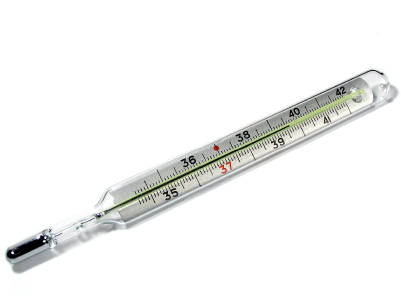
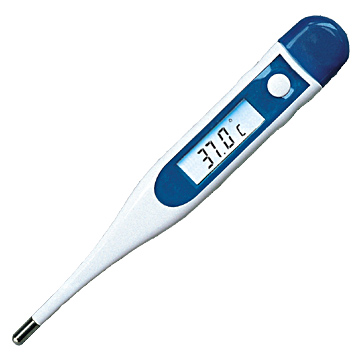
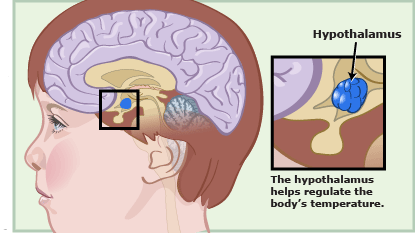
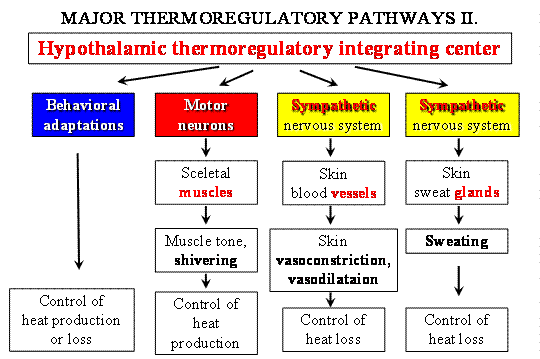

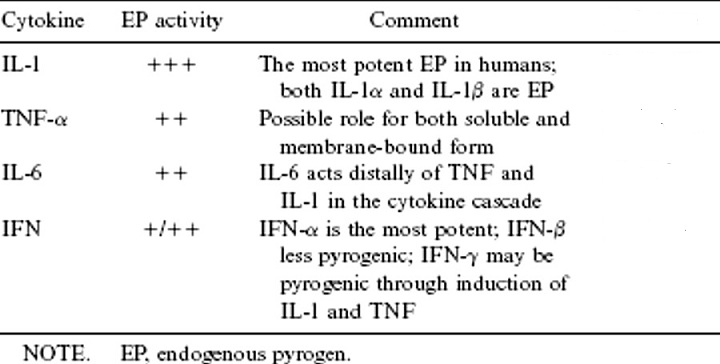
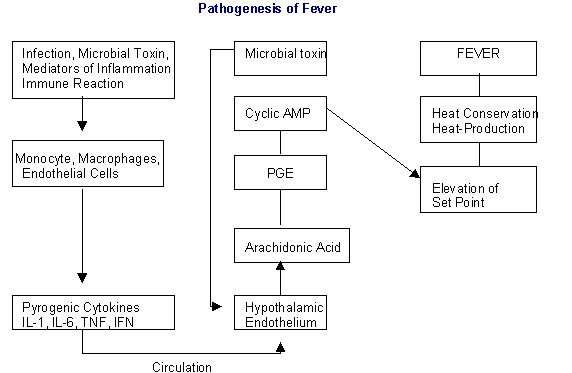

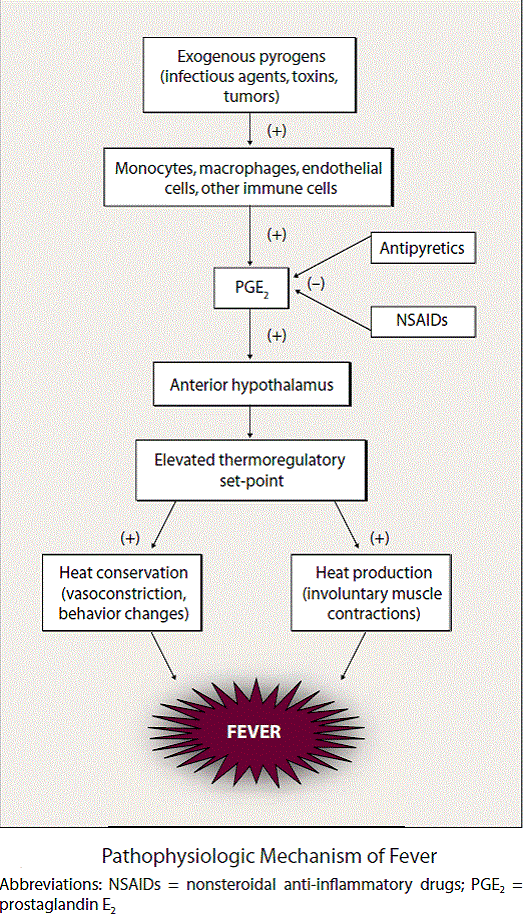
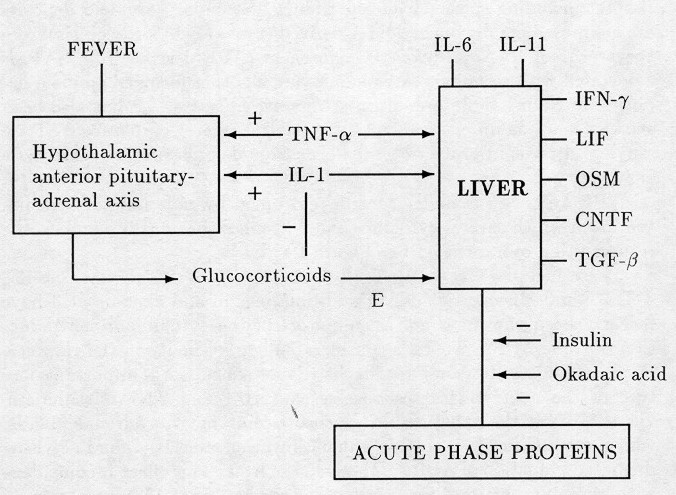

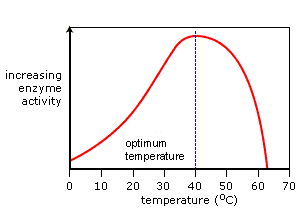
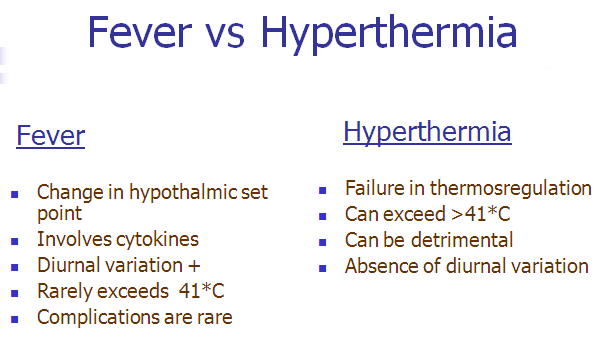
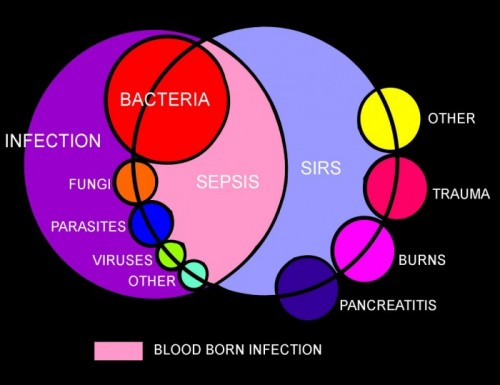
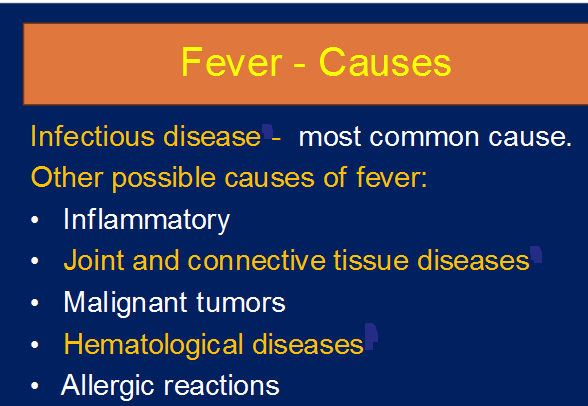
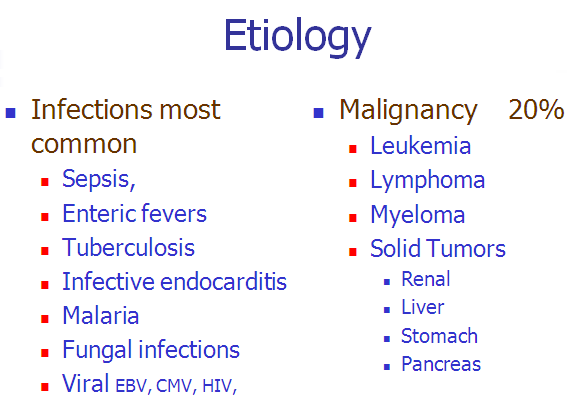
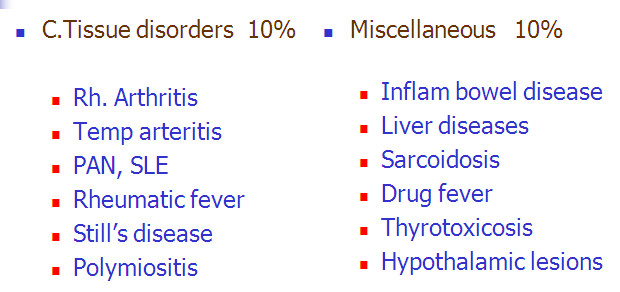
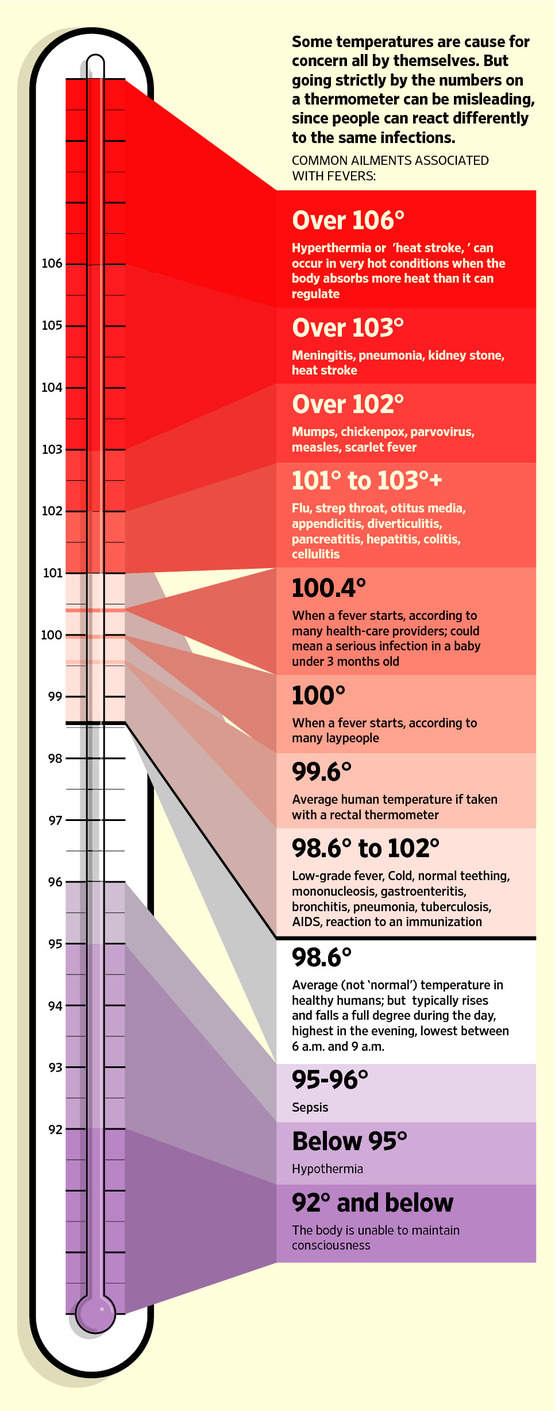
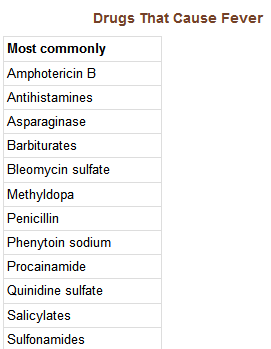
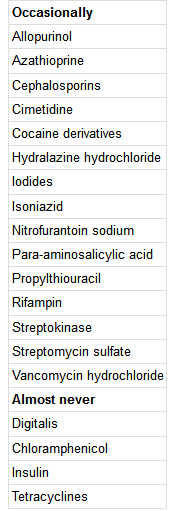

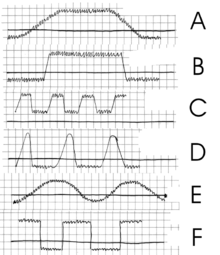

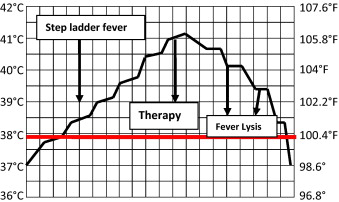
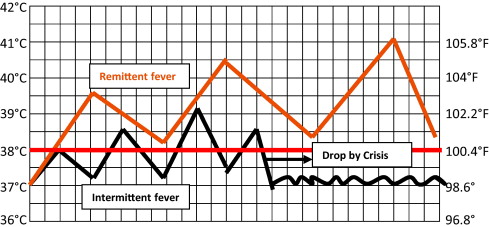
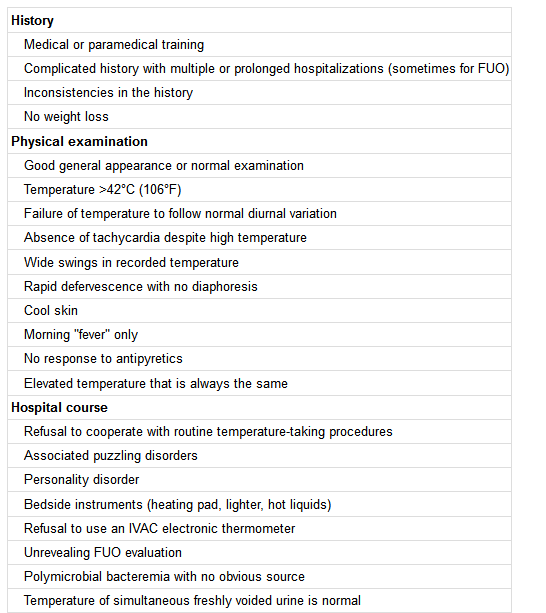
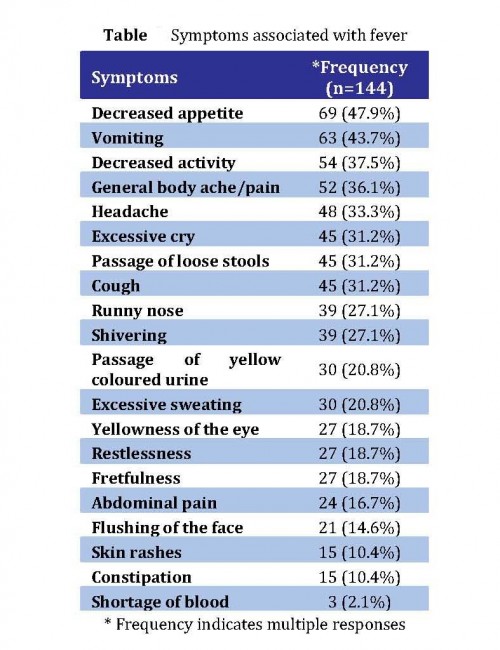
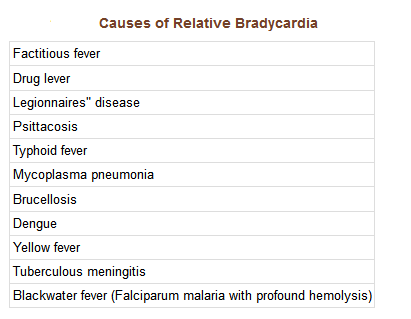
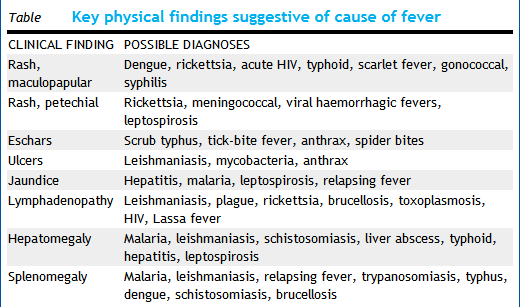


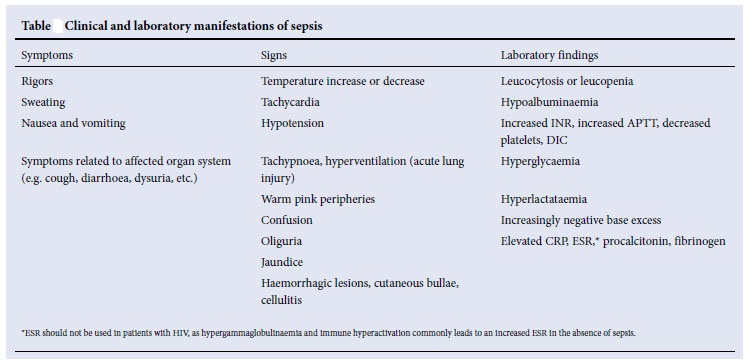

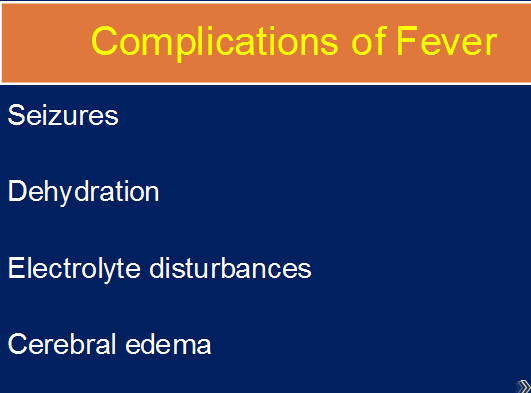

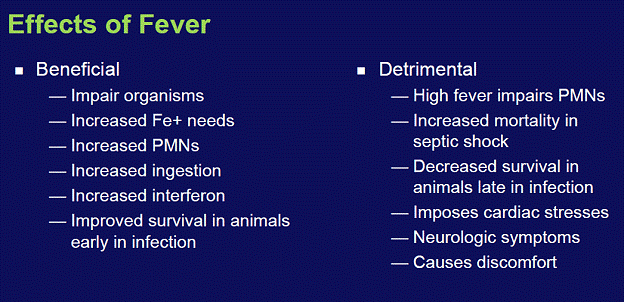




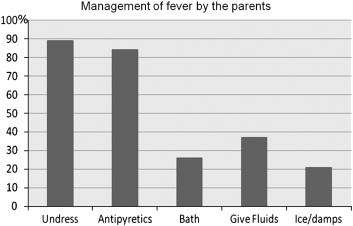
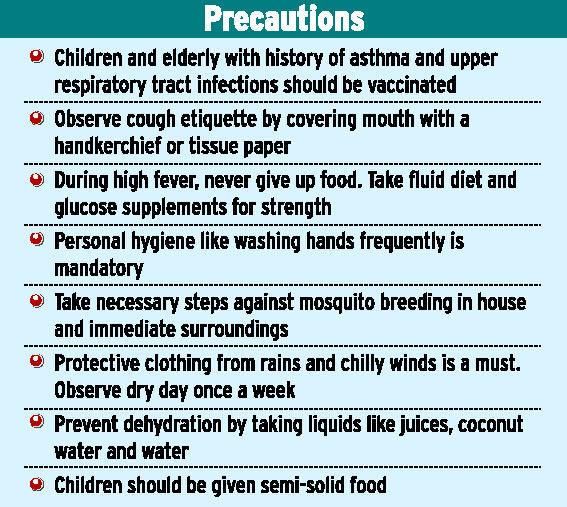
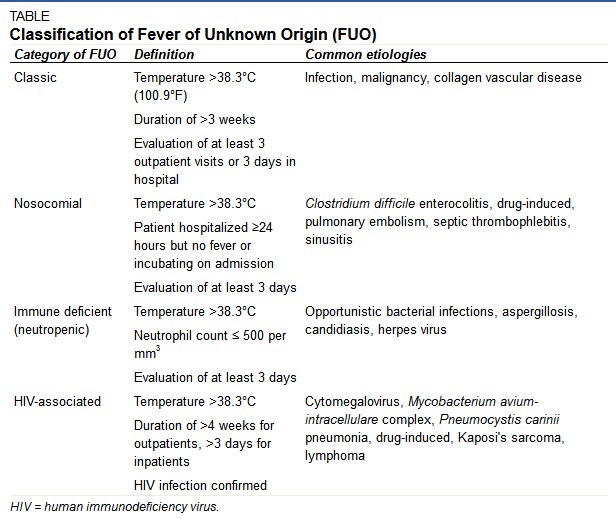
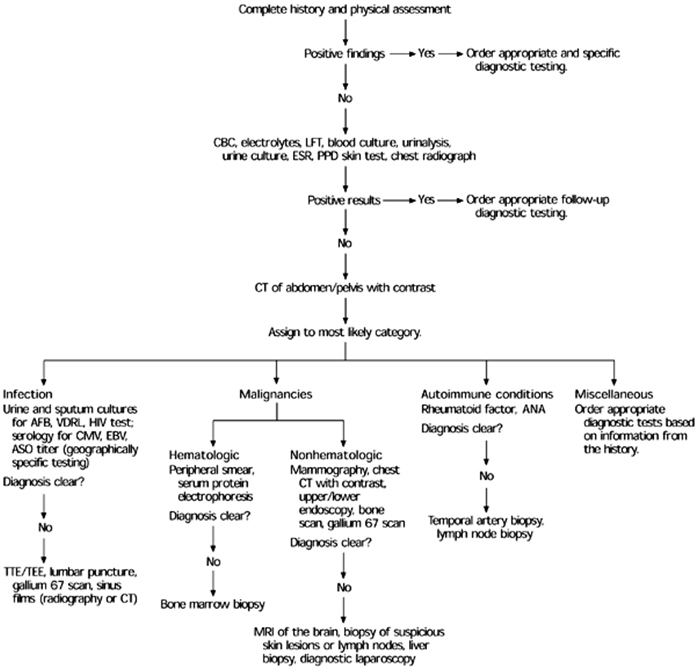
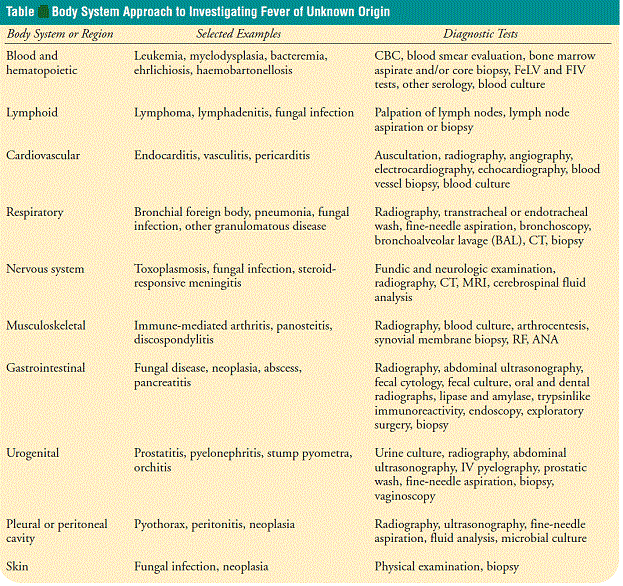
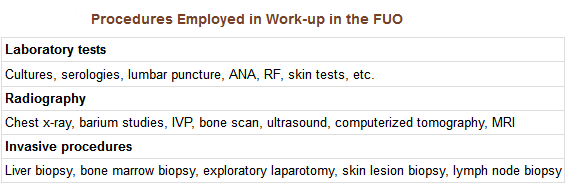
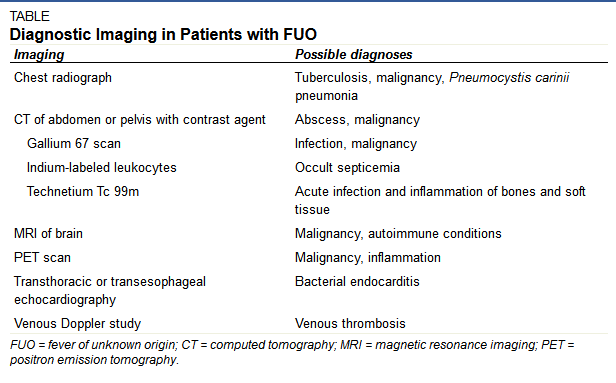

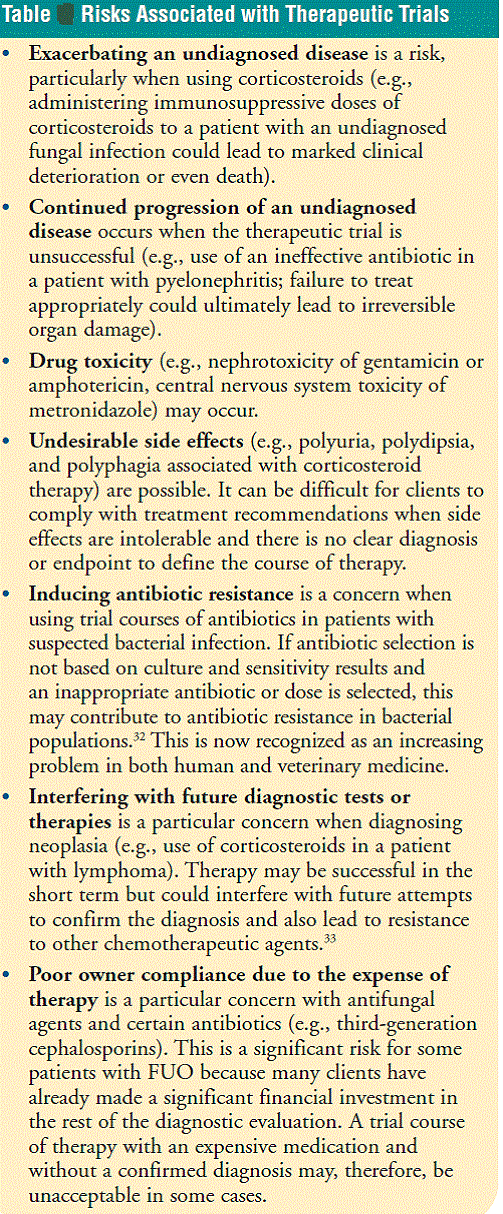

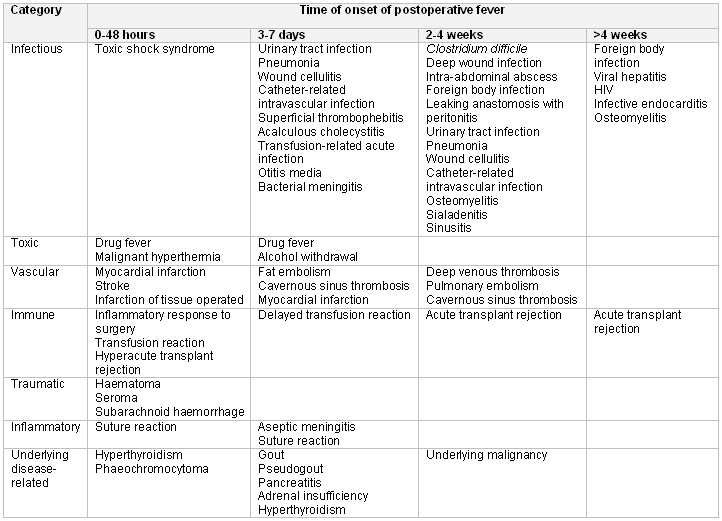

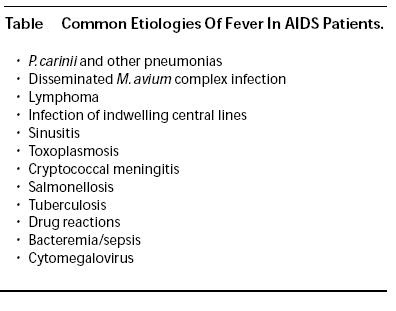
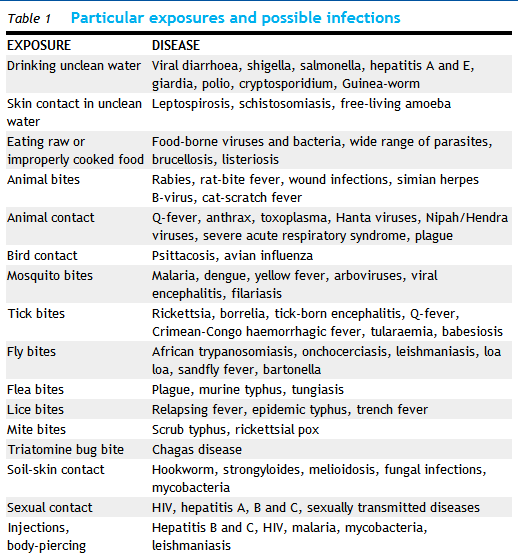

Excellent post. I certainly appreciate this website. Continue the good work!
Hi every one, here every one is sharing such knowledge, thus it’s pleasant to read this website, and I used to pay a visit this web site everyday.|
Hi, I do believe this is a great web site. I stumbledupon it 😉 I may revisit once again since i have book marked it. Money and freedom is the greatest way to change, may you be rich and continue to guide other people.
Thank you ever so for you article.Thanks Again. Really Cool.
We stumbled over here different website and thought I should check things out. I like what I see so now i am following you. Look forward to looking into your web page for a second time.|
May I just say what a relief to uncover a person that actually knows what they’re discussing on the internet. You certainly understand how to bring an issue to light and make it important. More people should read this and understand this side of your story. I was surprised that you aren’t more popular because you surely possess the gift.
You will certainly never have to worry about getting anything done again.
Itís nearly impossible to find experienced people about this topic, but you seem like you know what youíre talking about! Thanks
Pretty! This has been an incredibly wonderful post. Many thanks for providing this info.
Hi there! This blog post couldnít be written much better! Going through this article reminds me of my previous roommate! He always kept preaching about this. I most certainly will forward this article to him. Pretty sure he will have a great read. Thanks for sharing!
There’s certainly a lot to learn about this topic. I love all the points you have made.
I am regular reader, how are you everybody? This post posted at this web page is truly fastidious.
I am truly delighted to glance at this weblog posts which
carries plenty of useful facts, thanks for providing these kinds of information.
Hello, i think that i saw you visited my blog so i came to “return the favor”.I’m trying to find things to enhance my site!I suppose its ok to use some of your ideas!!
What’s Happening i’m new to this, I stumbled upon this I’ve found It absolutely helpful and it has helped me out loads.
I hope to give a contribution & help different users like its aided me.
Great job.
Thanks for sharing, this is a fantastic article.Thanks Again. Much obliged.
Thanks so much for the blog post. Great.
I am so grateful for your article post.
“I am often to blogging and i really appreciate your content. The article has really peaks my interest. I am going to bookmark your site and keep checking for new information.”
I enjoy what you guys are up too. This sort of clever work and coverage! Keep up the superb works guys I’ve you guys to blogroll.
Its like you read my mind! You appear to know so much about this, like you wrote the book in it
or something. I think that you could do with some pics to drive the message home a little
bit, but other than that, this is fantastic blog. An excellent
read. I’ll definitely be back.
I sorry for bad English.Wonderful work! This is the type of information that should be shared around the web. Disgrace on the seek engines for not positioning this put up upper! Come on over and consult with my website . Thanks =)
Genuinely Fairly remarkable website. Extremely amazing toward go by way of and astonishingly much interesting data. Unquestionably yr is made up of not nevertheless happen once more and greet.